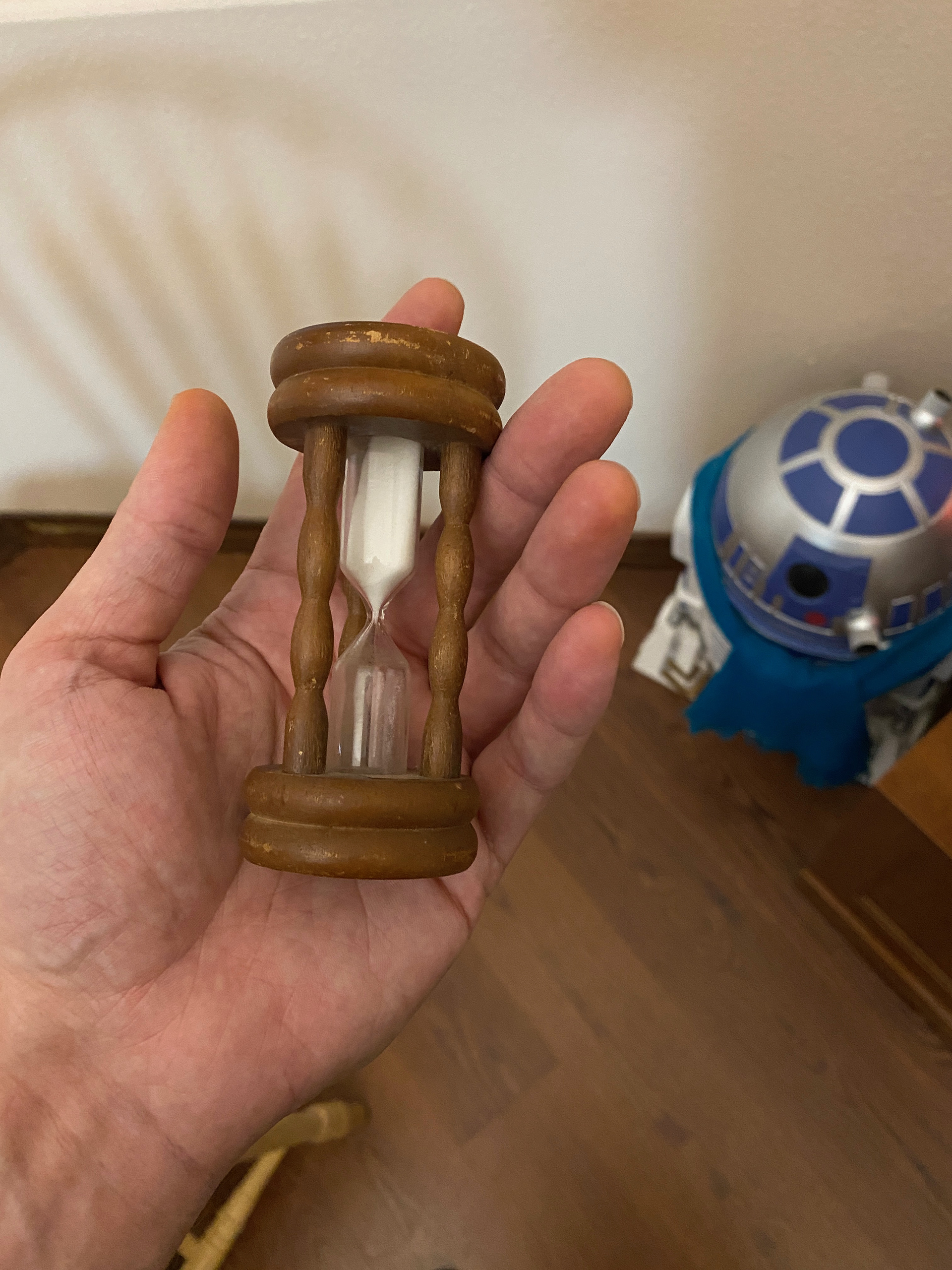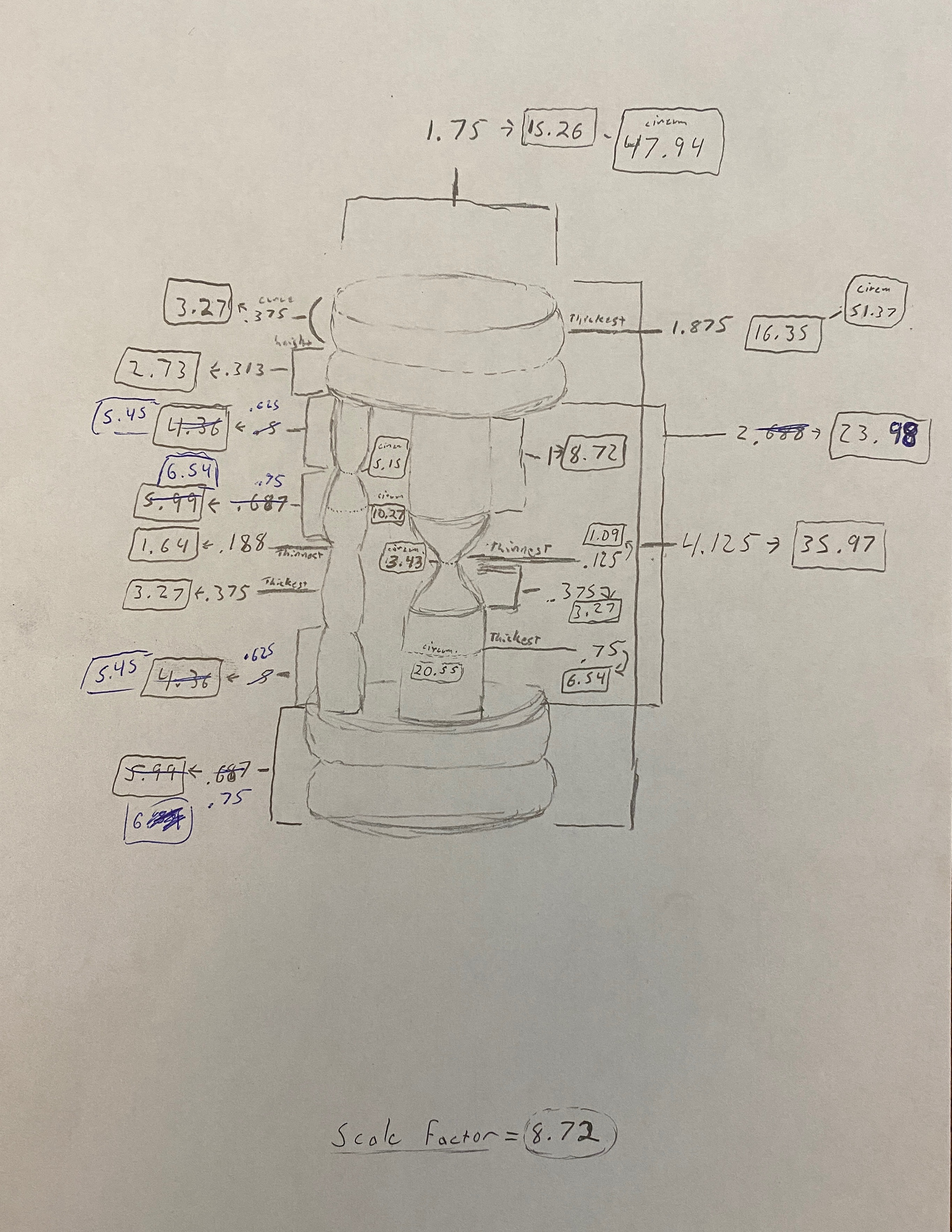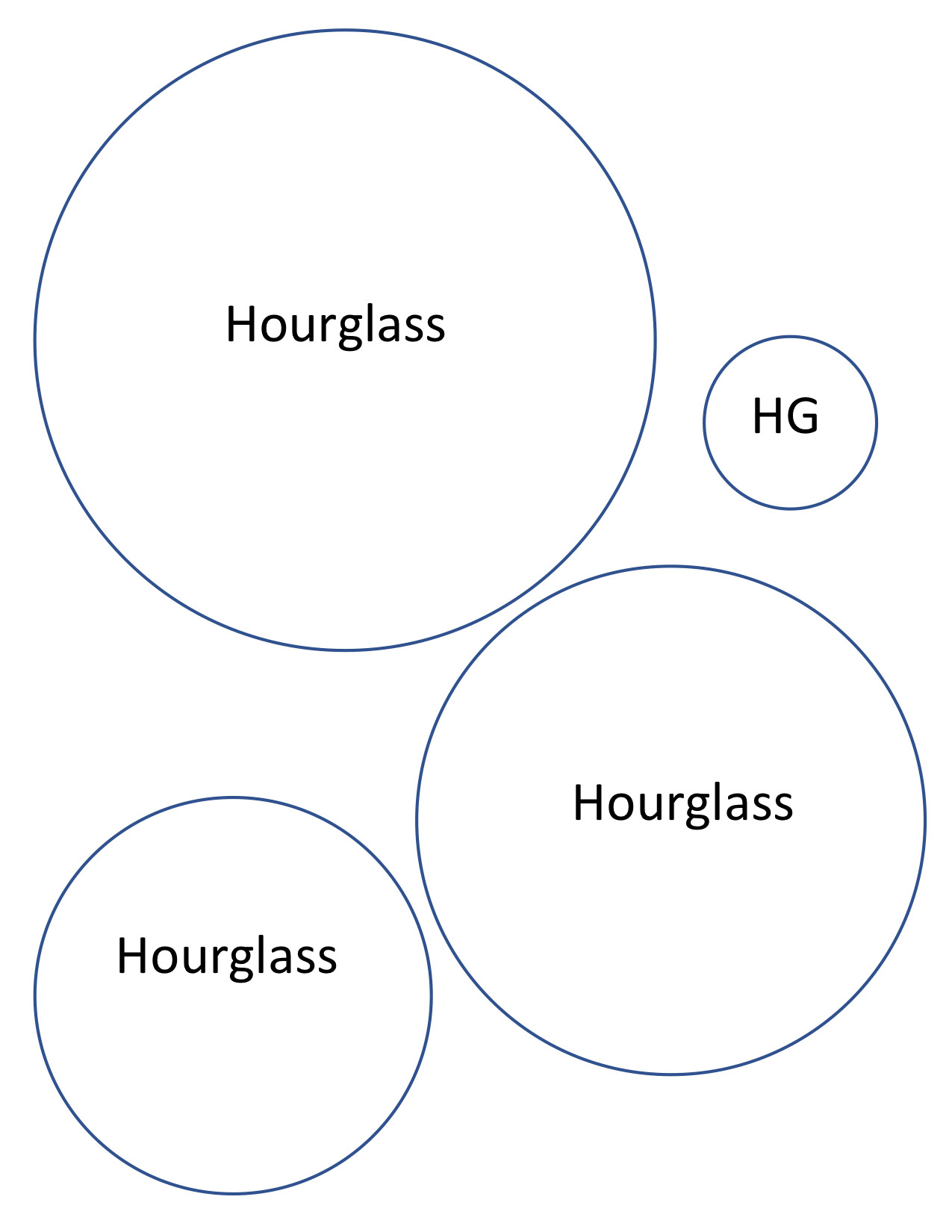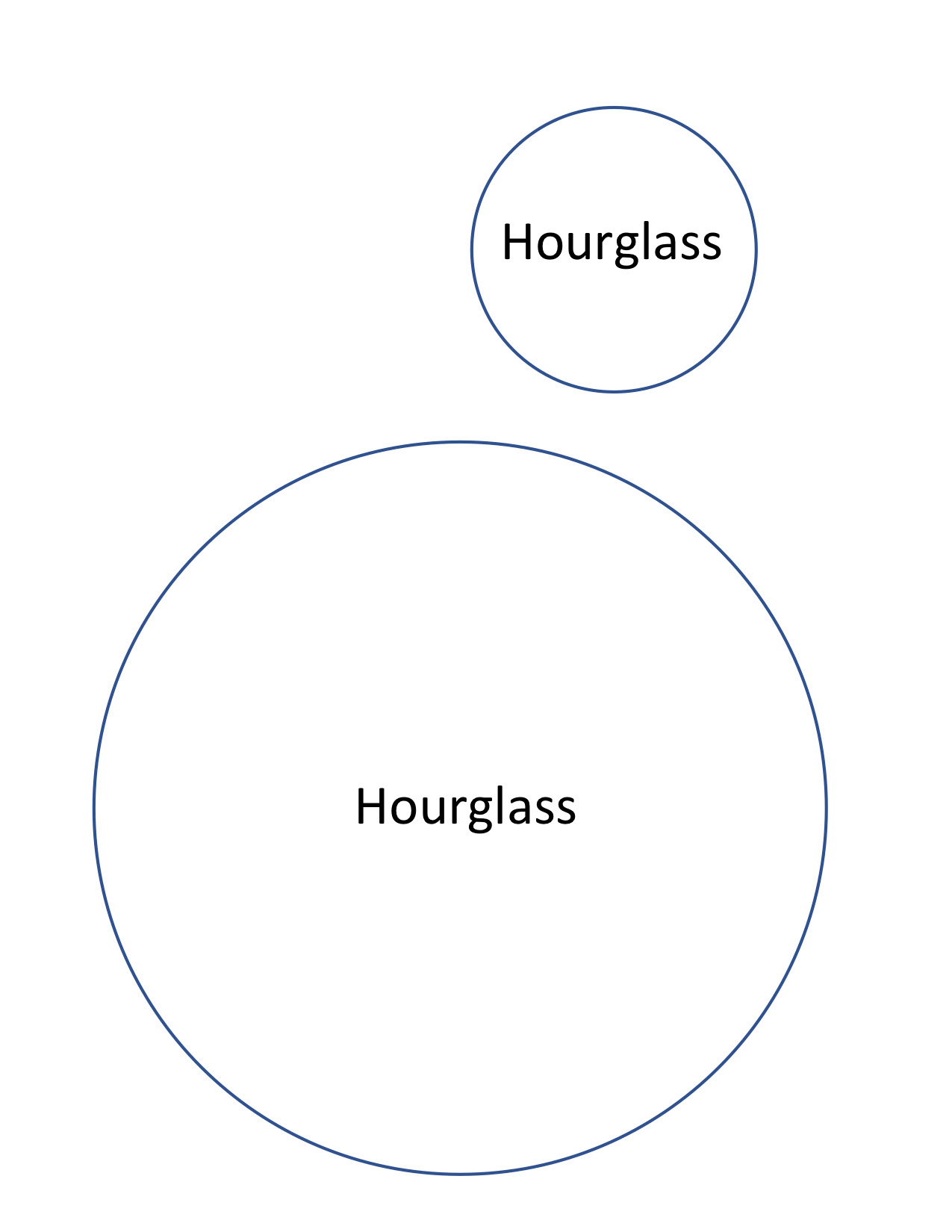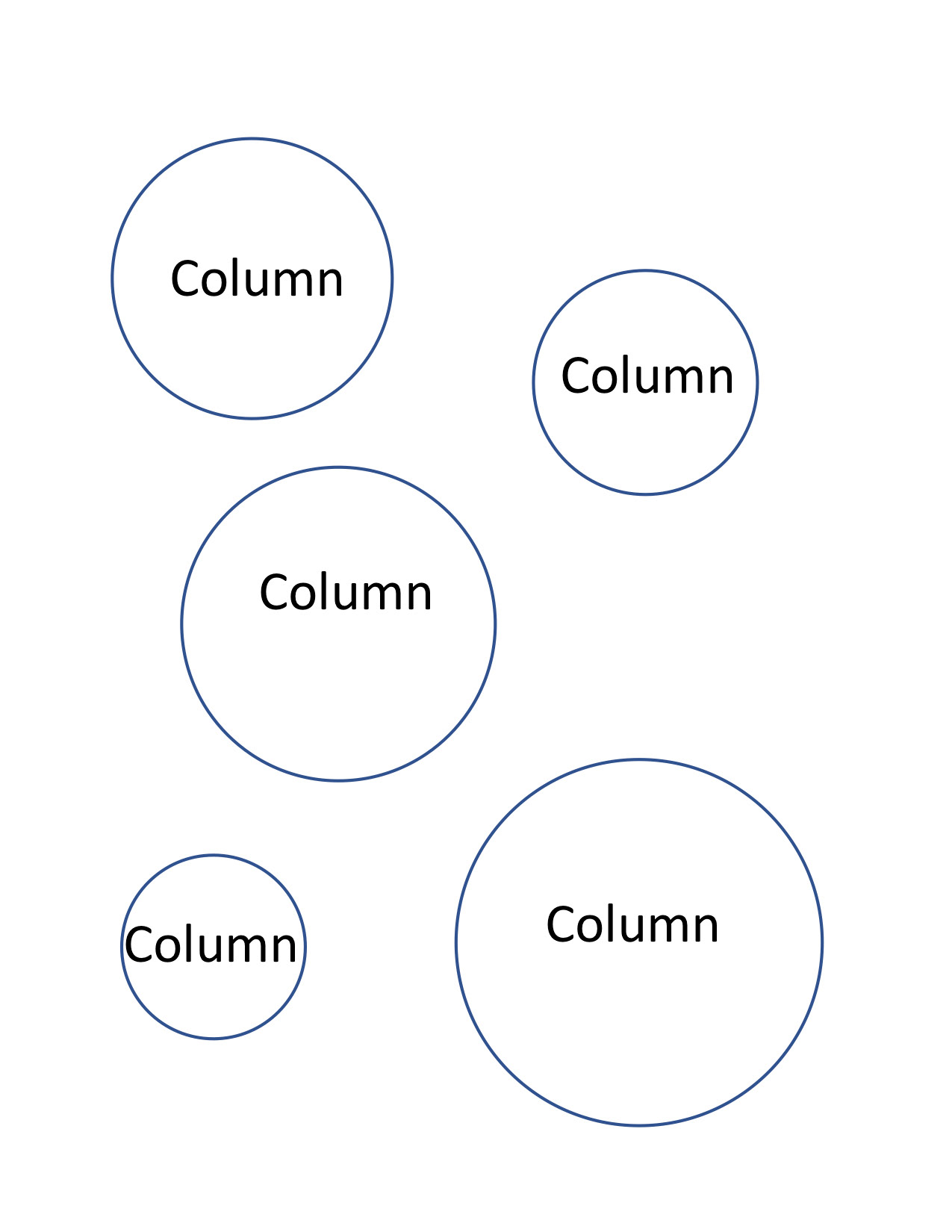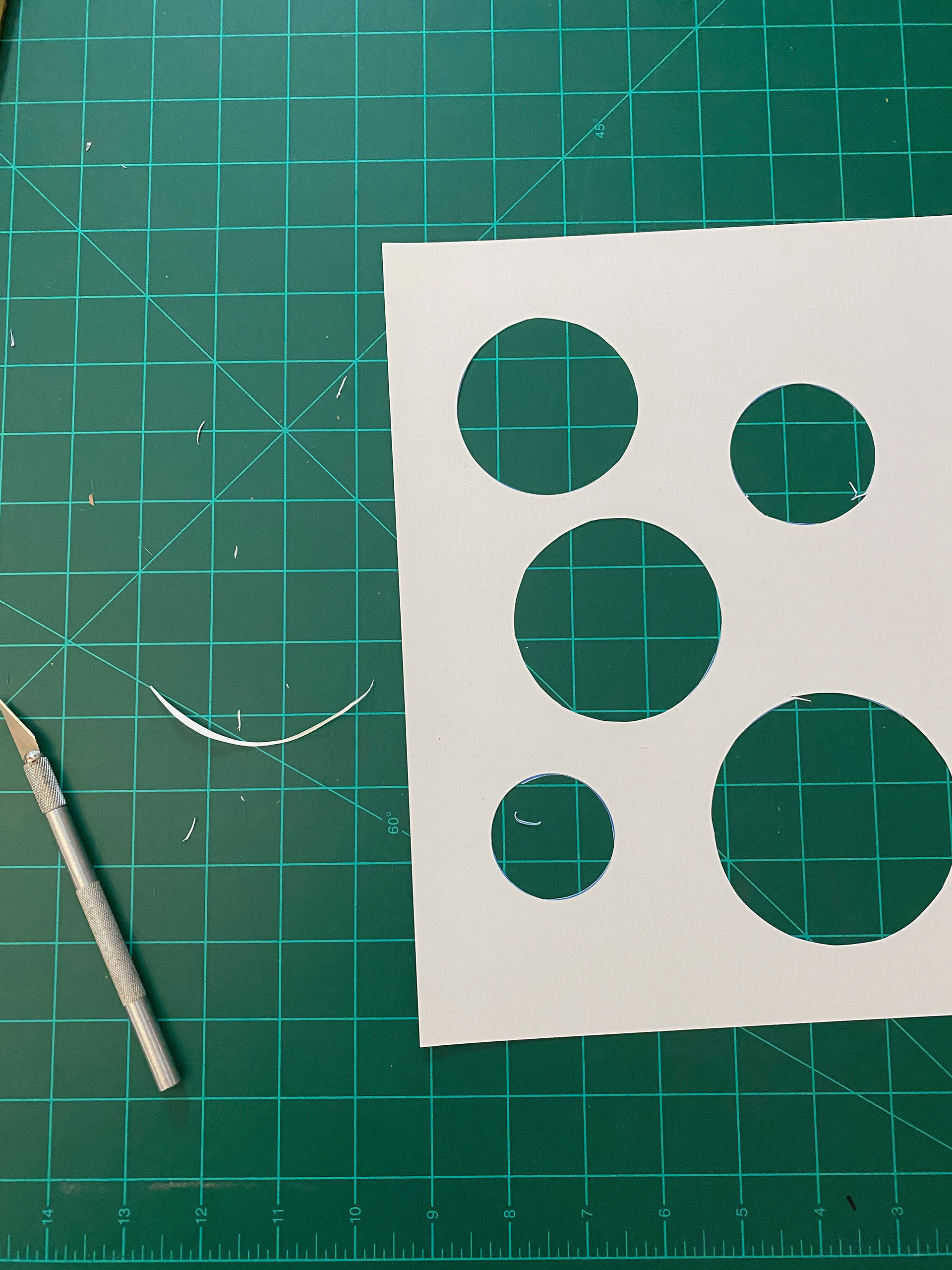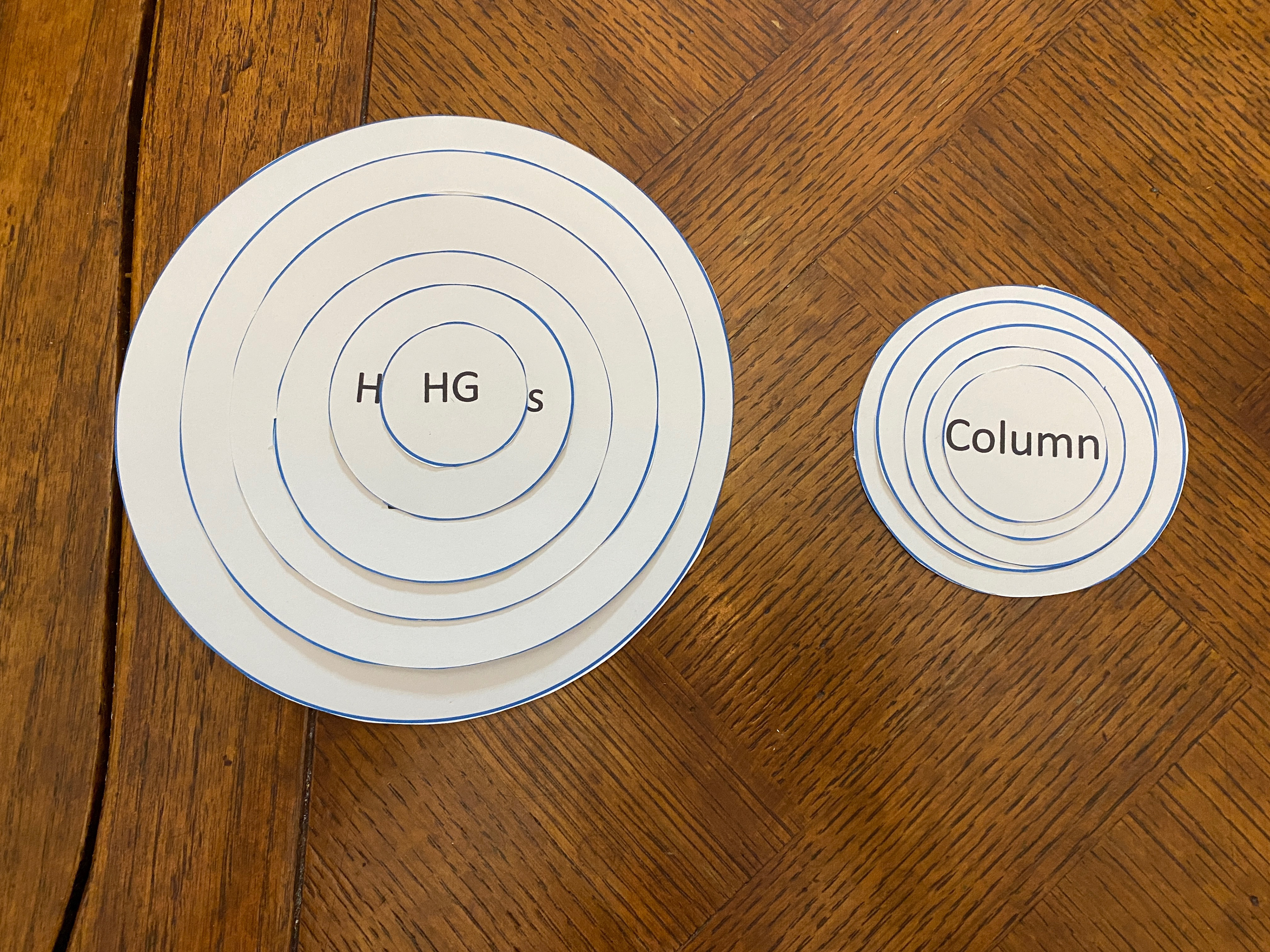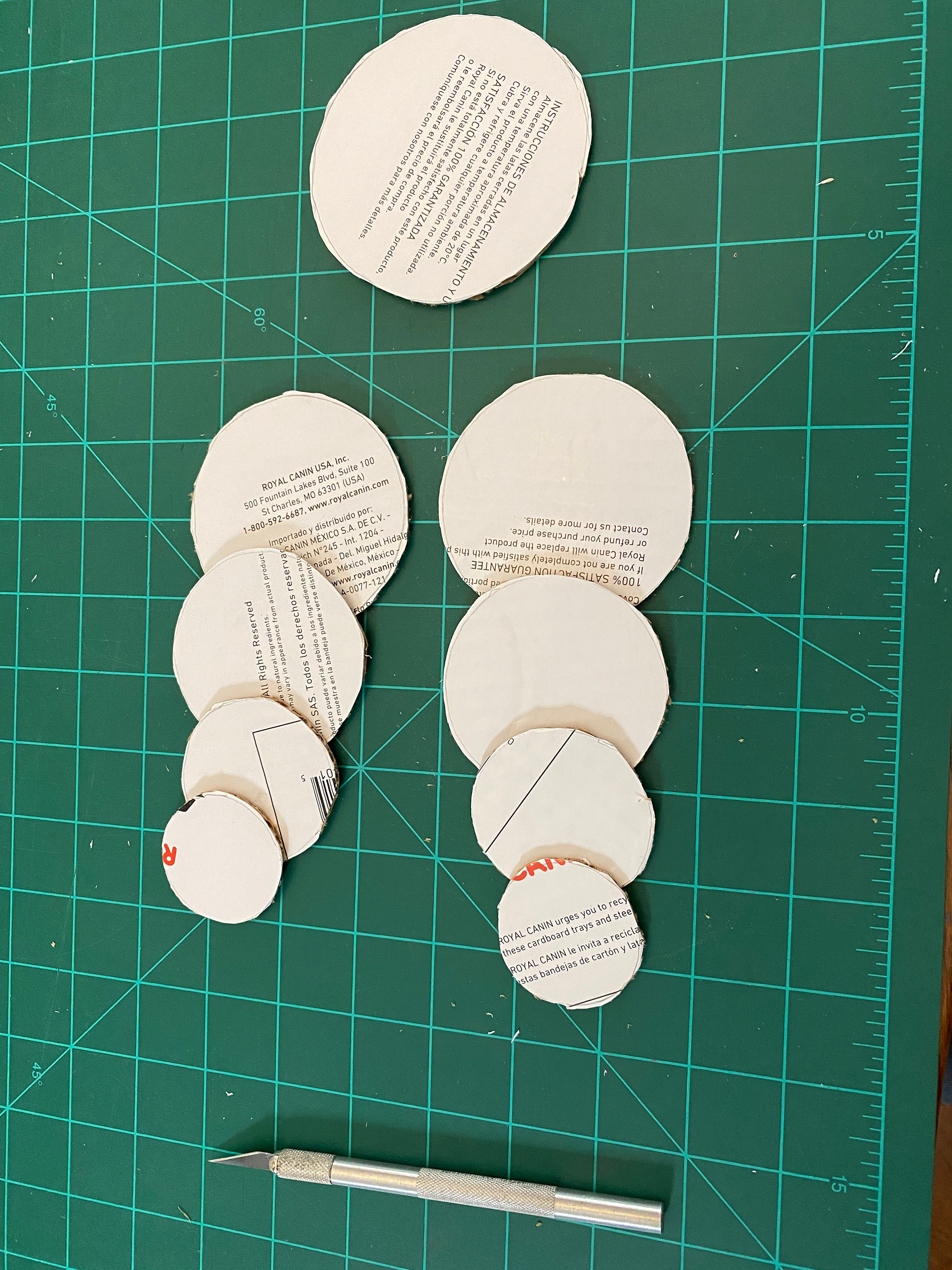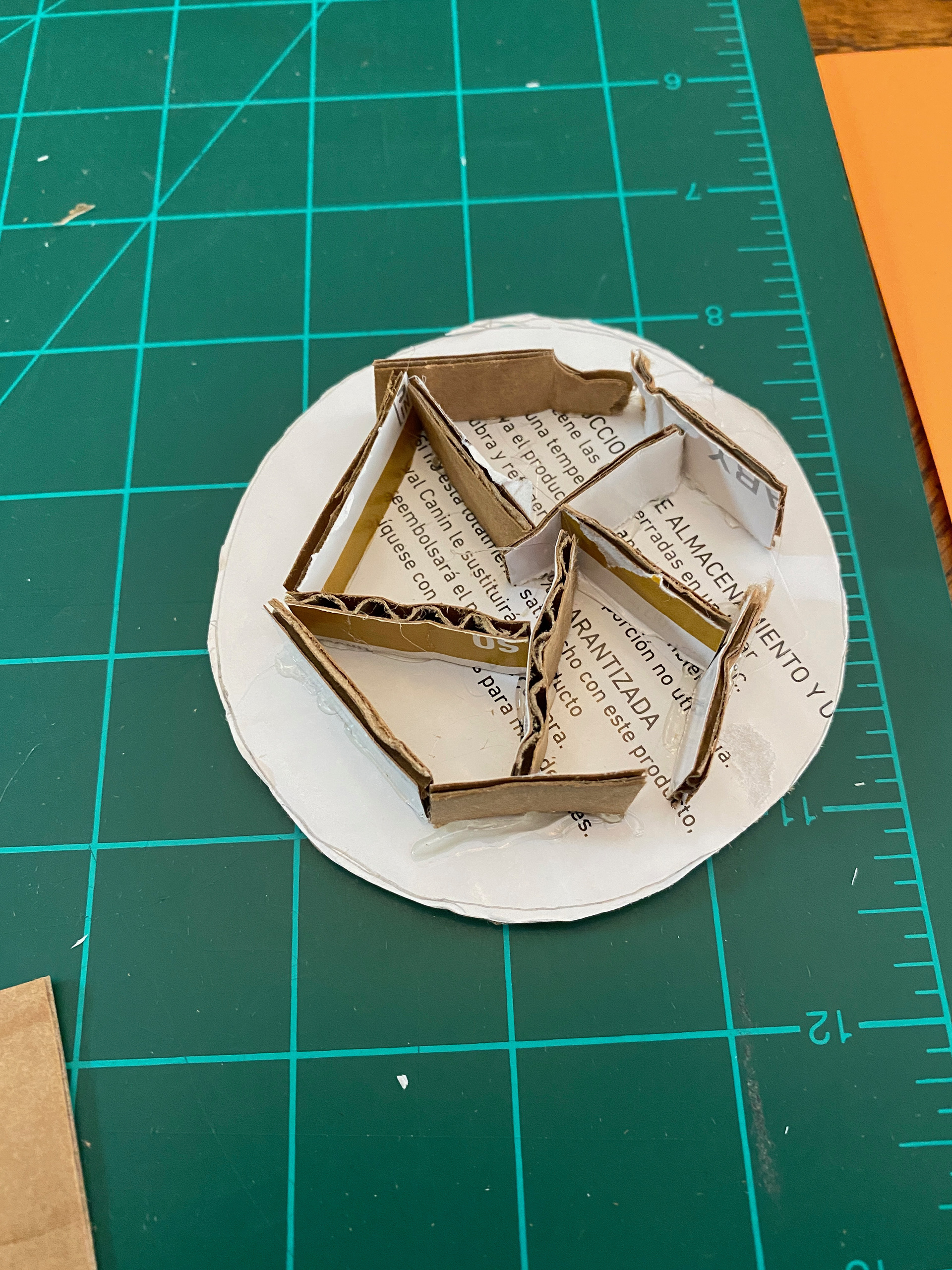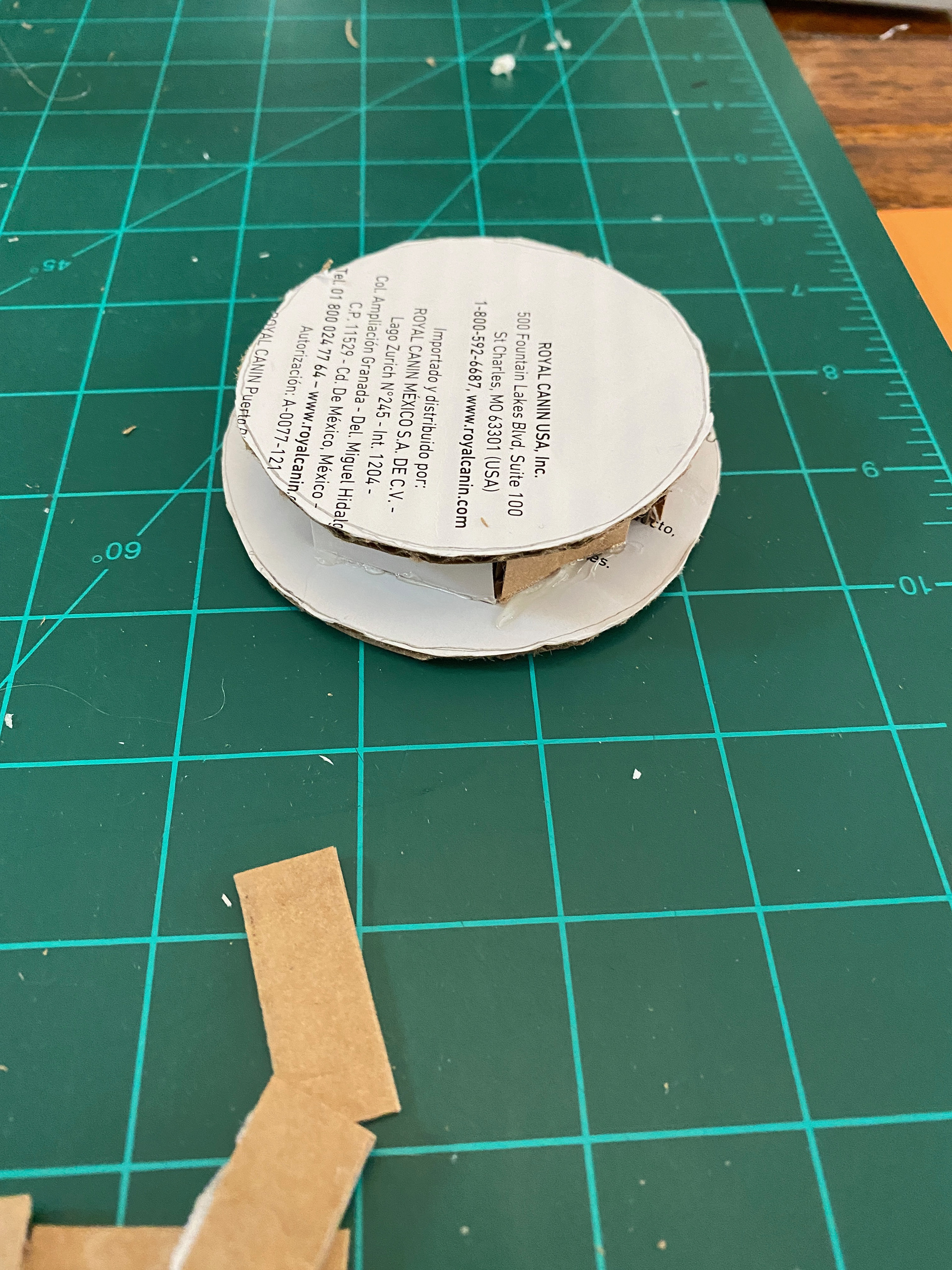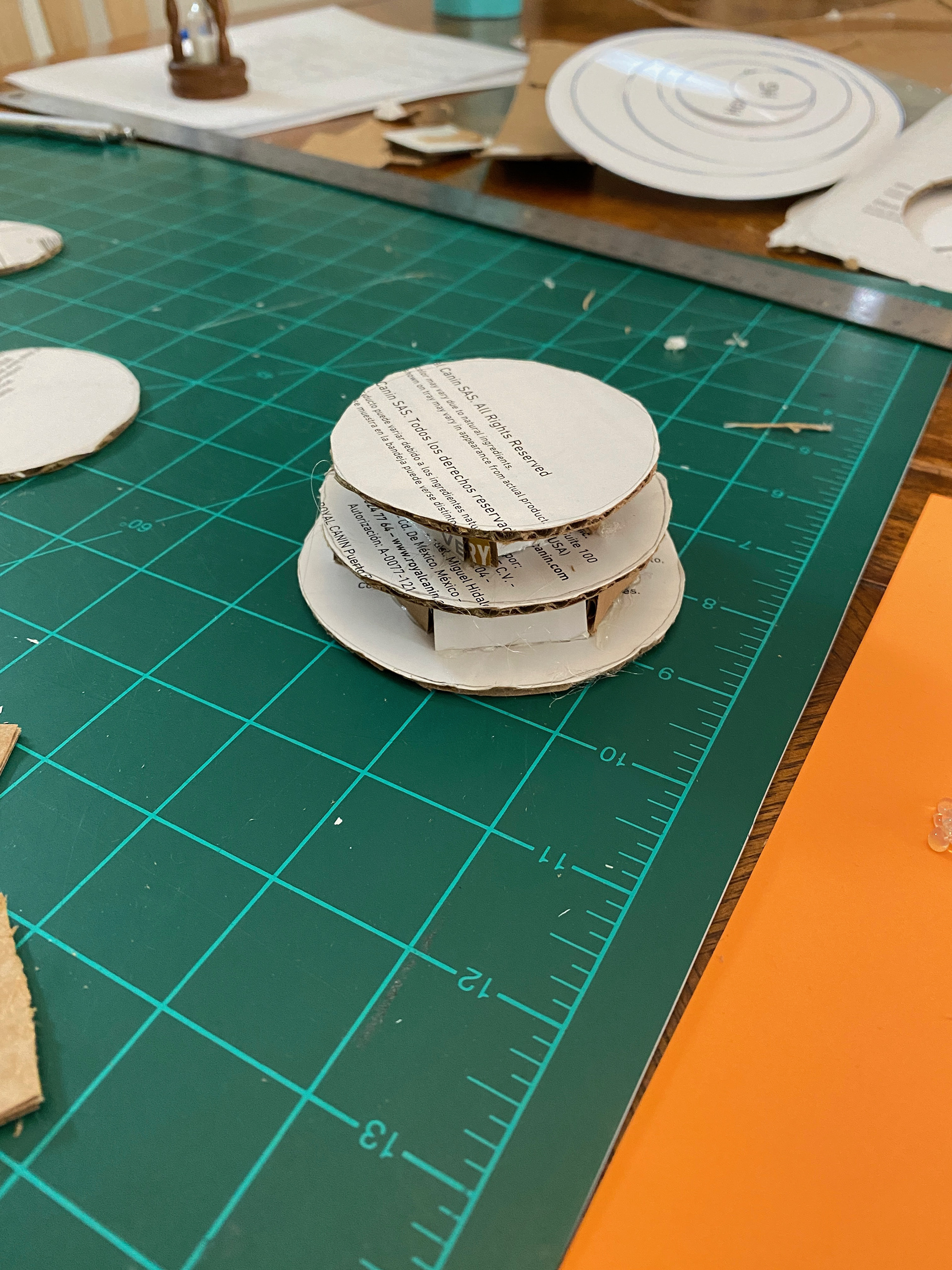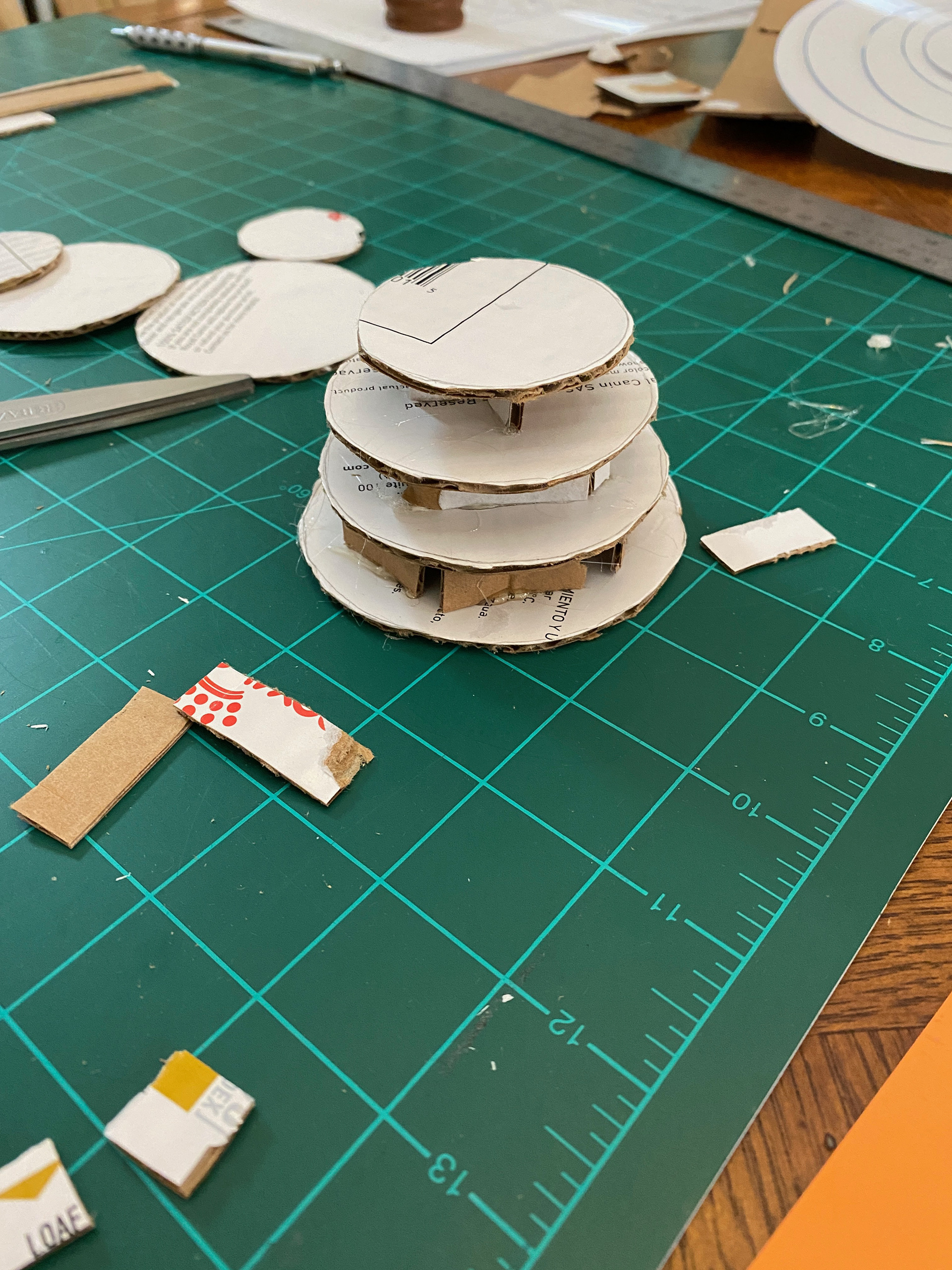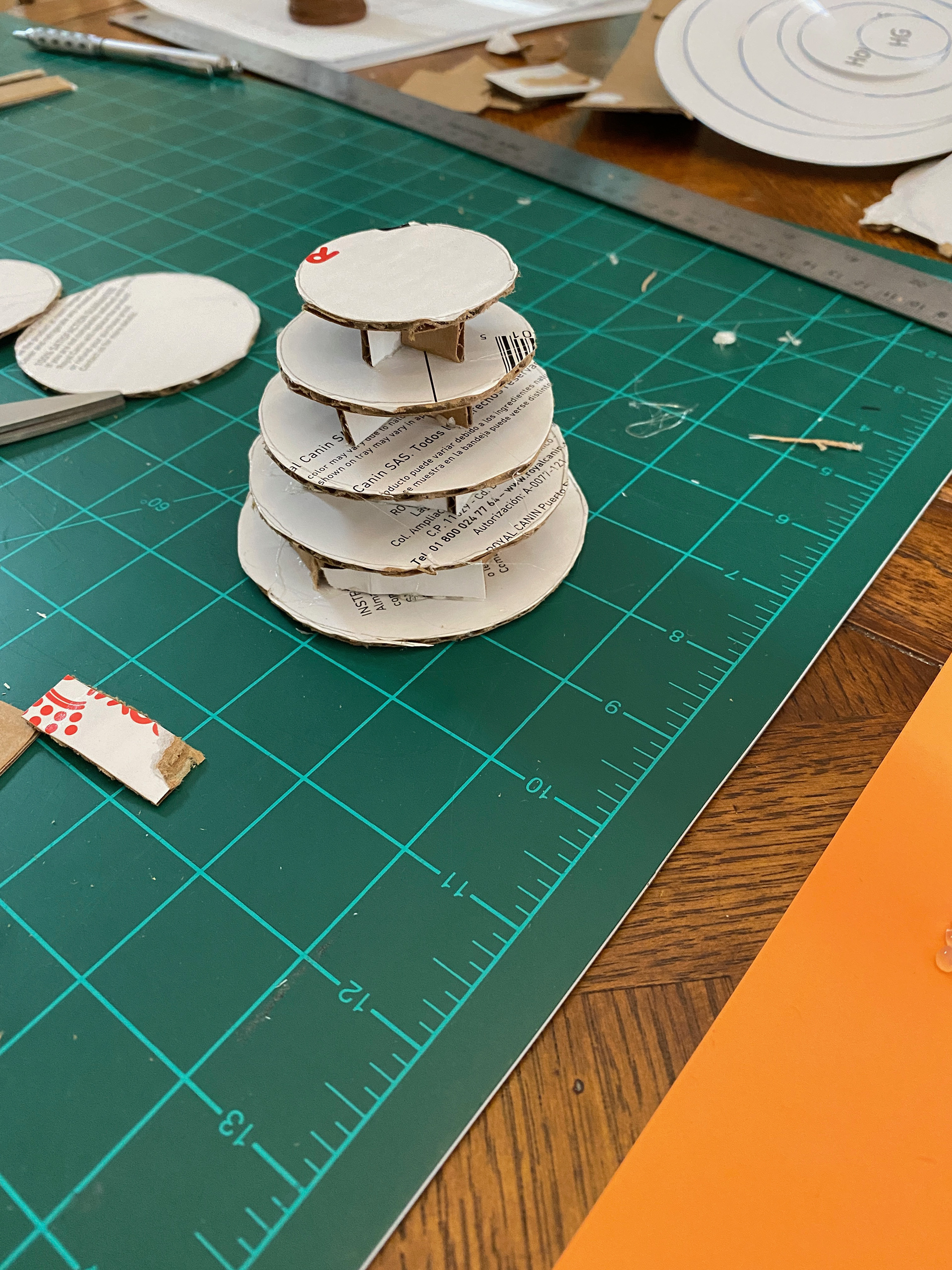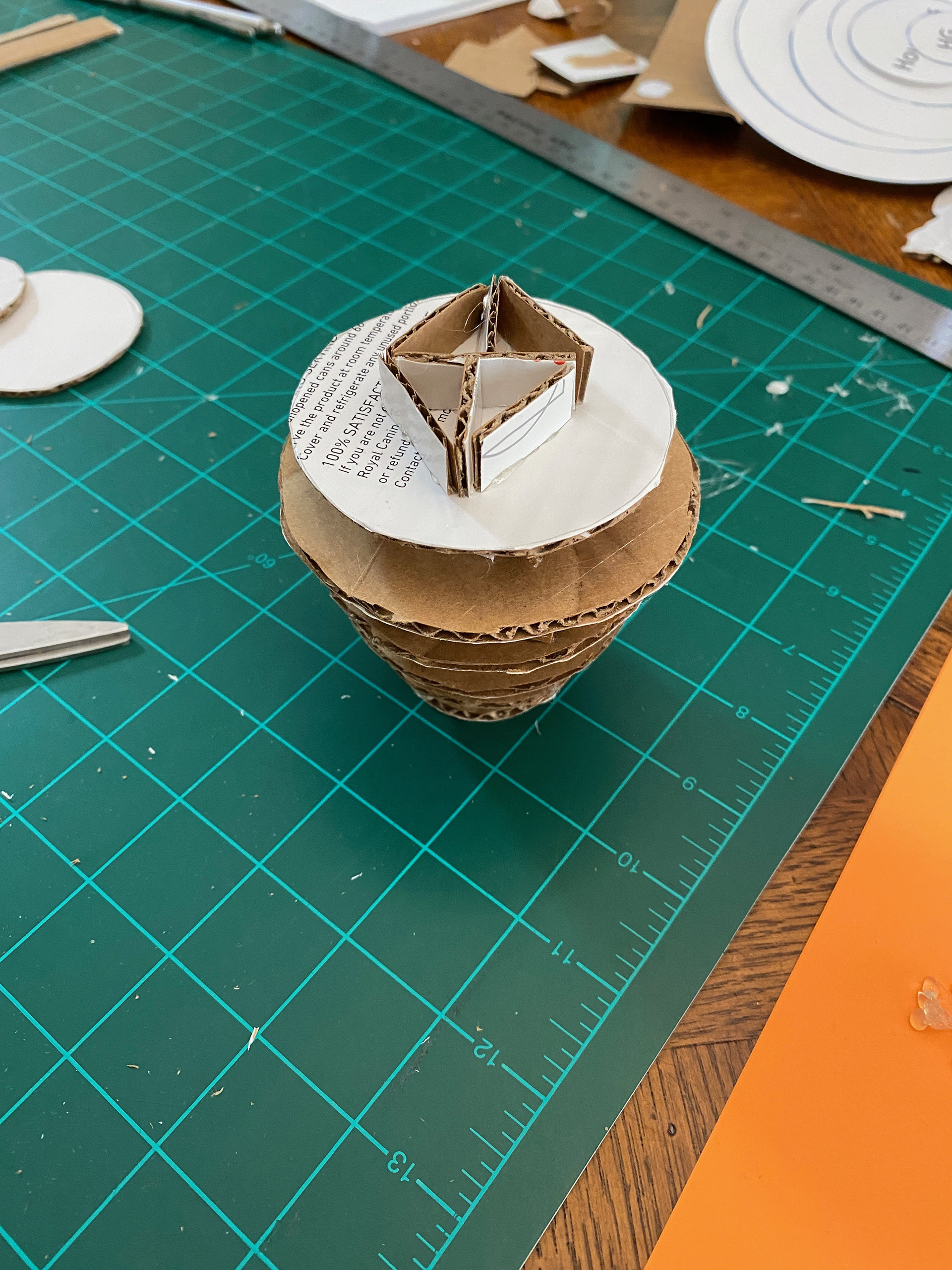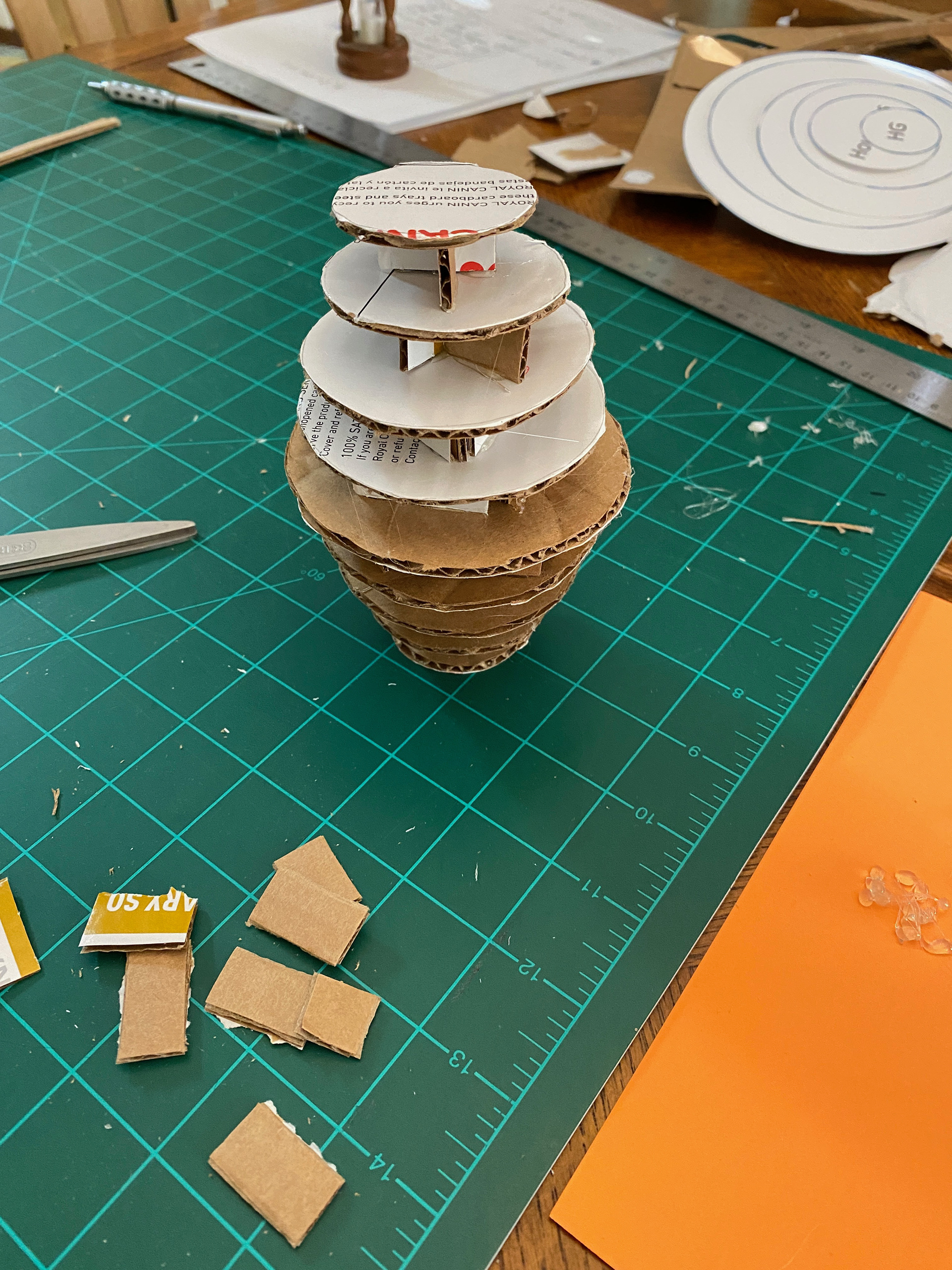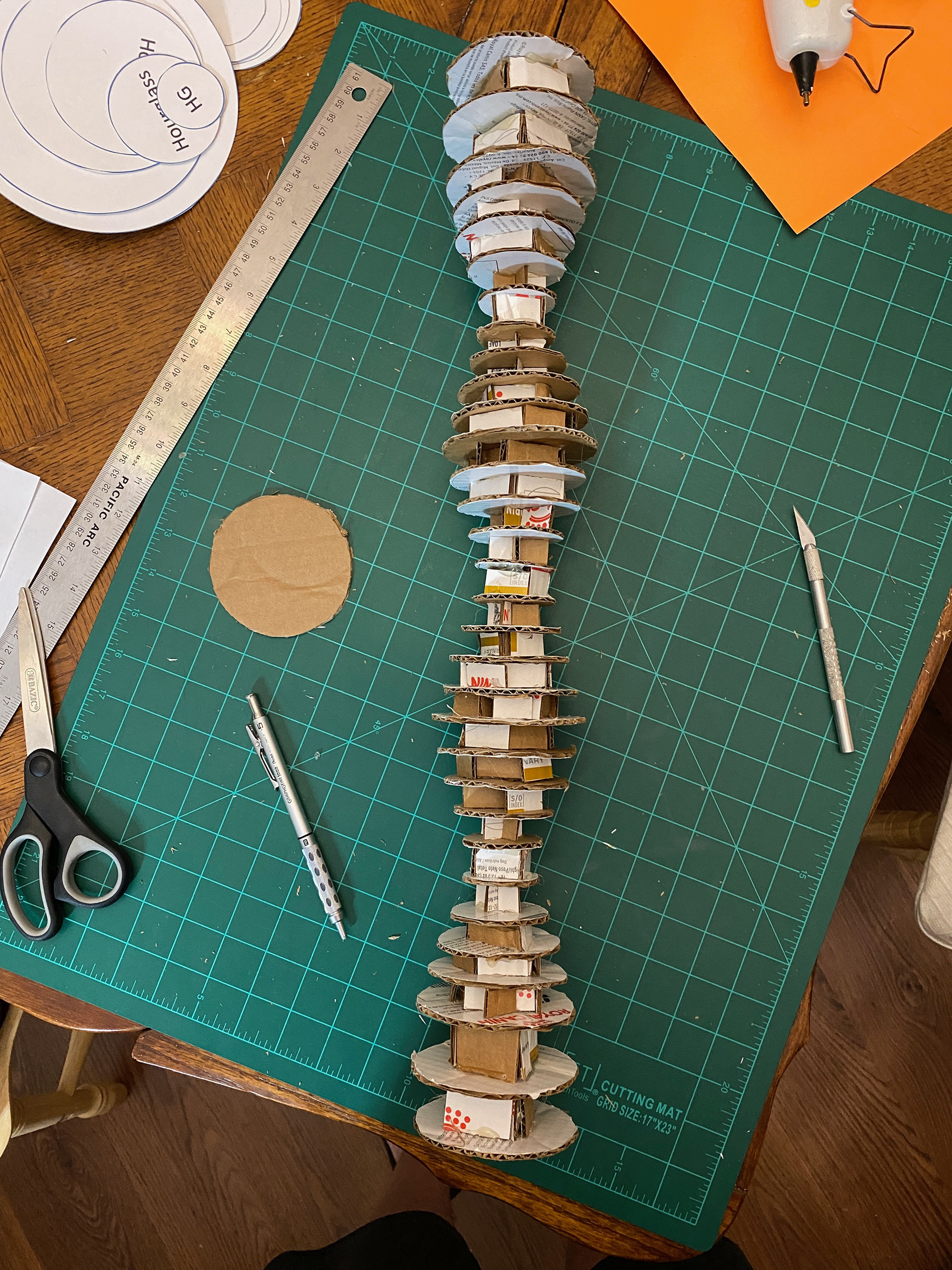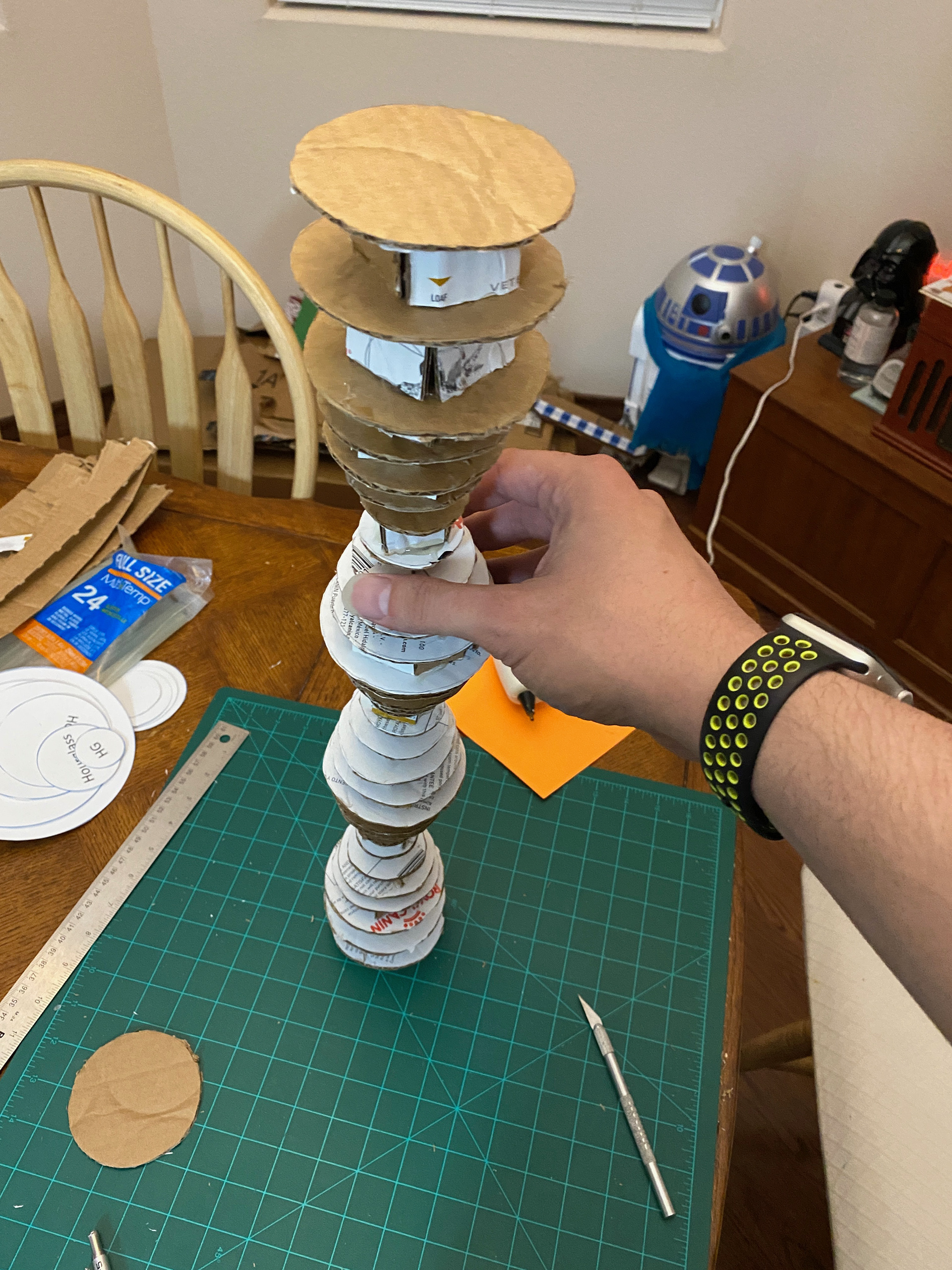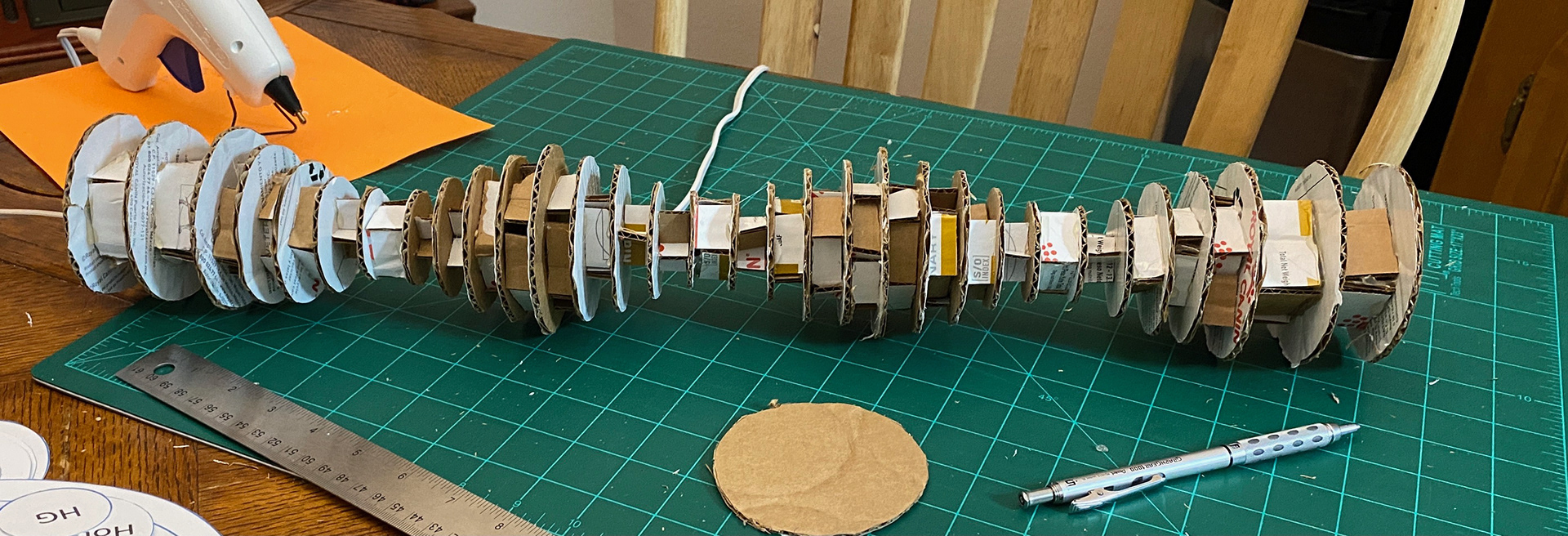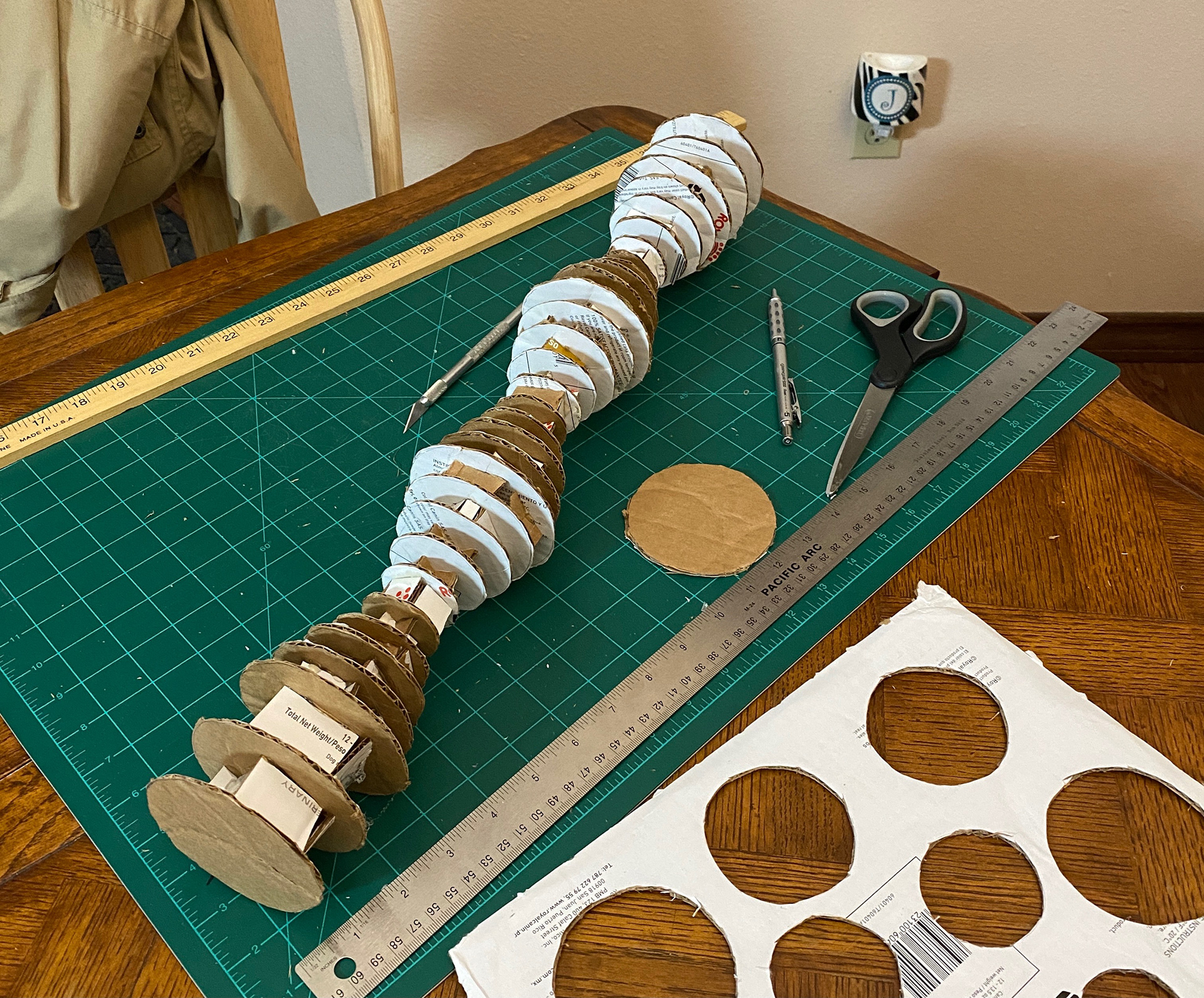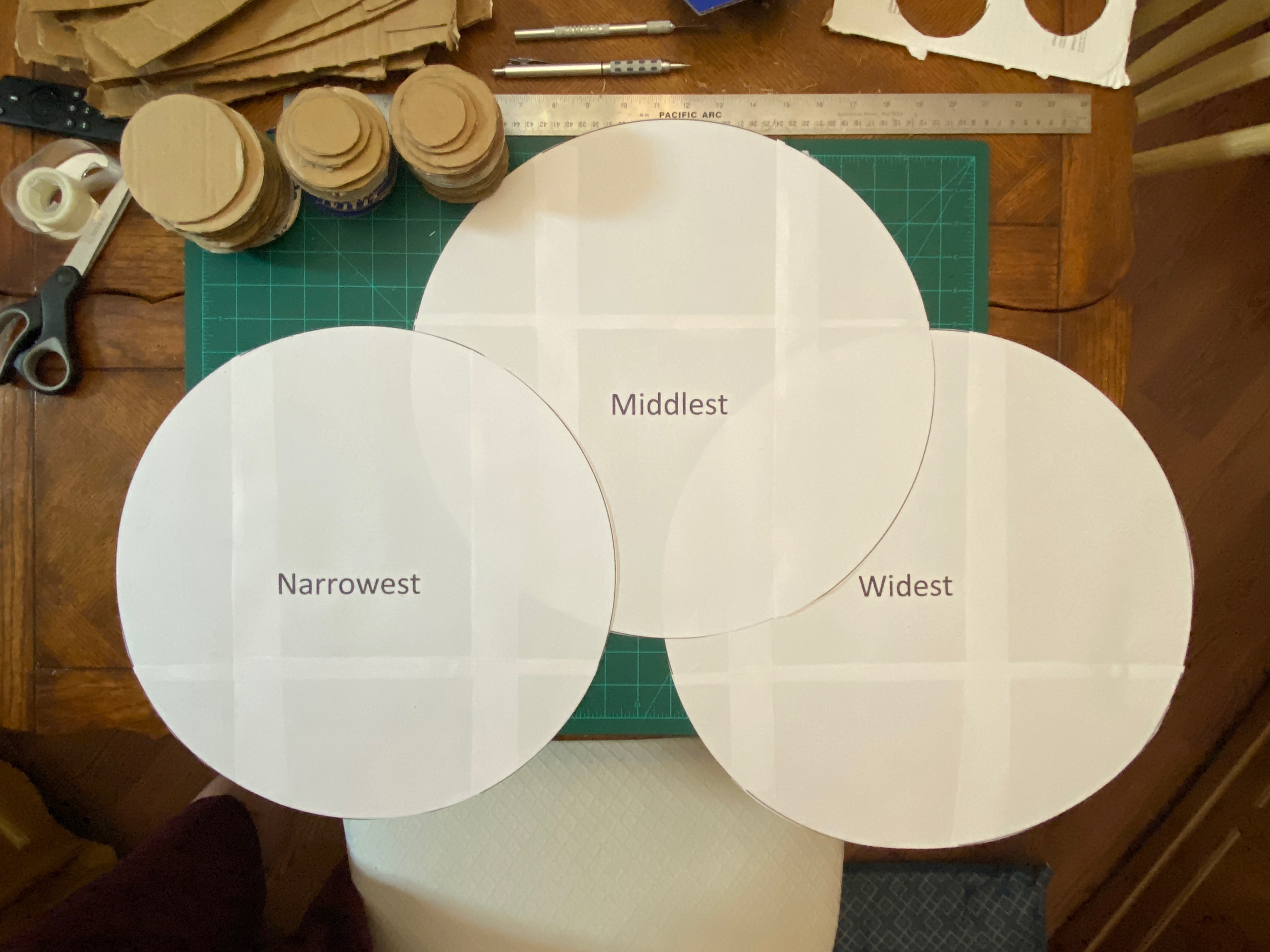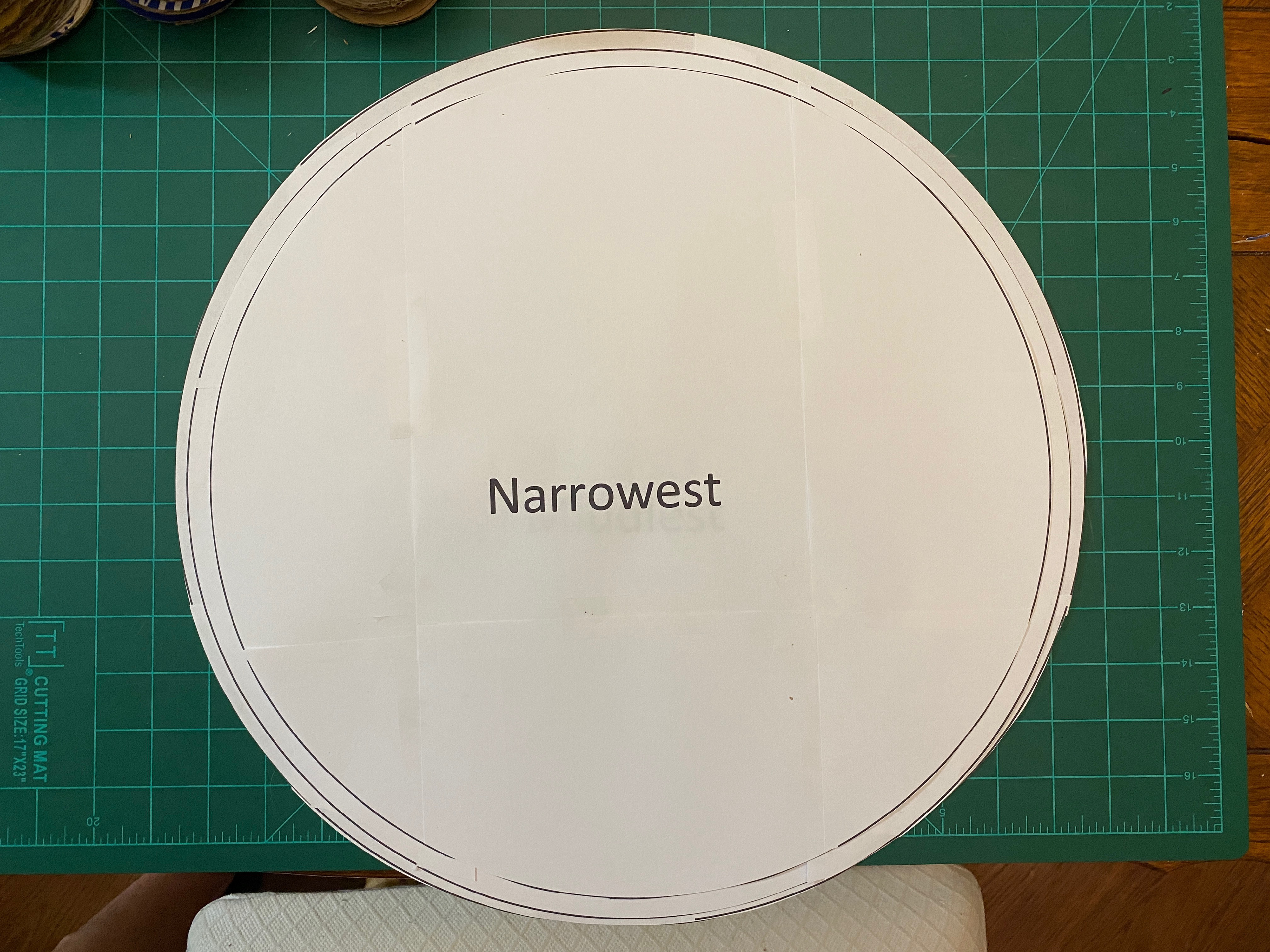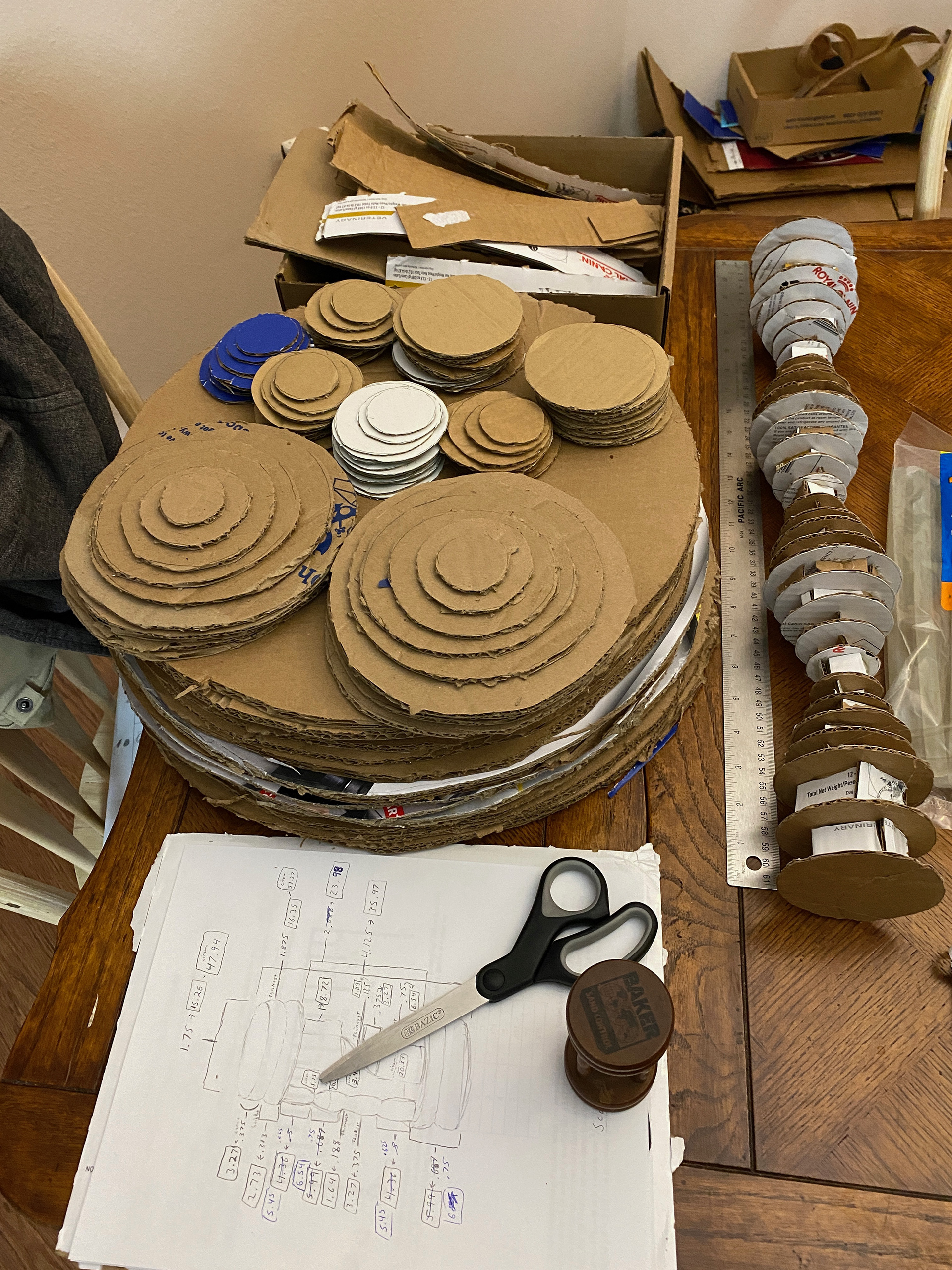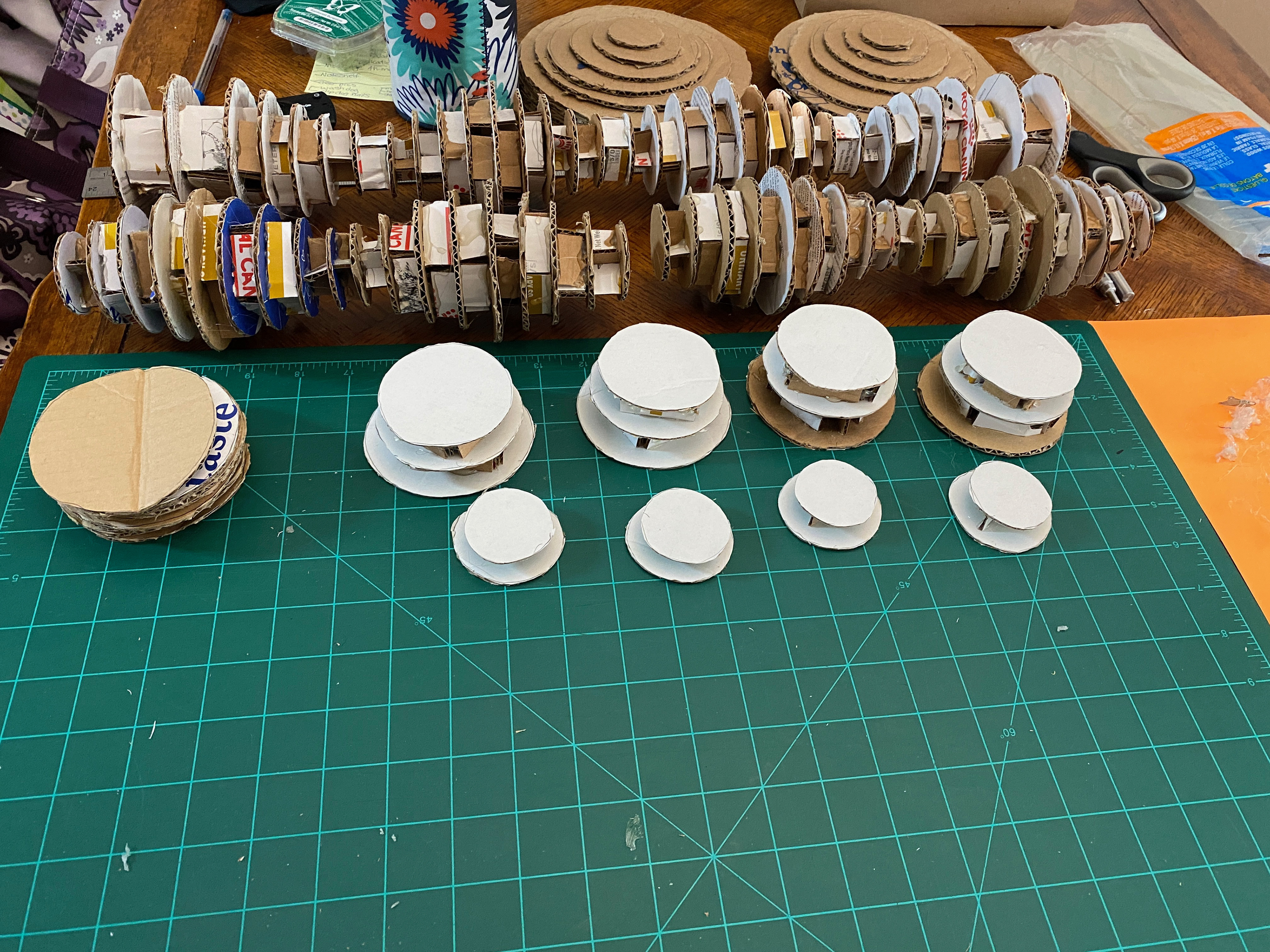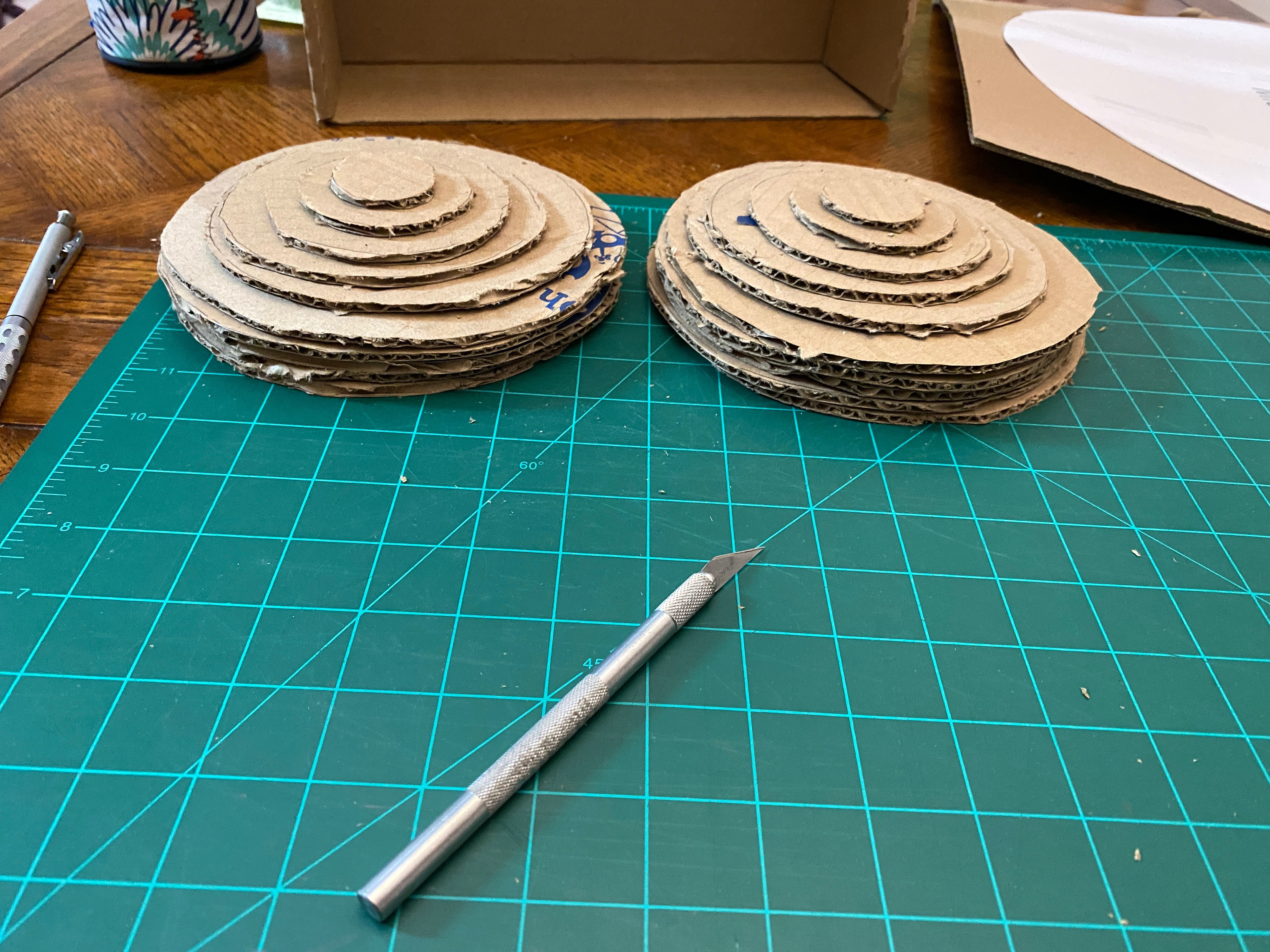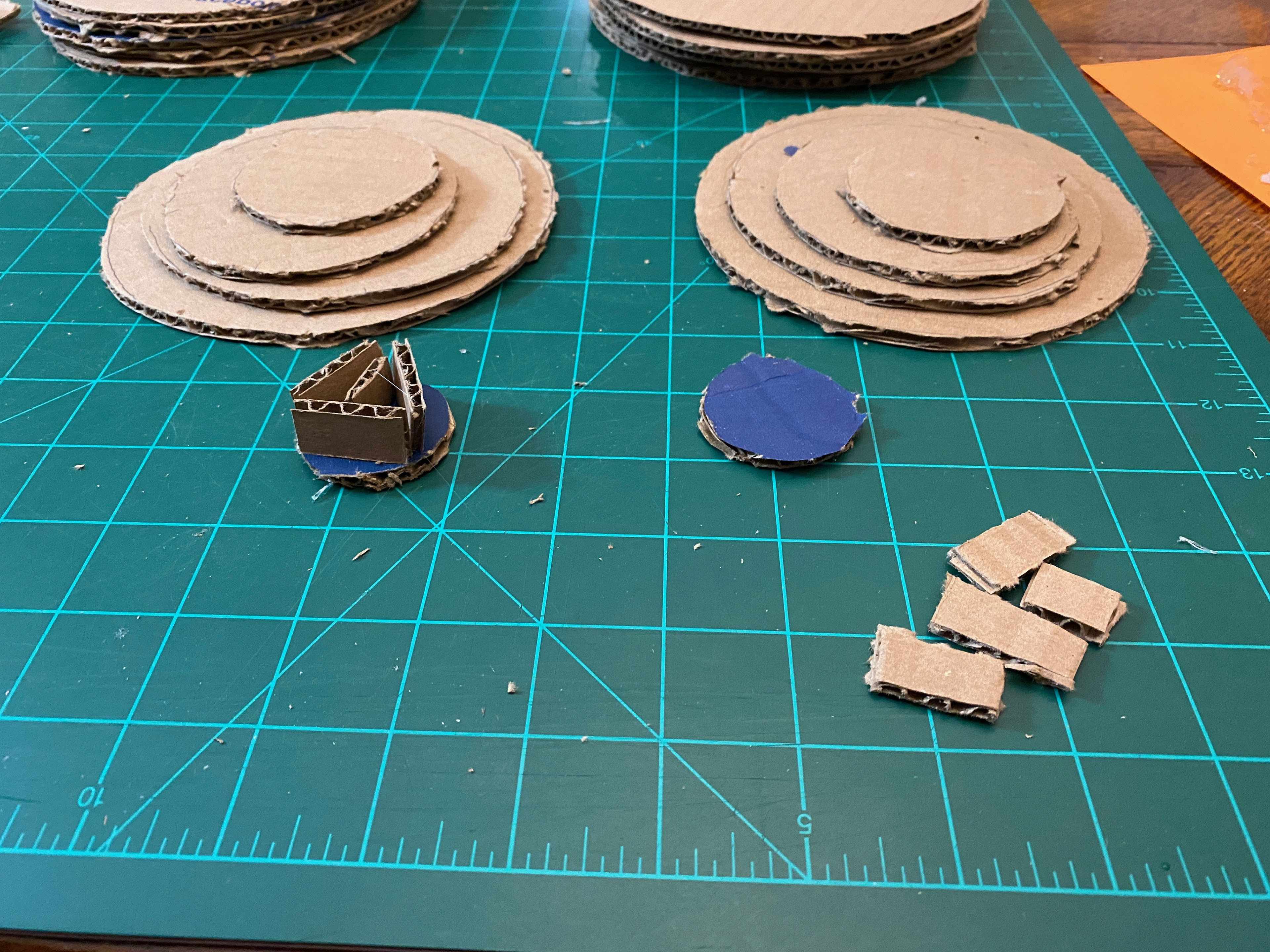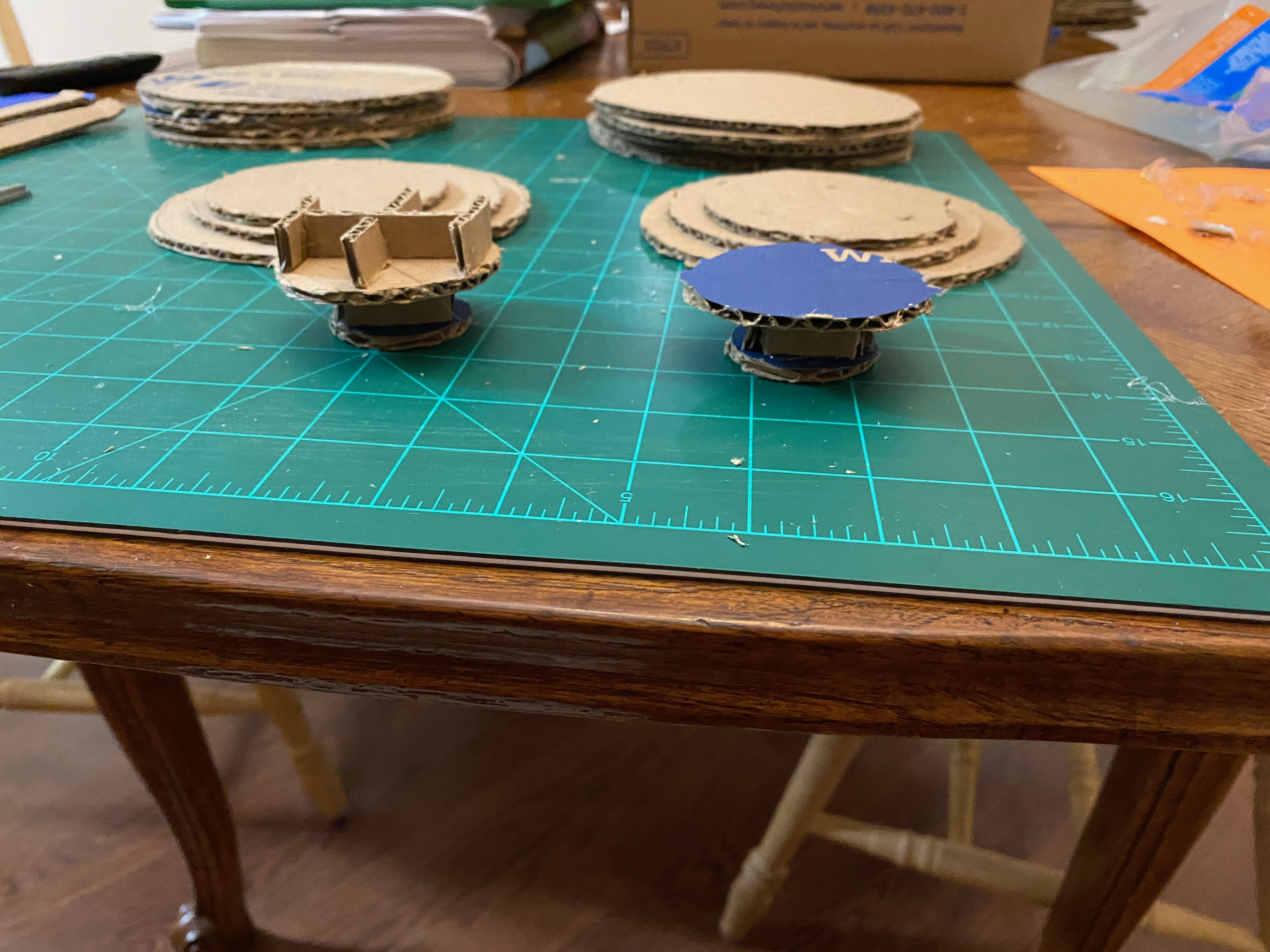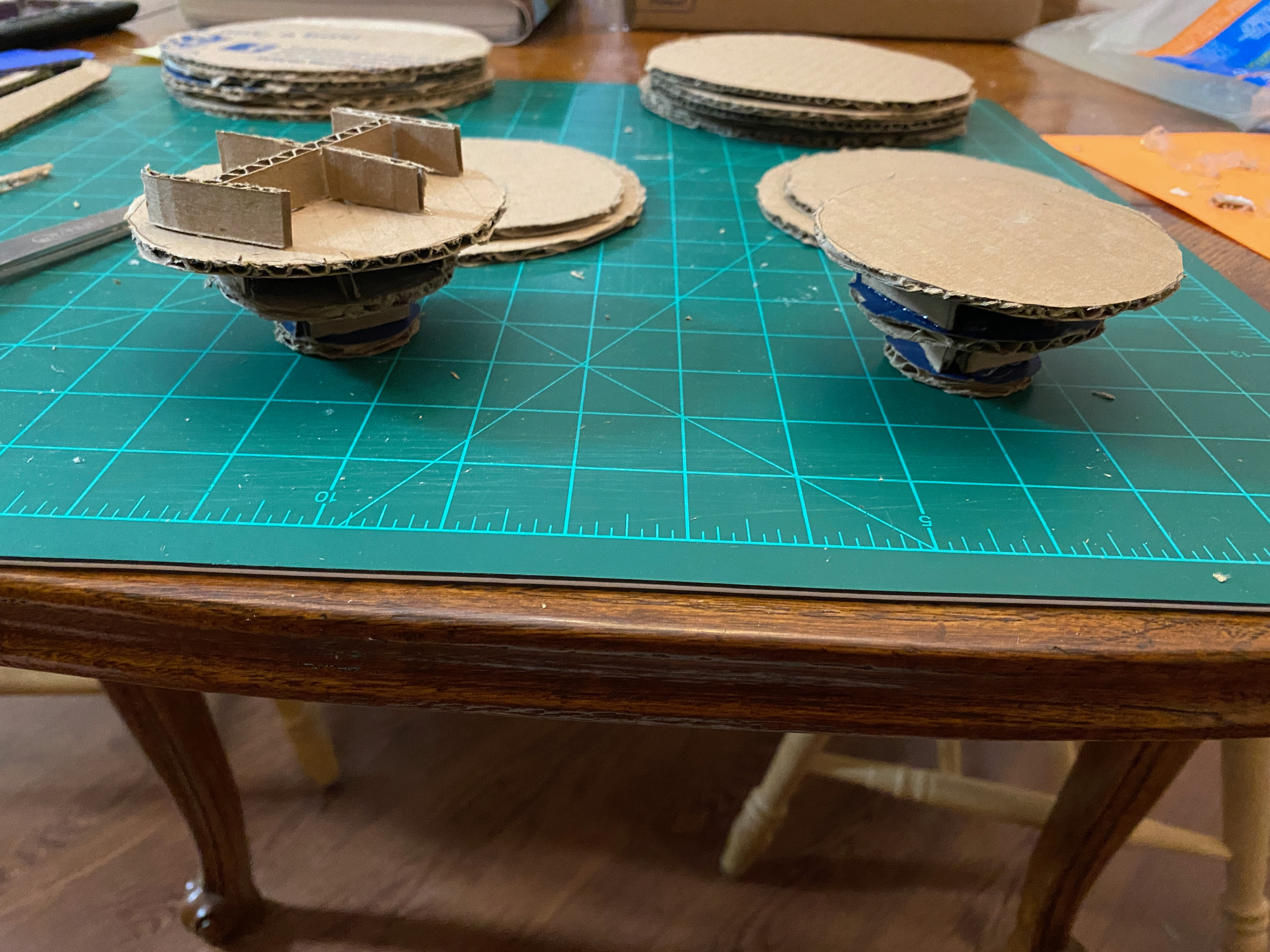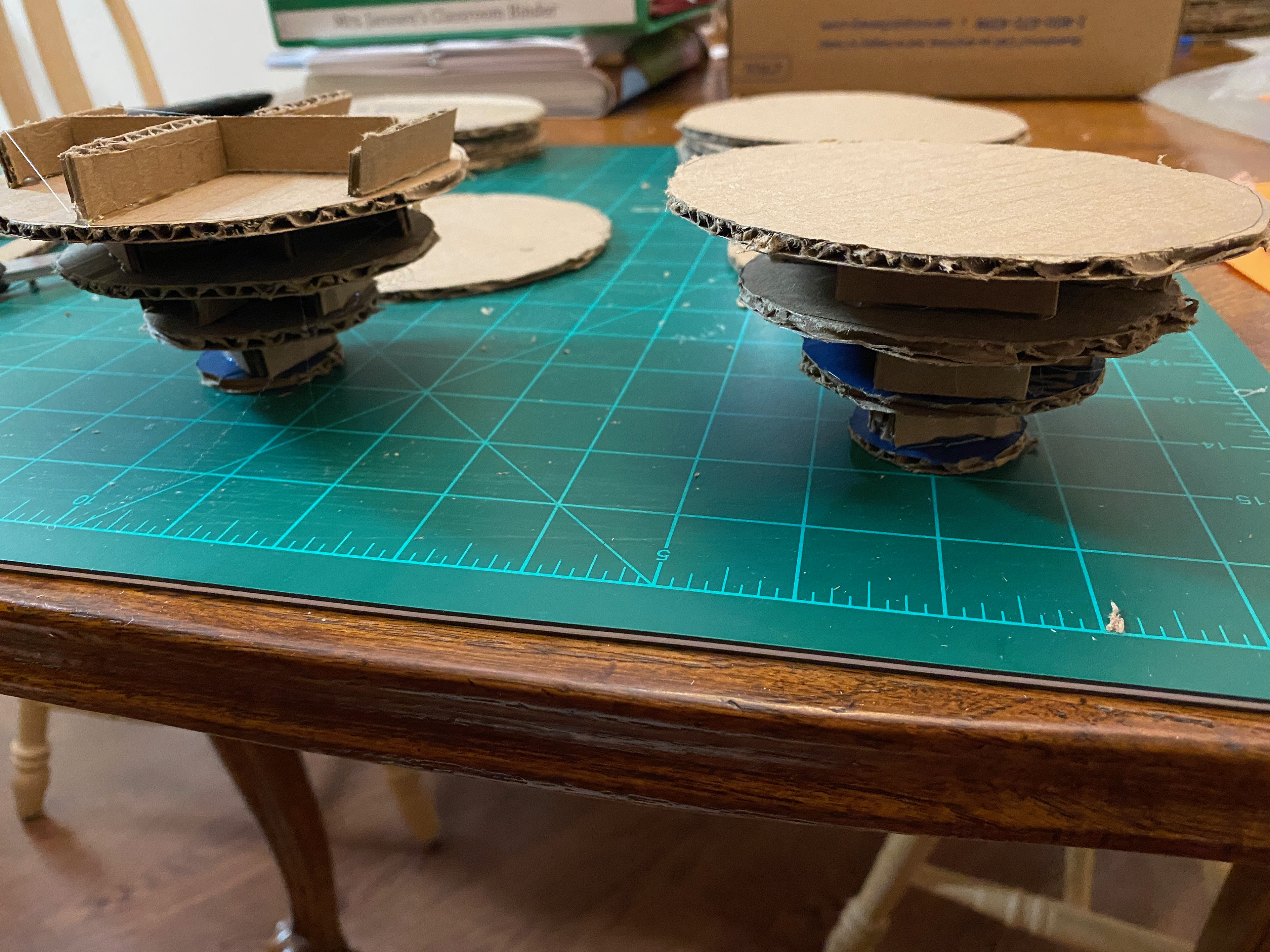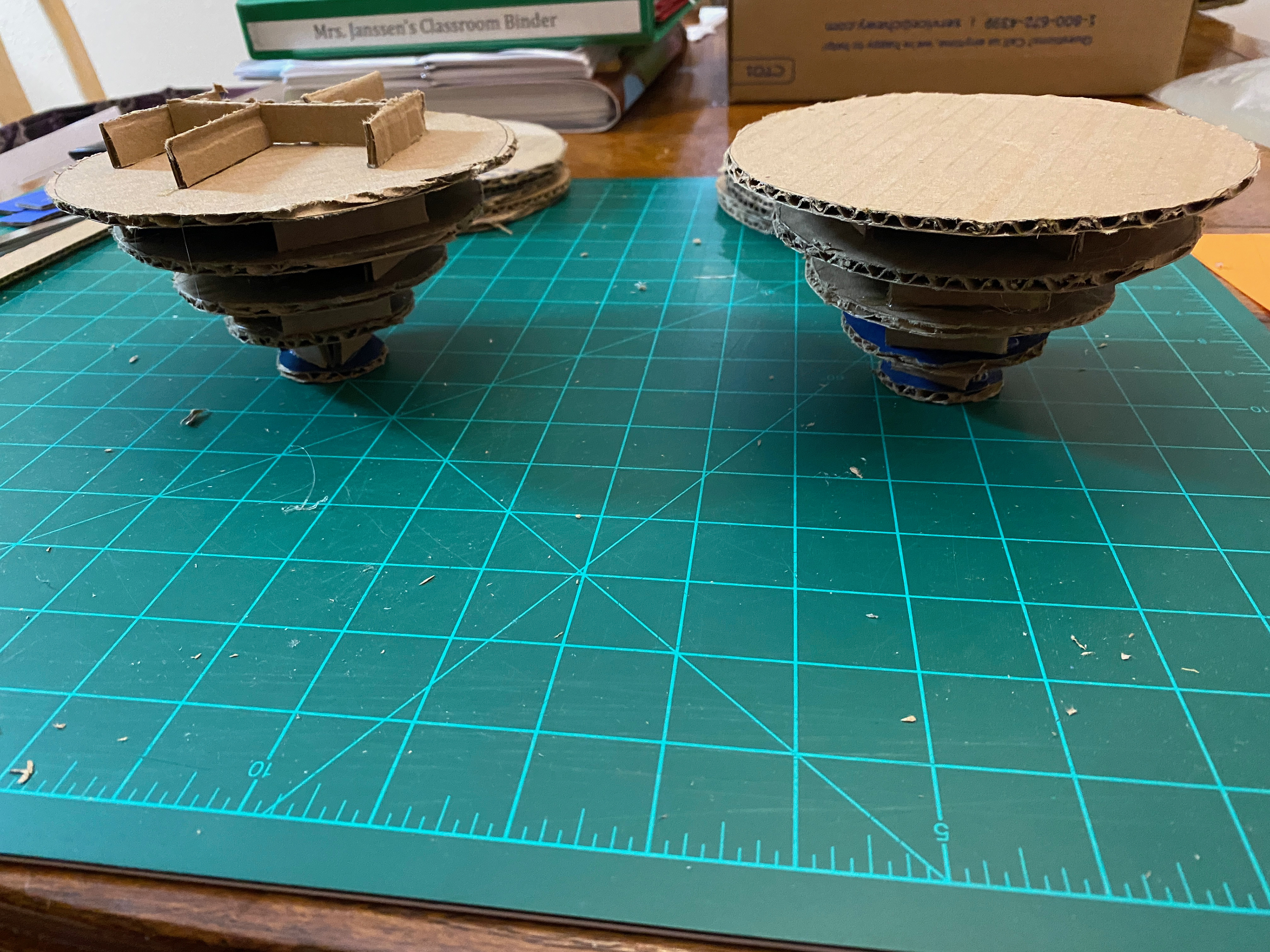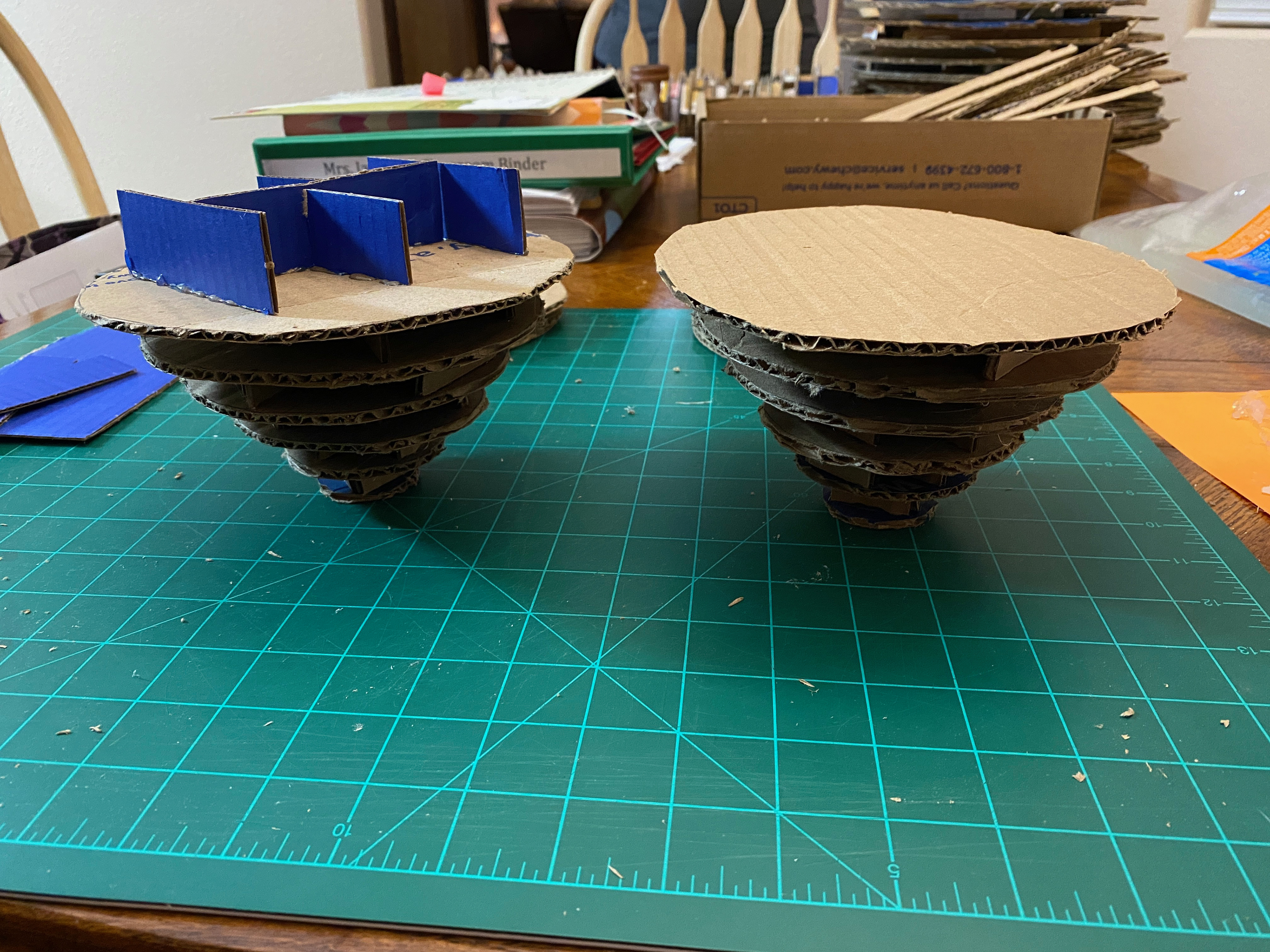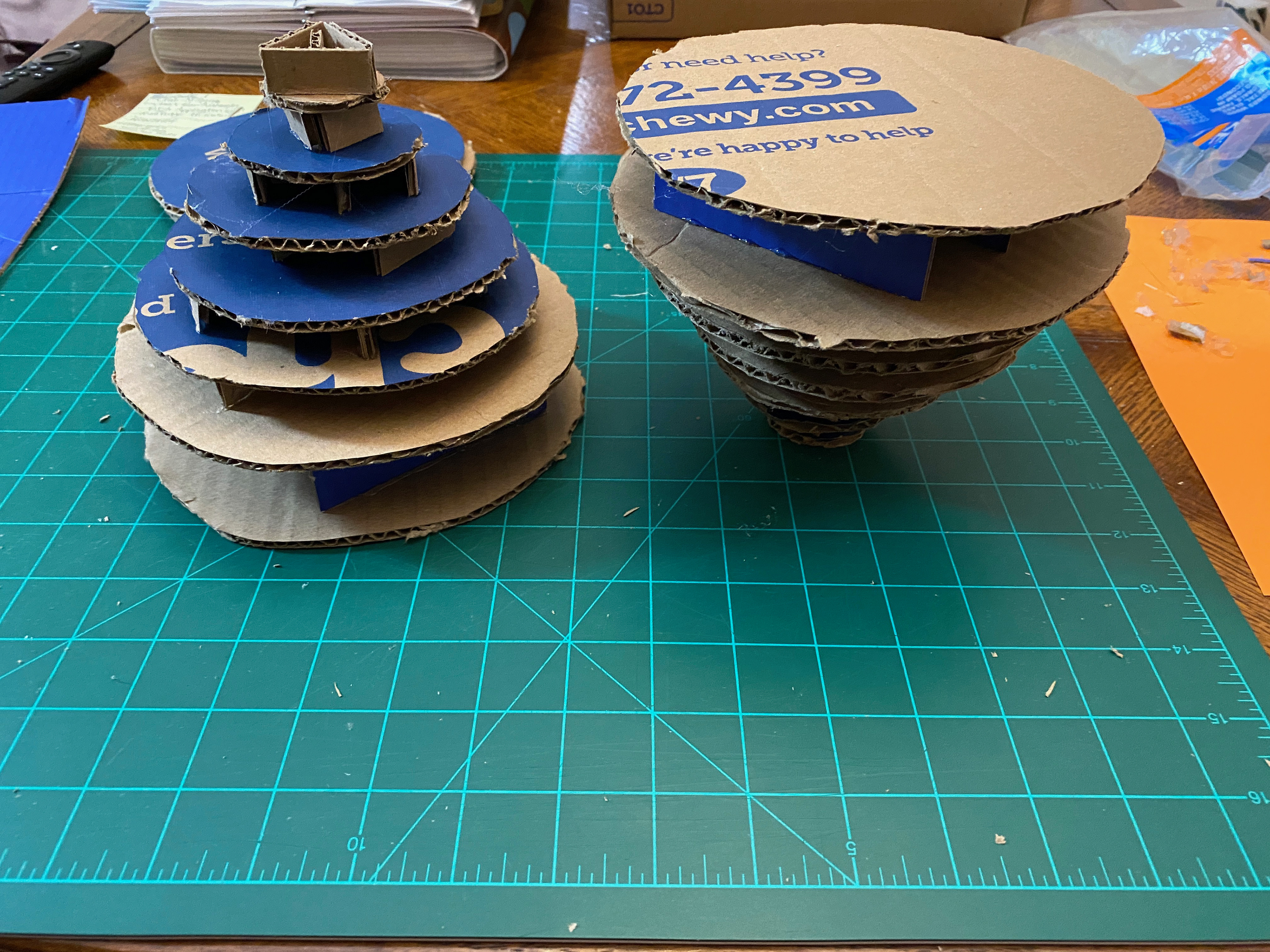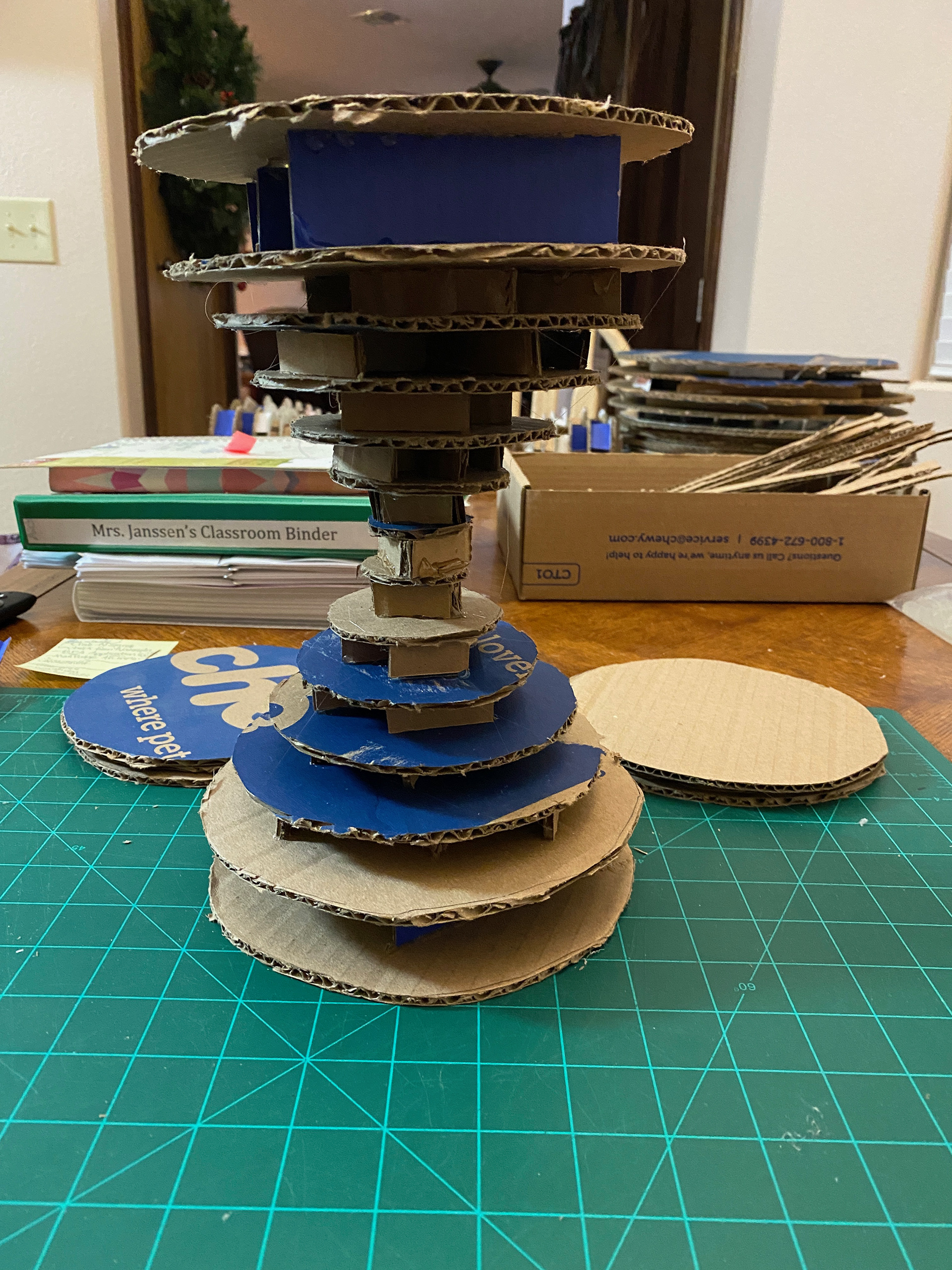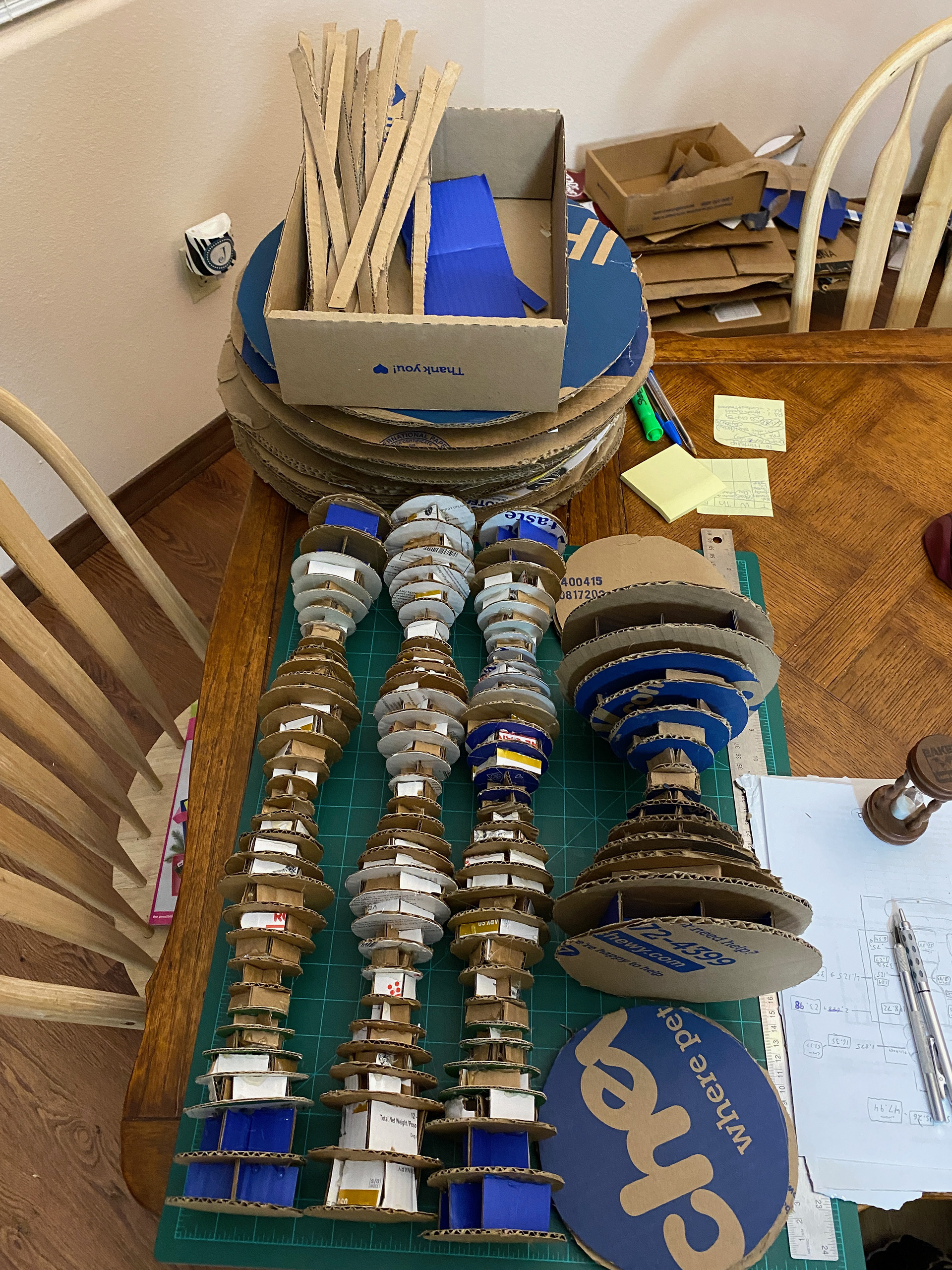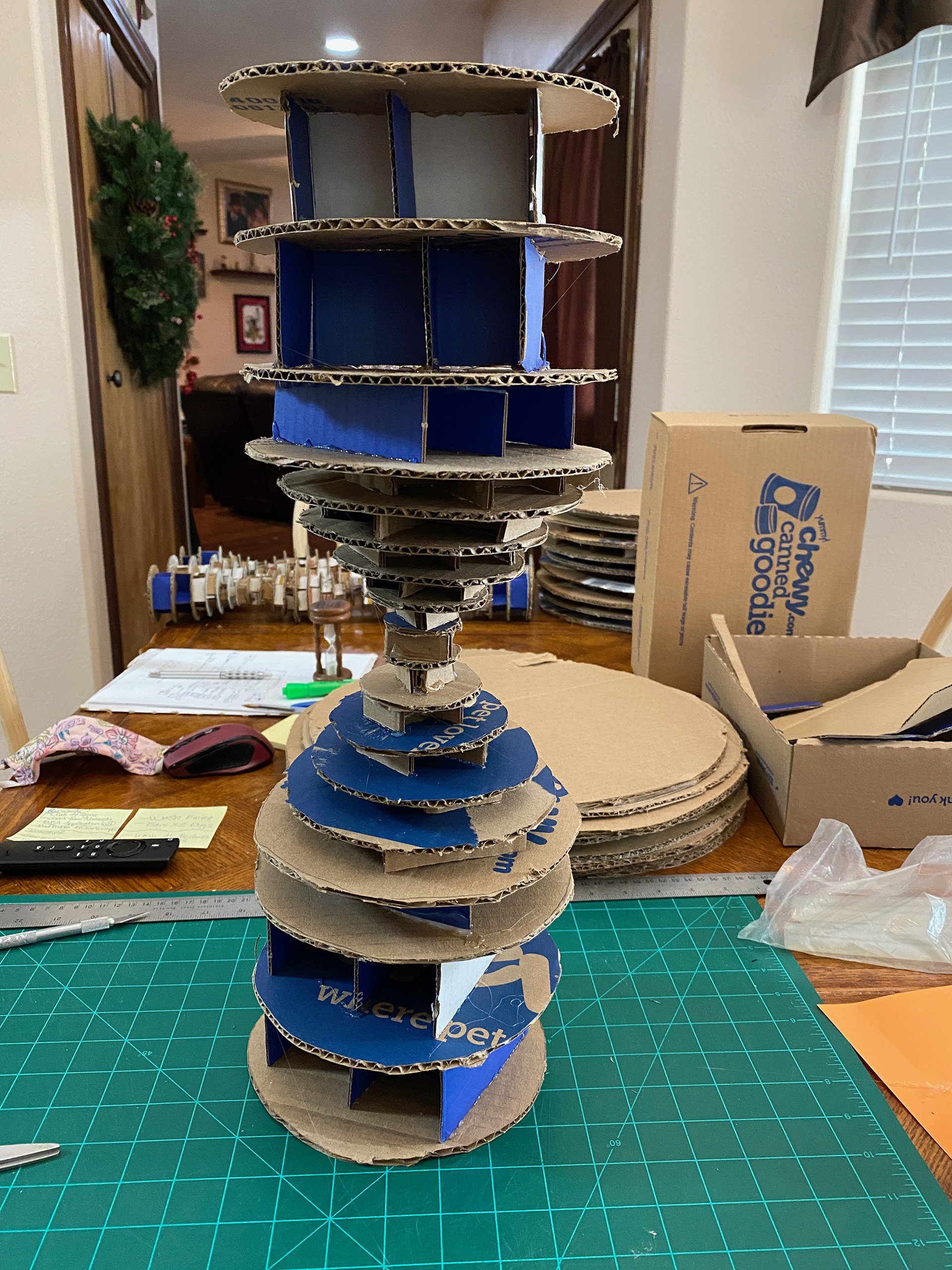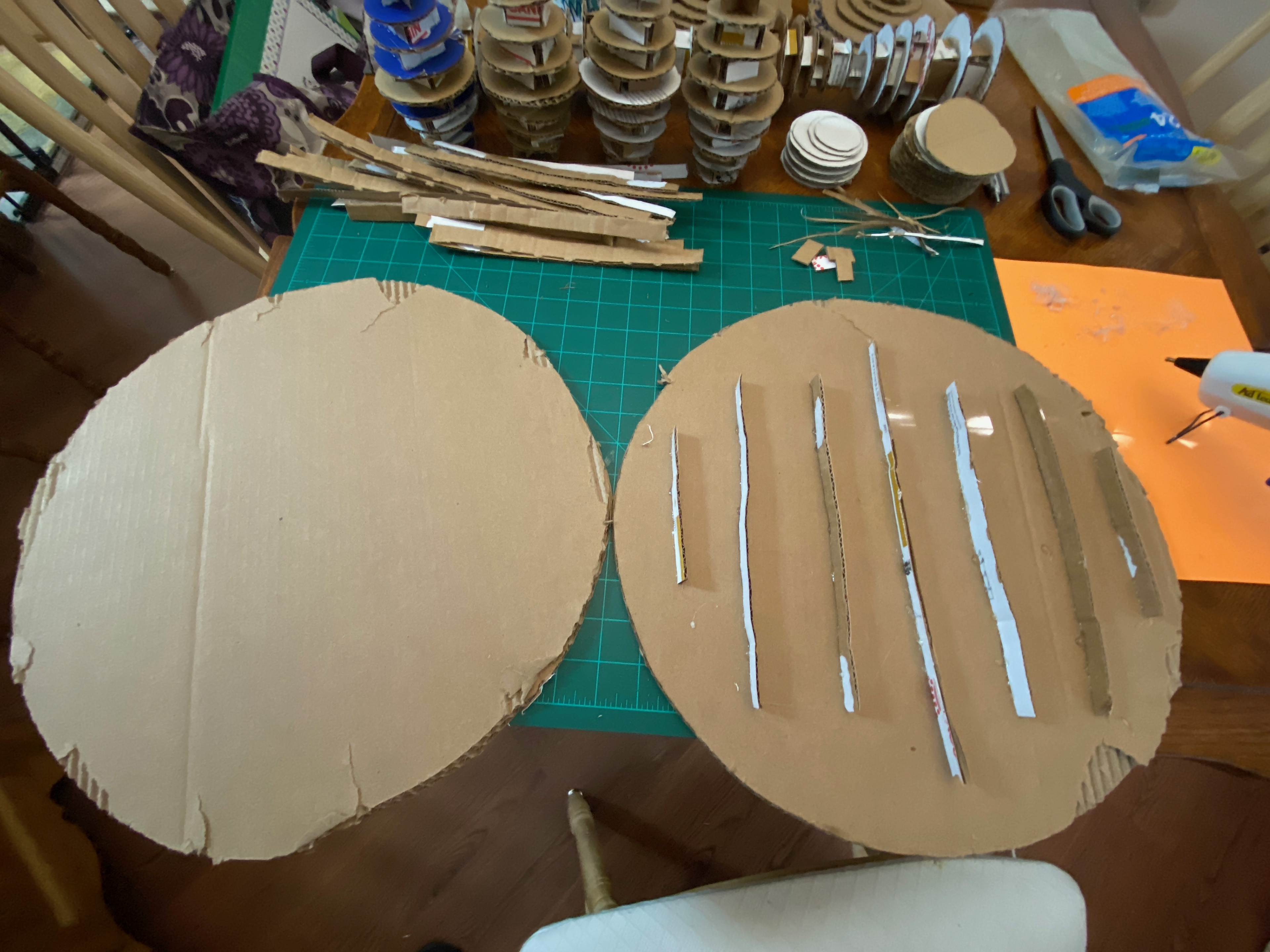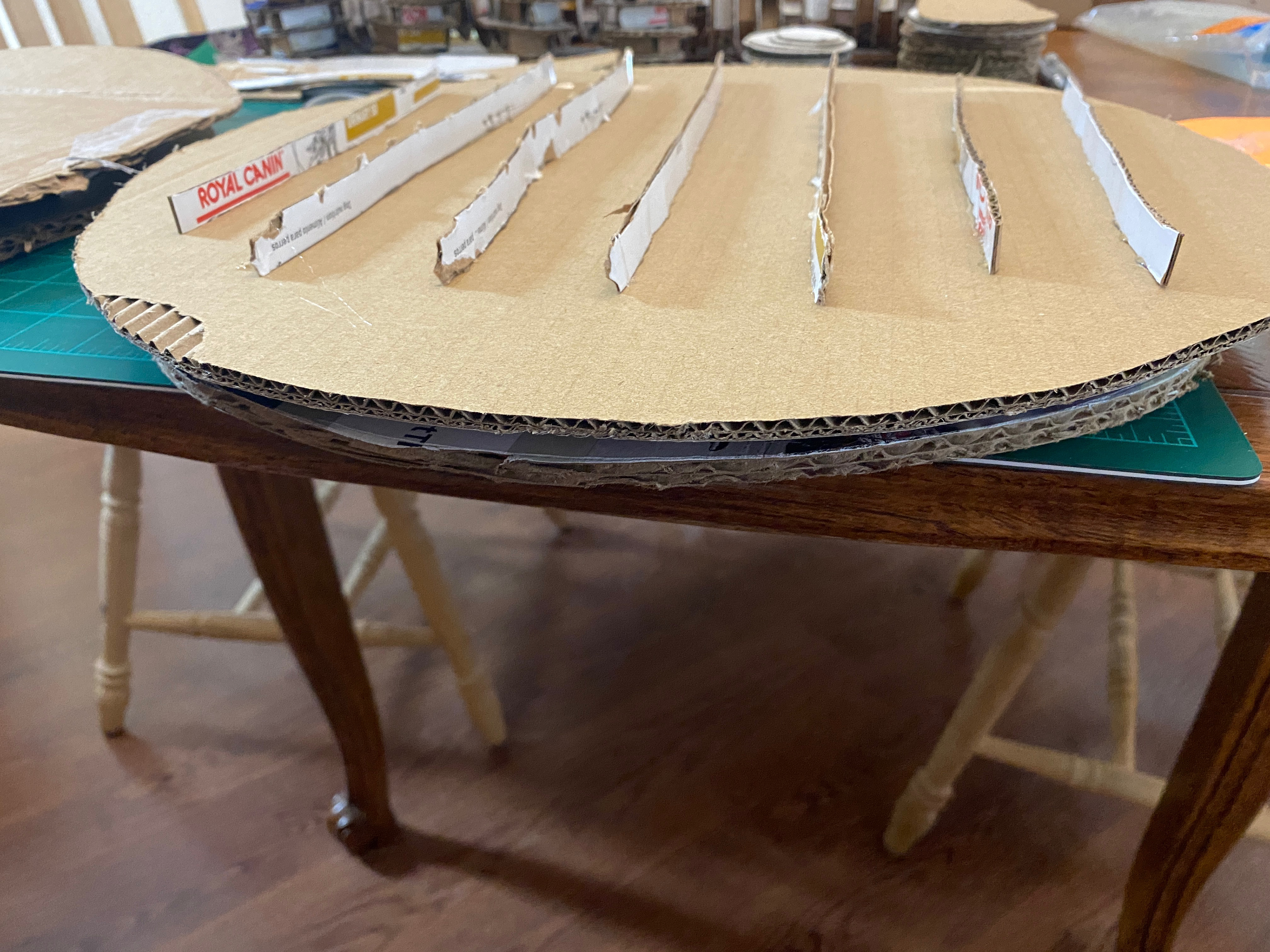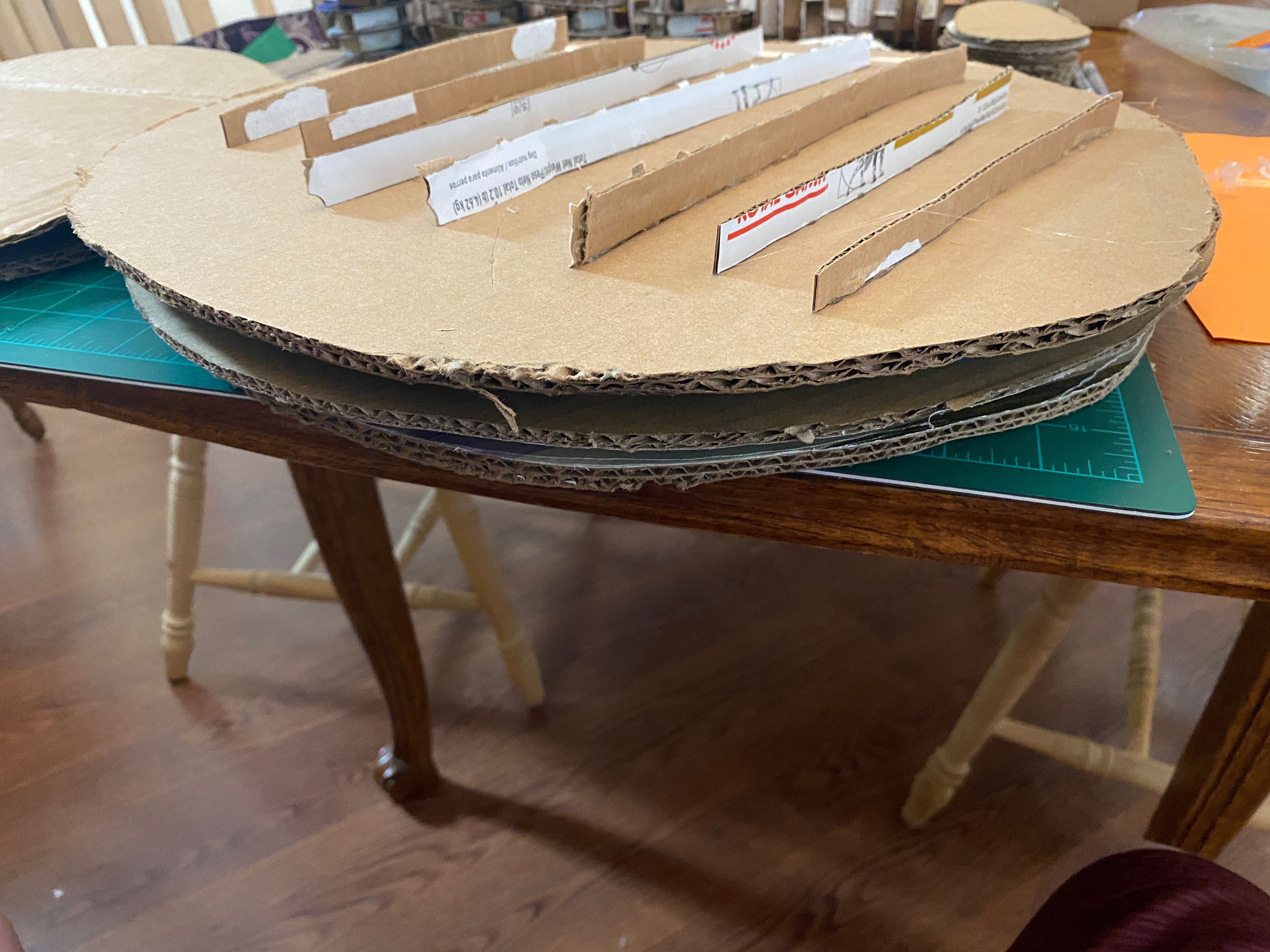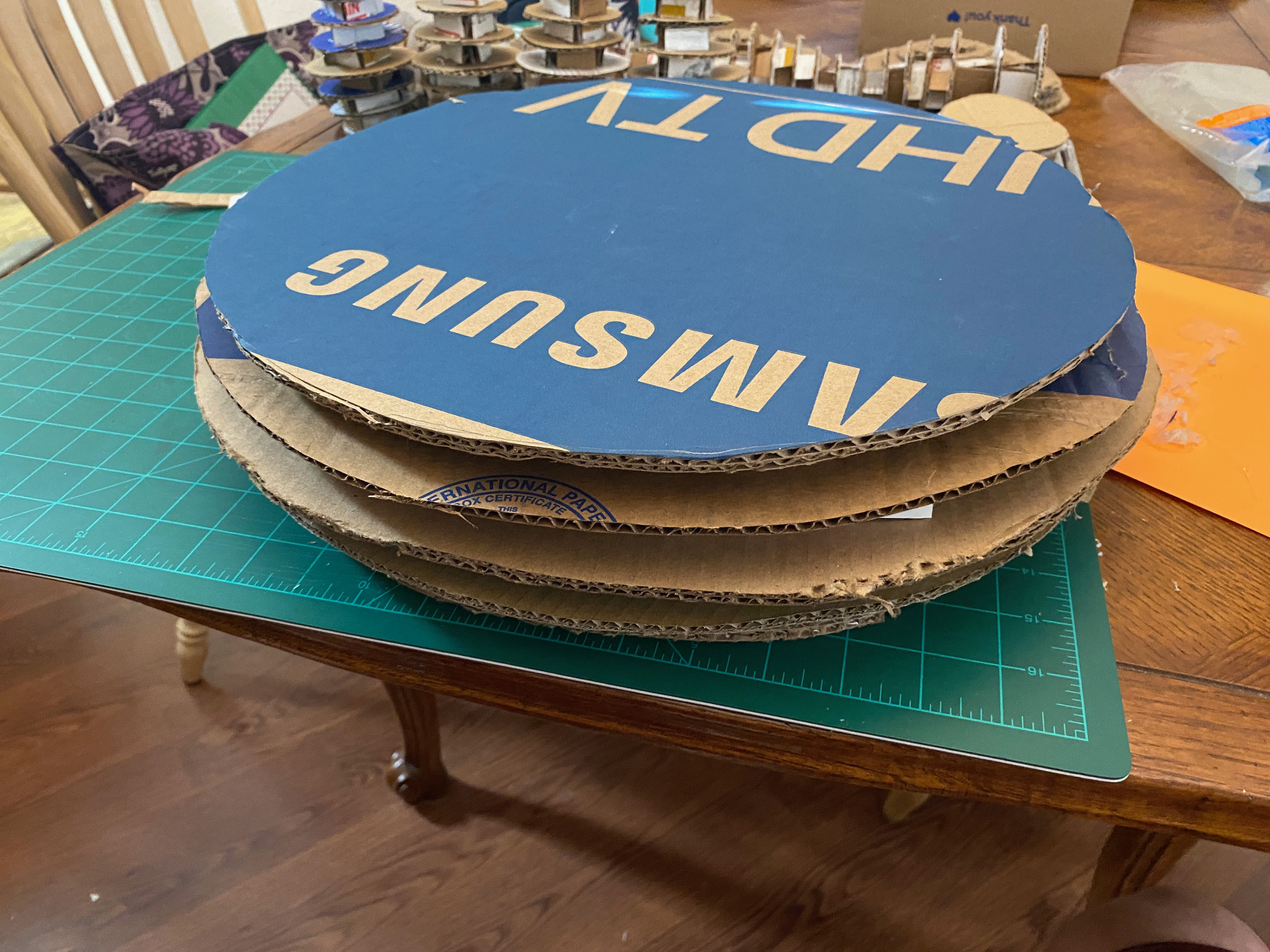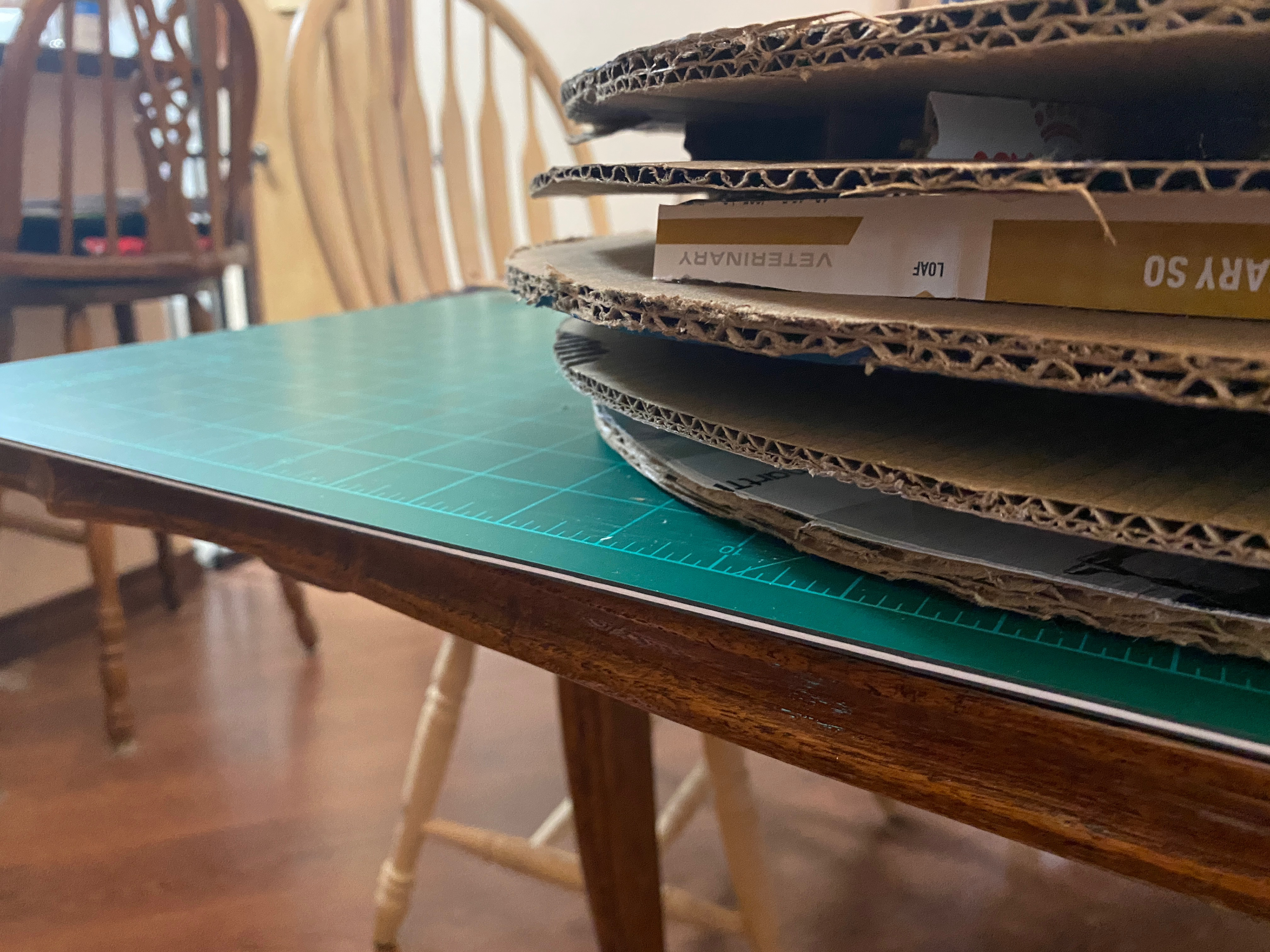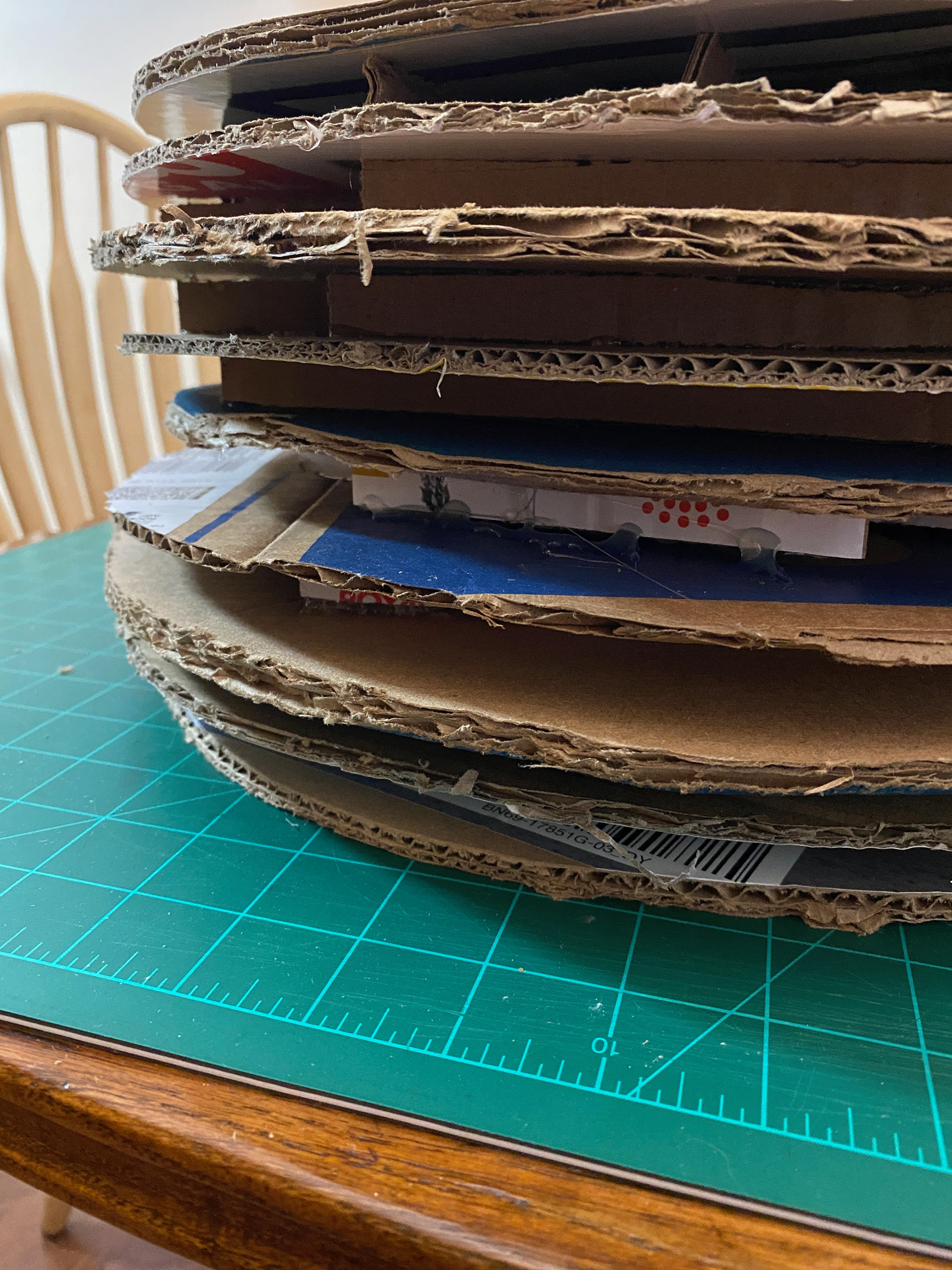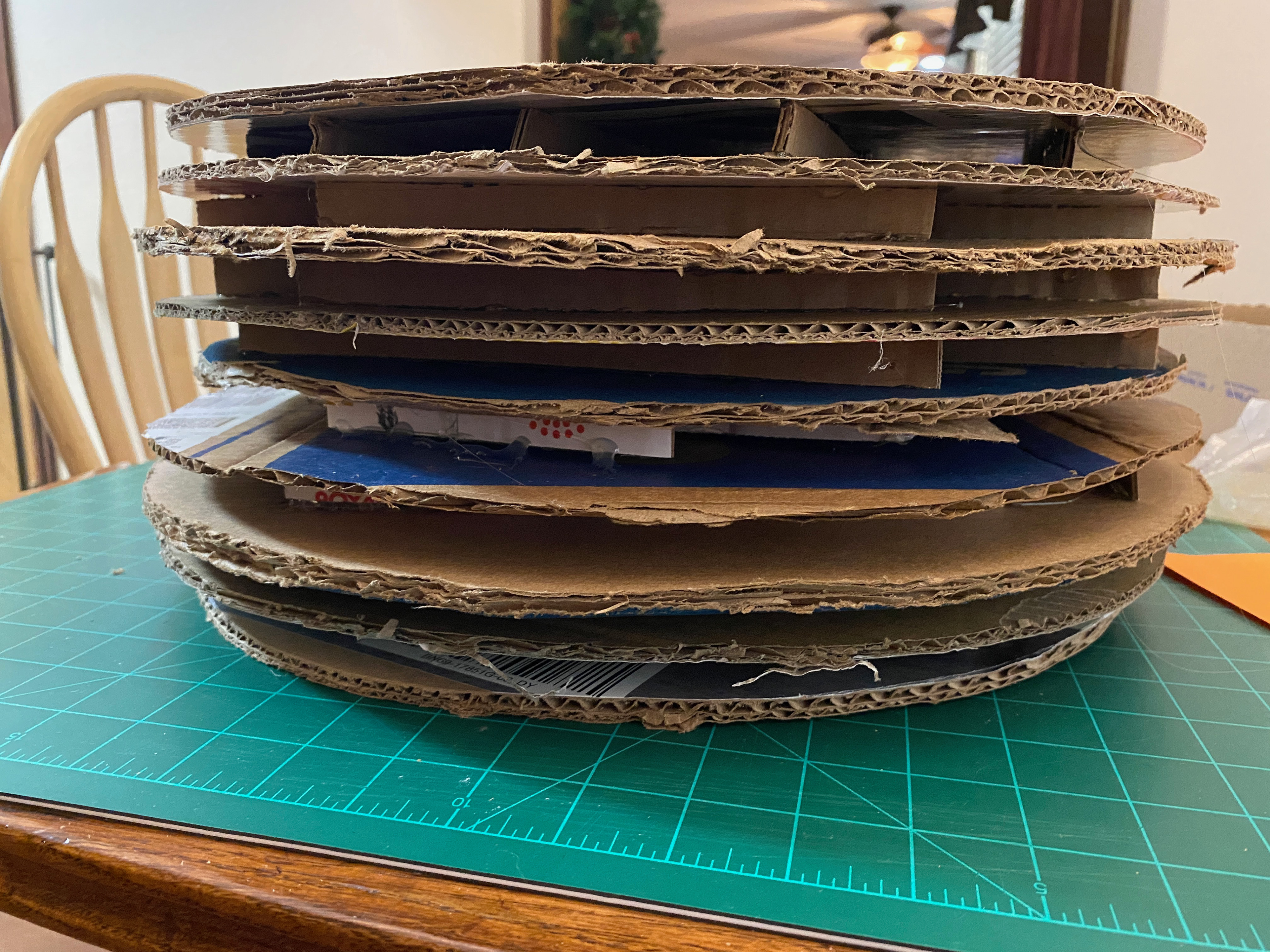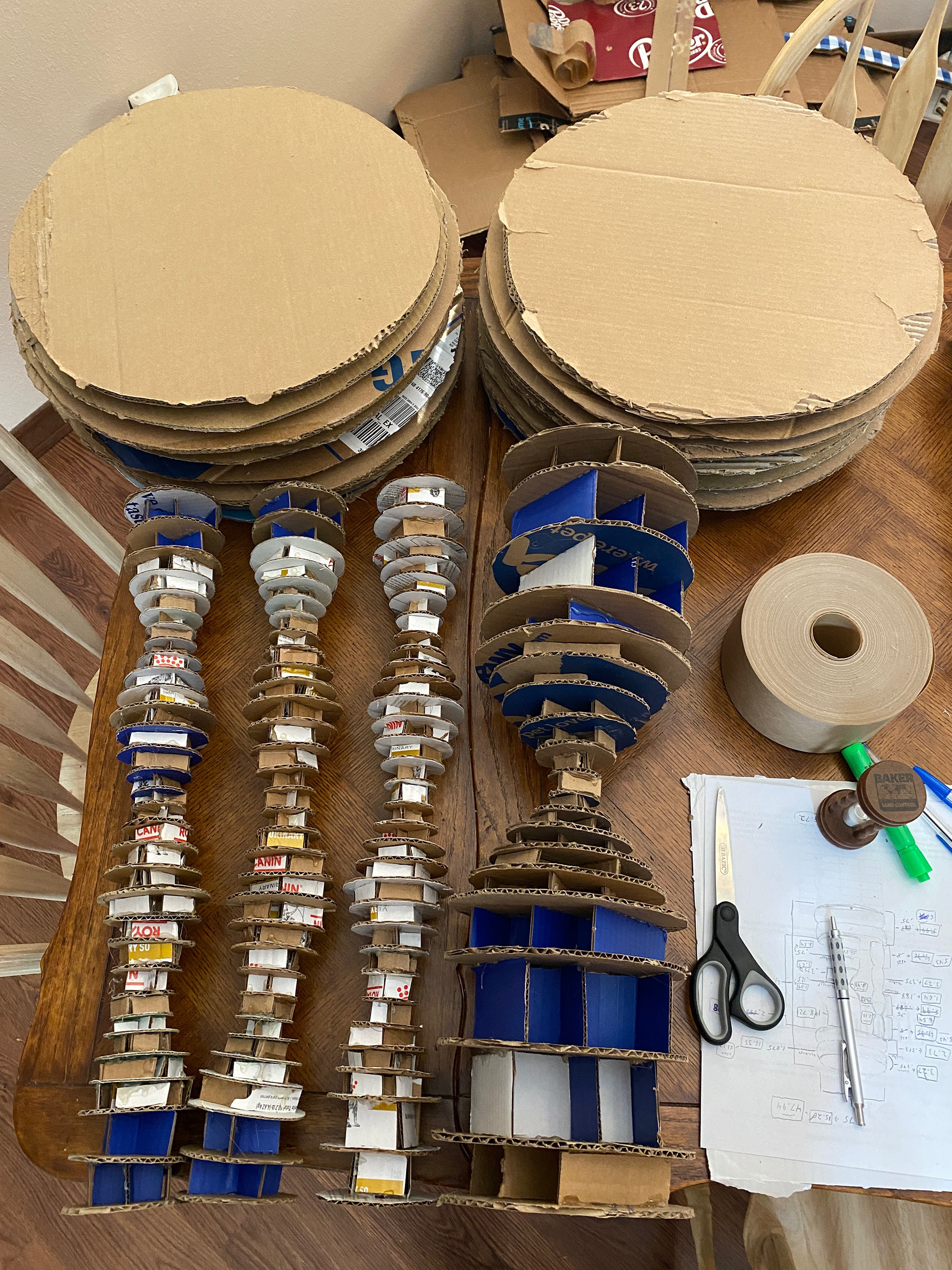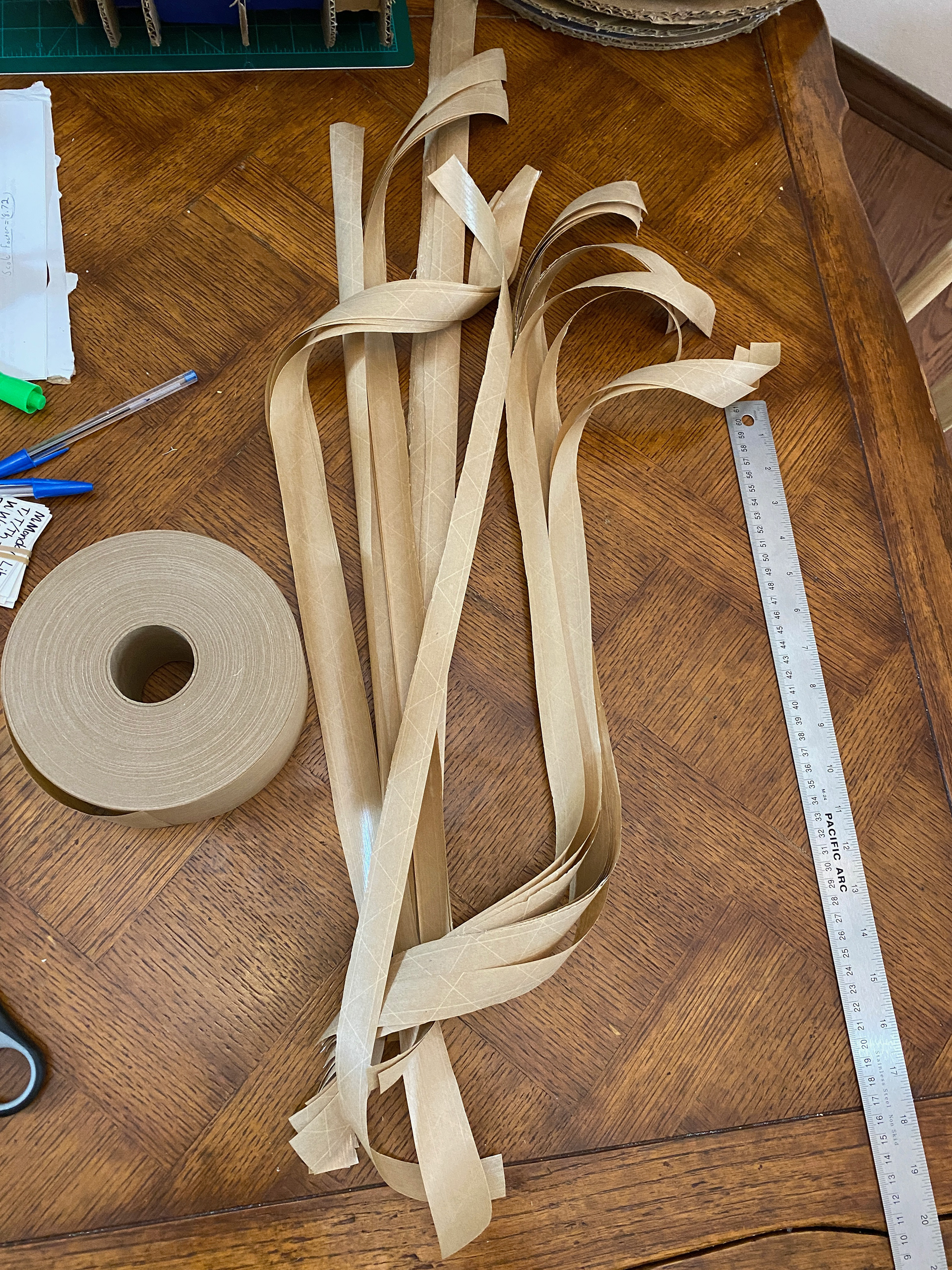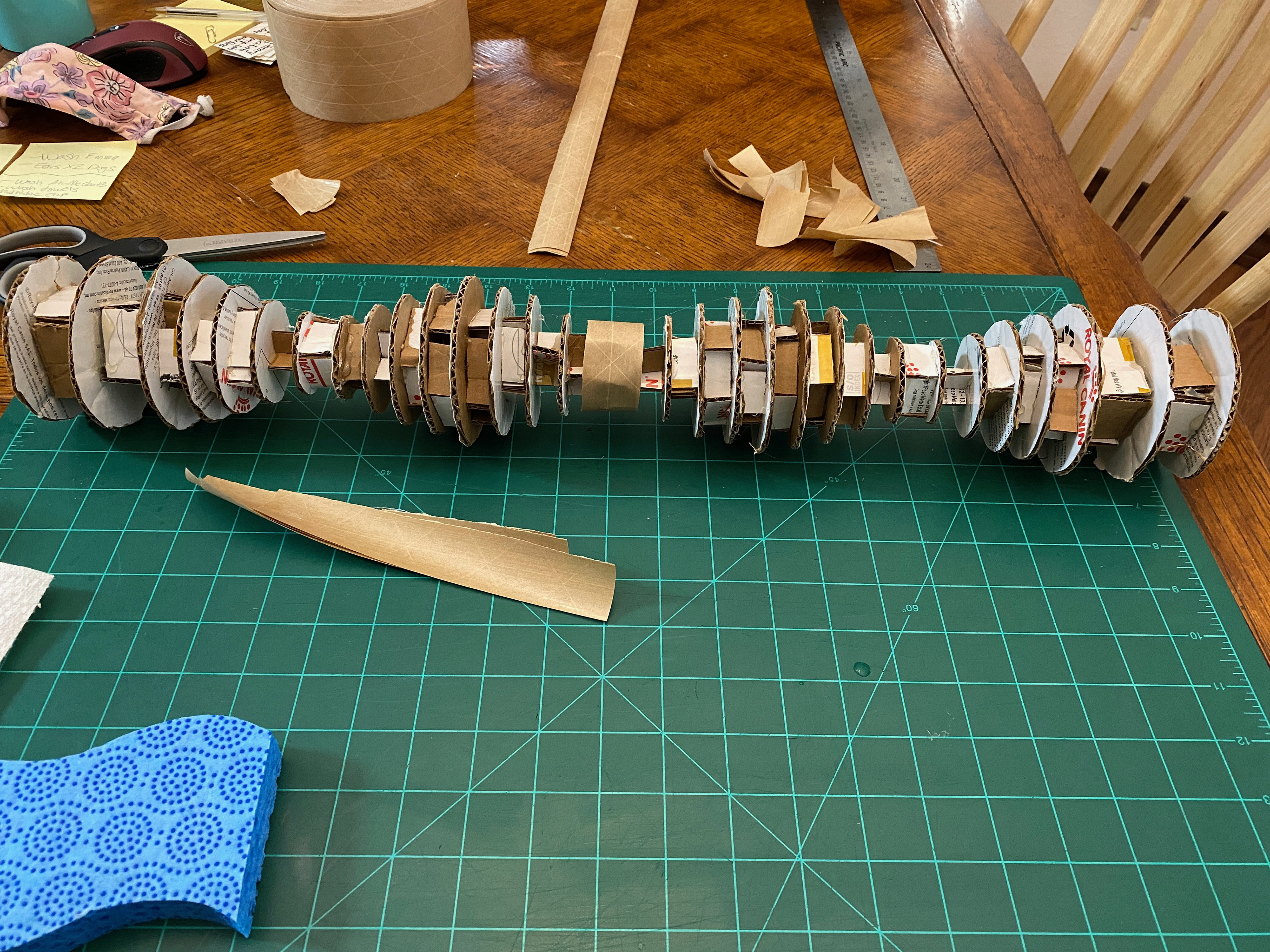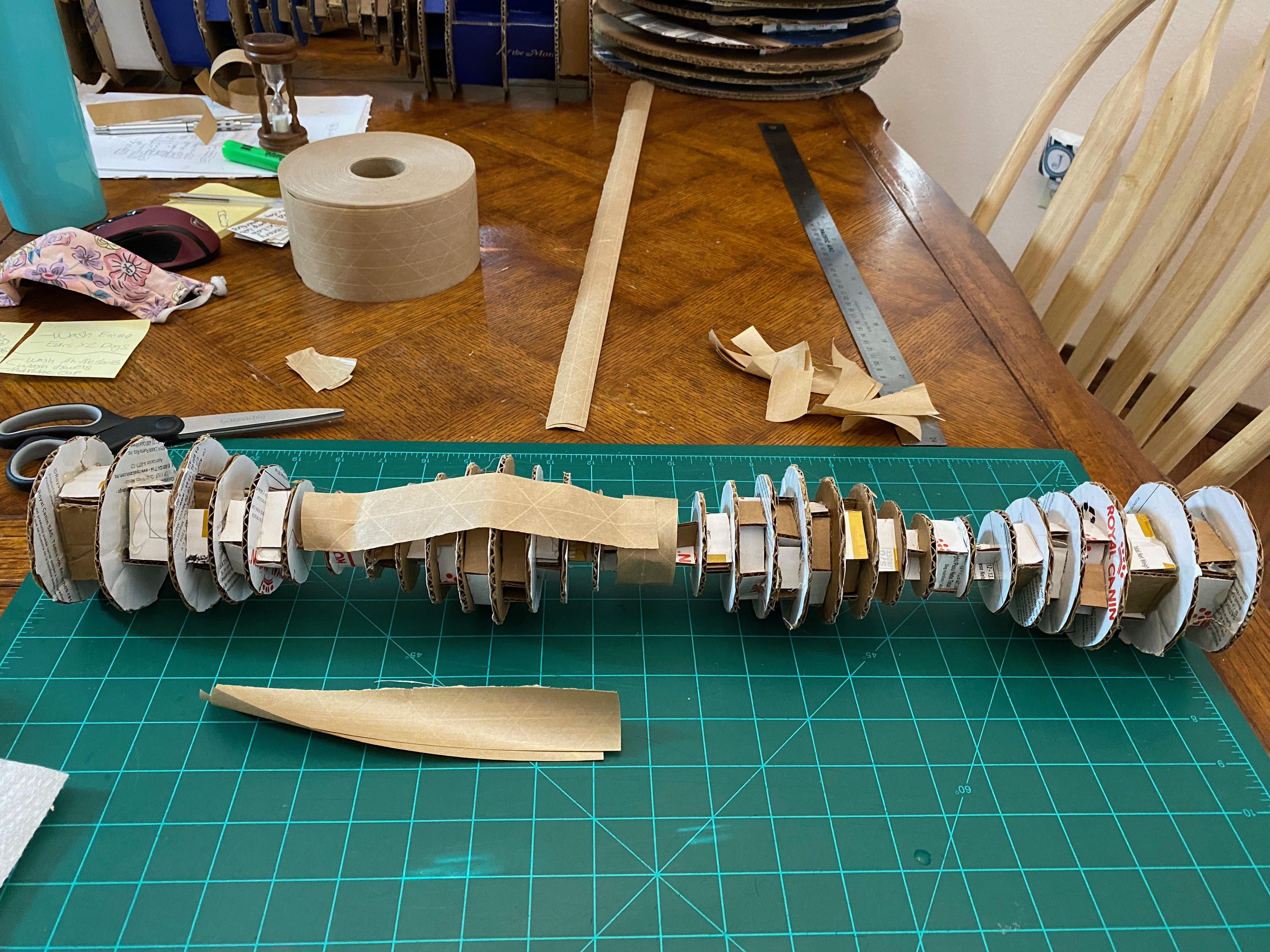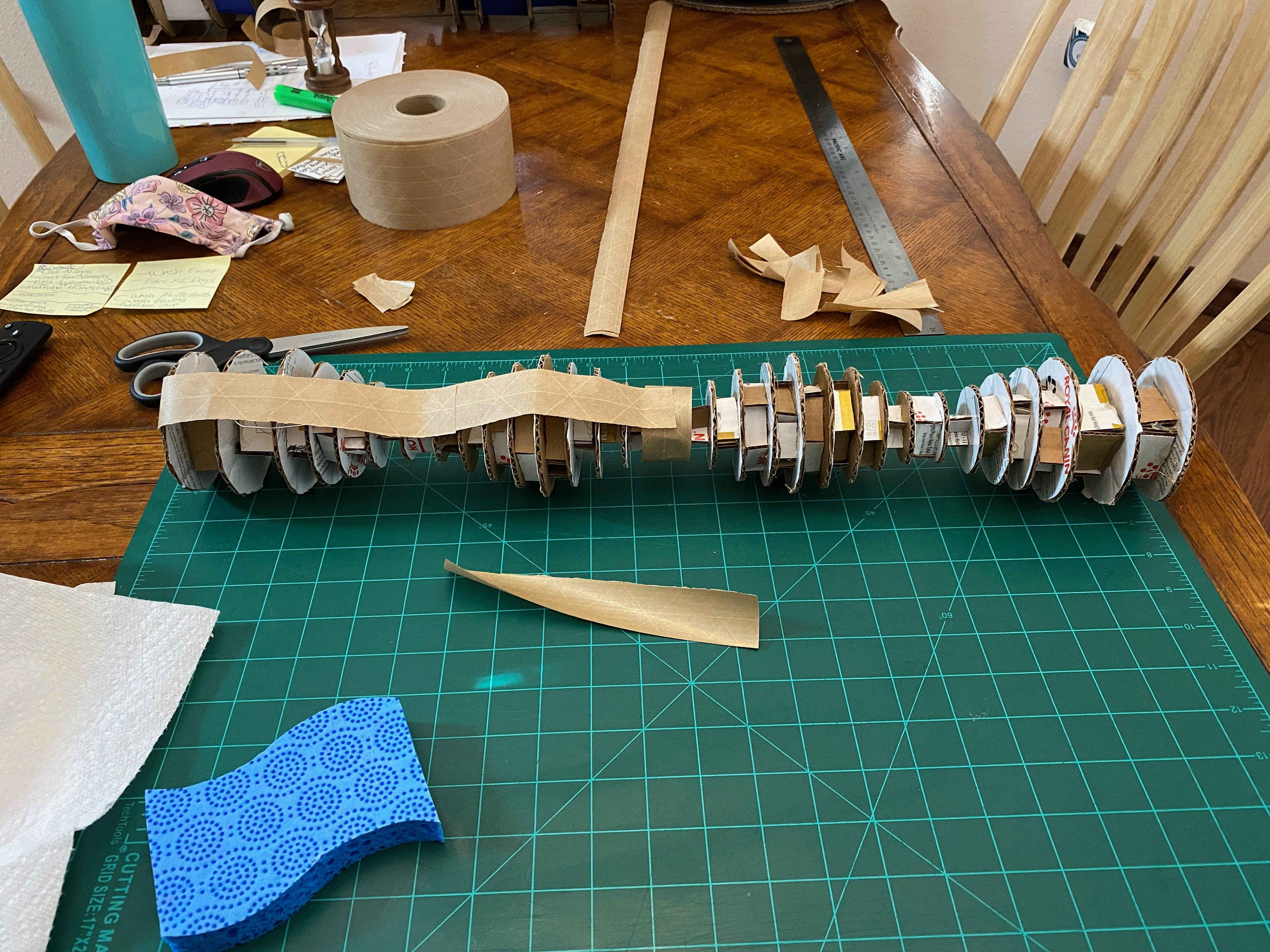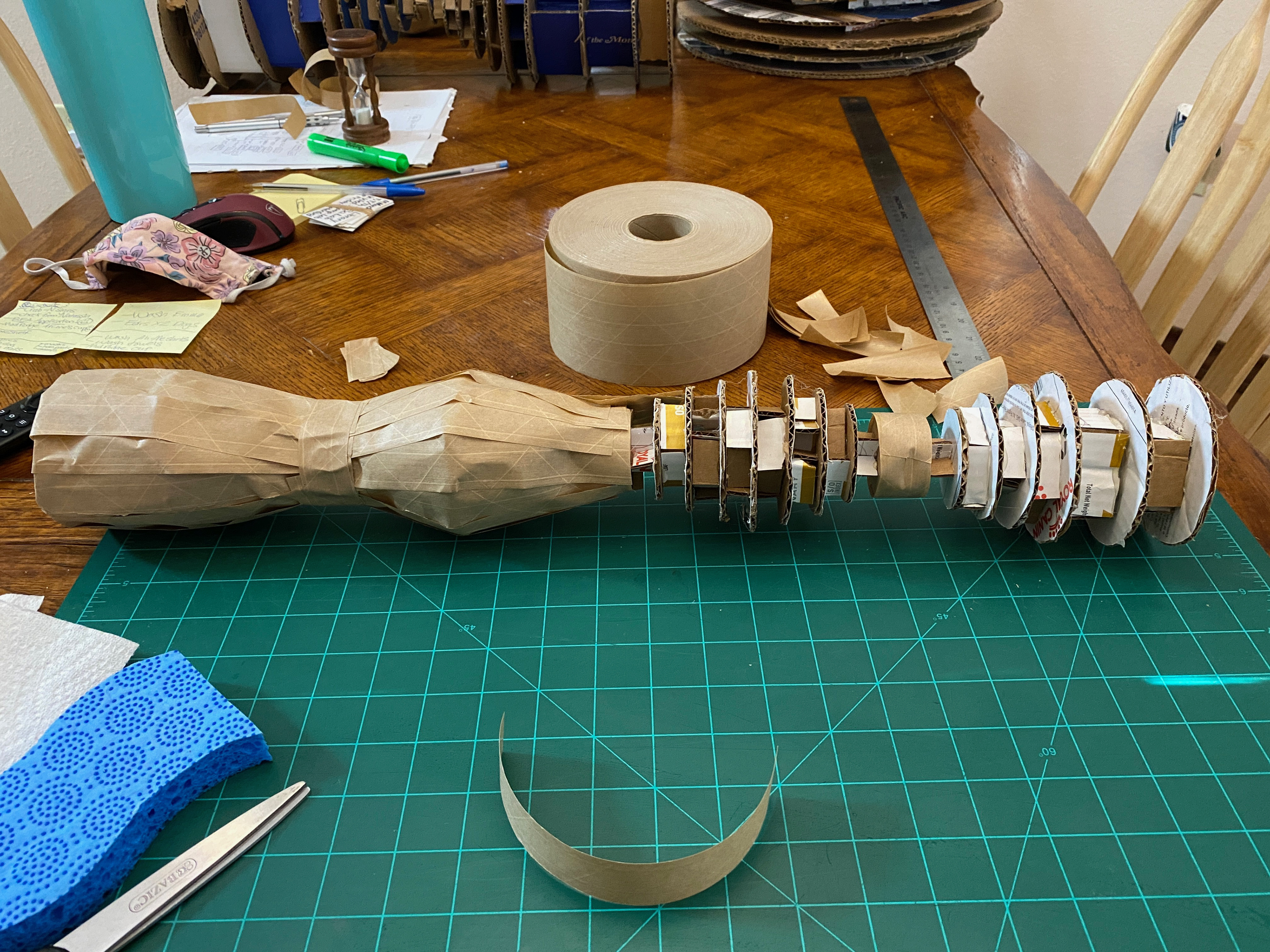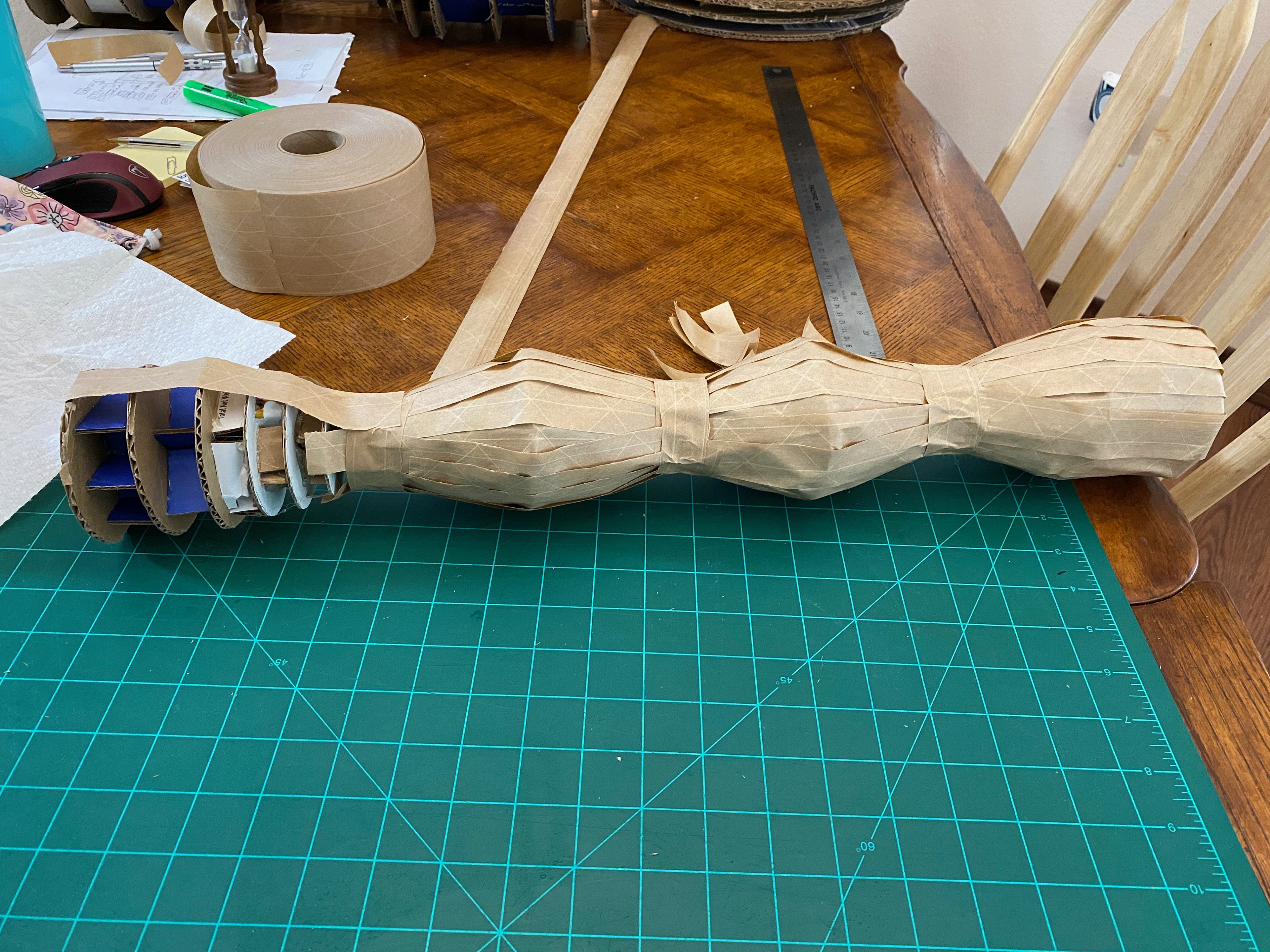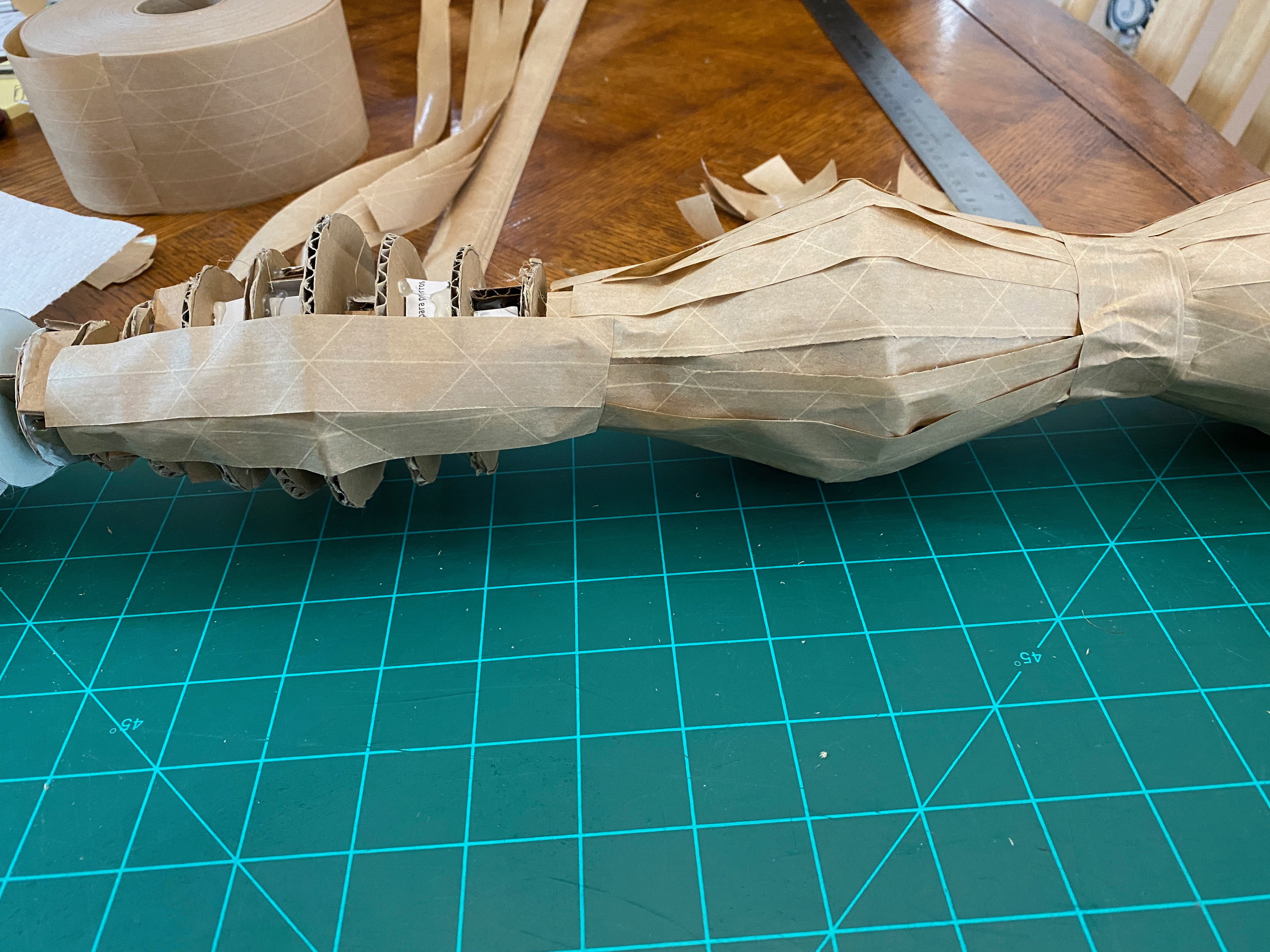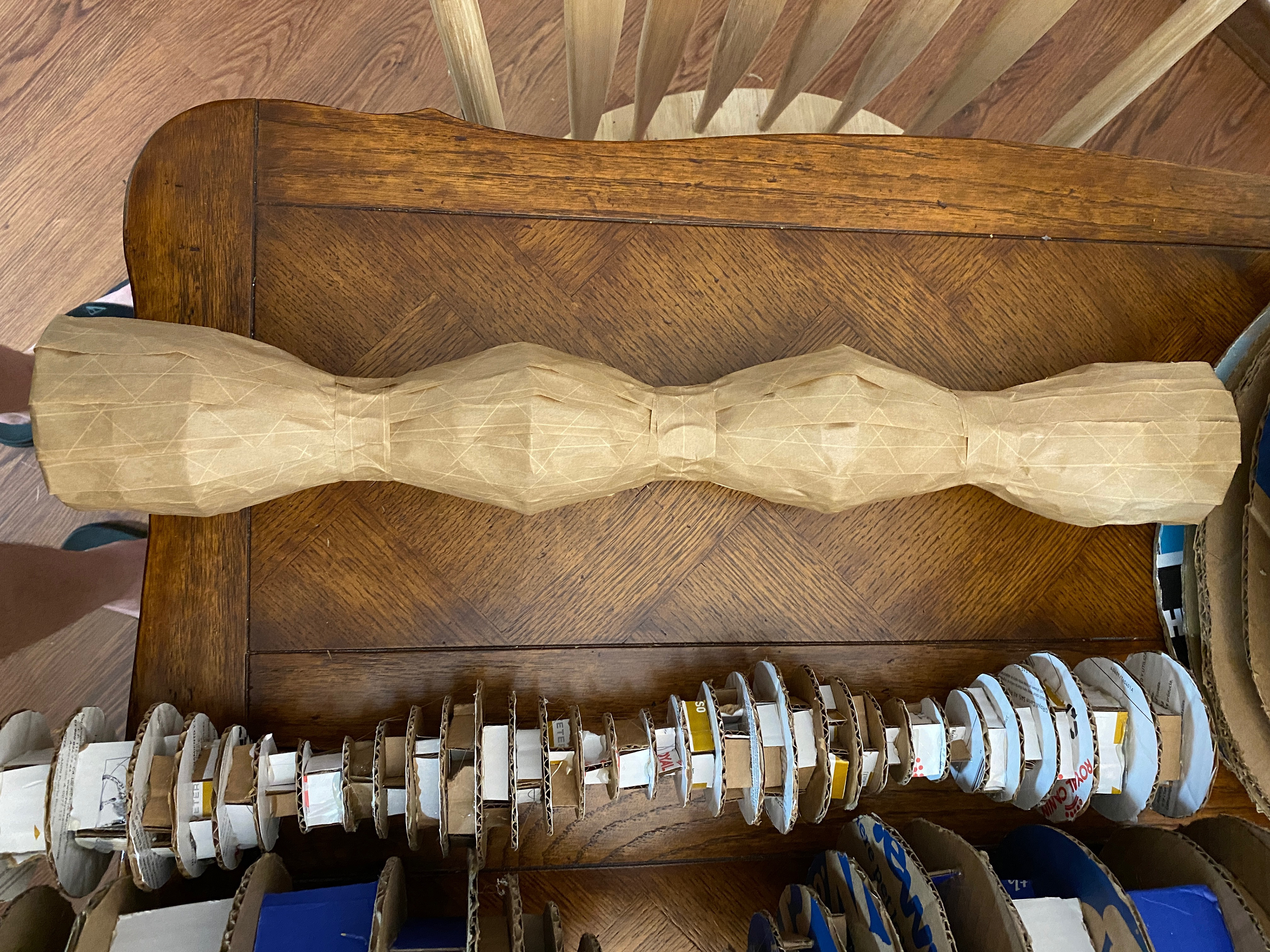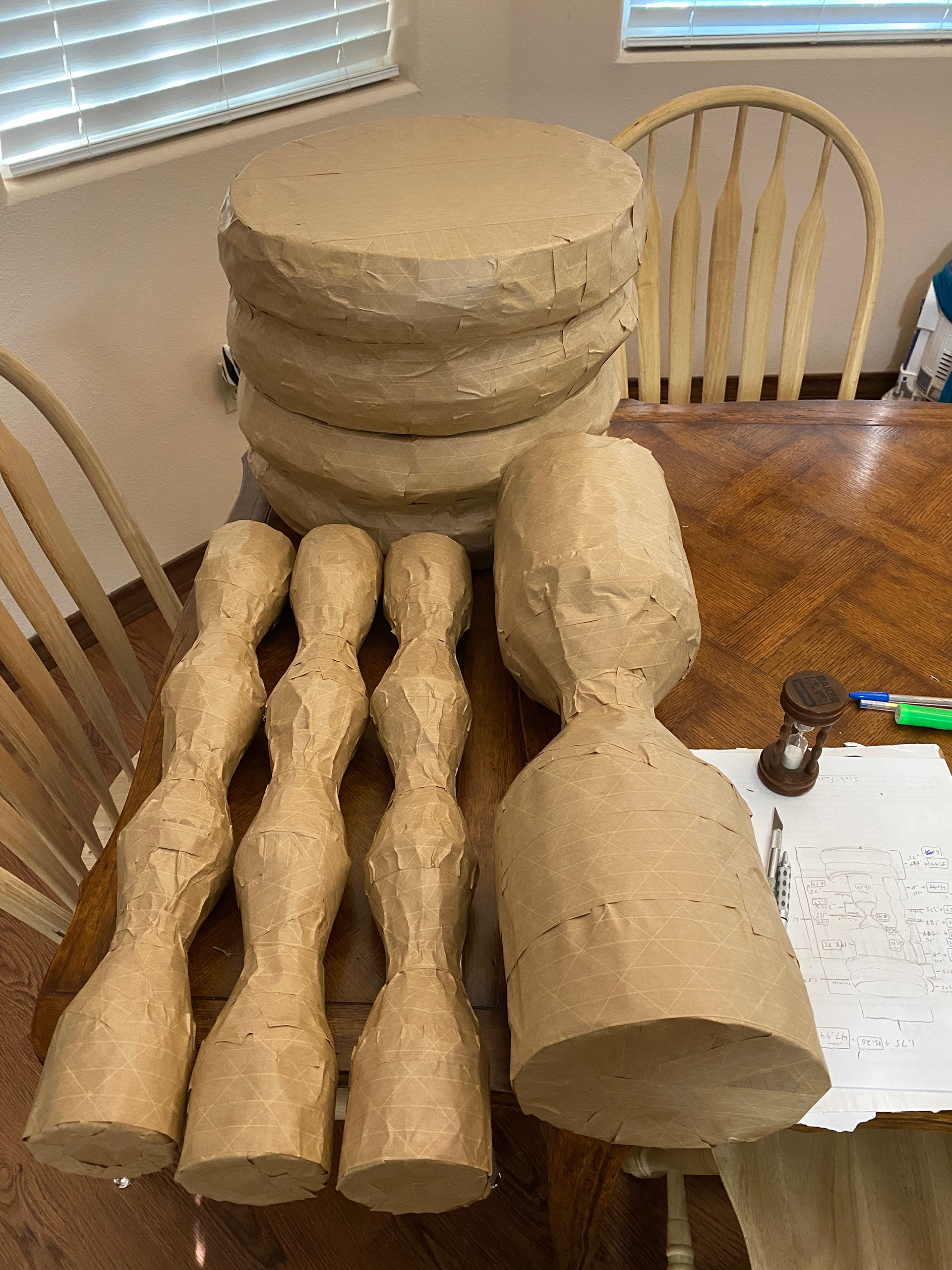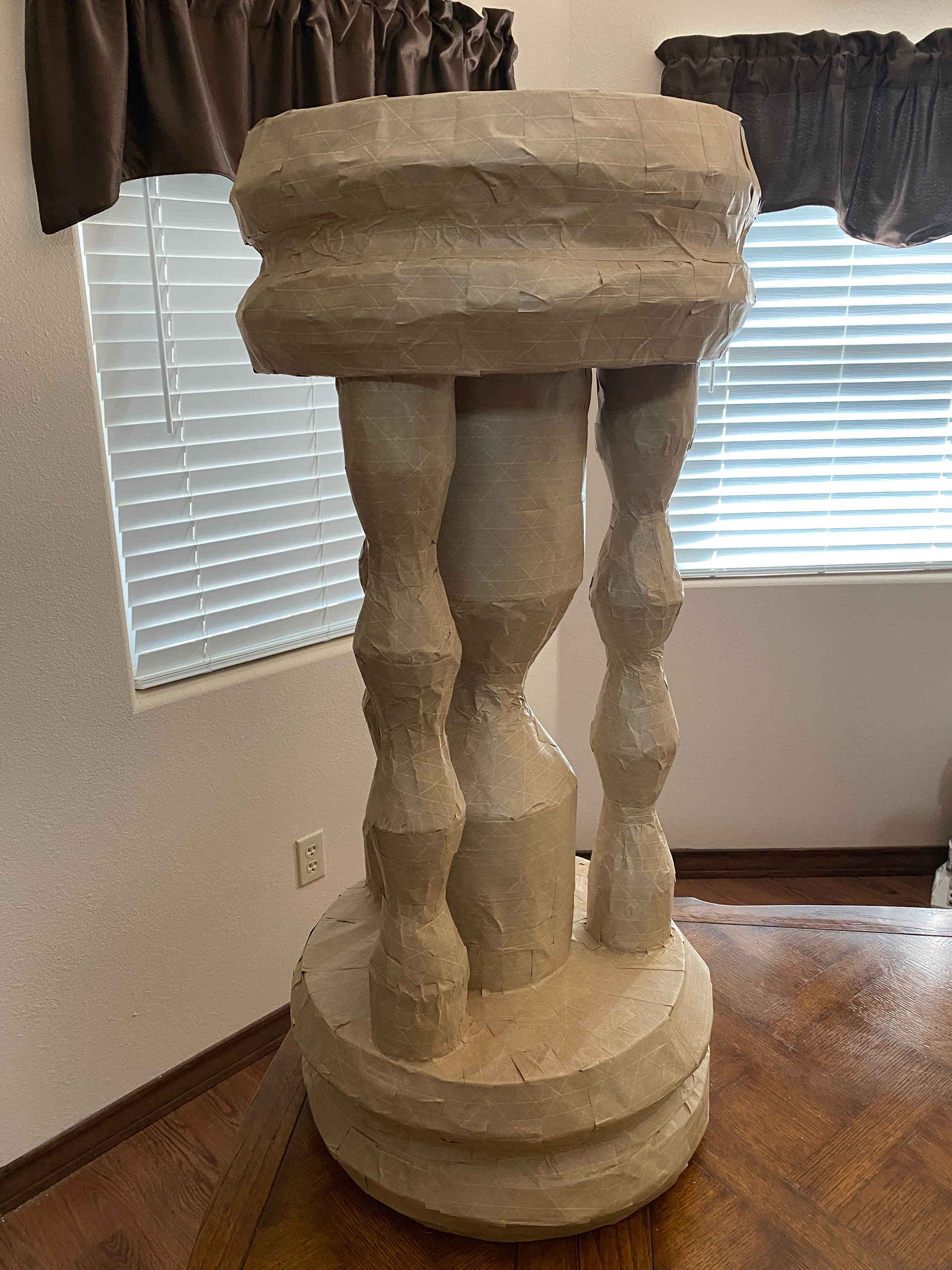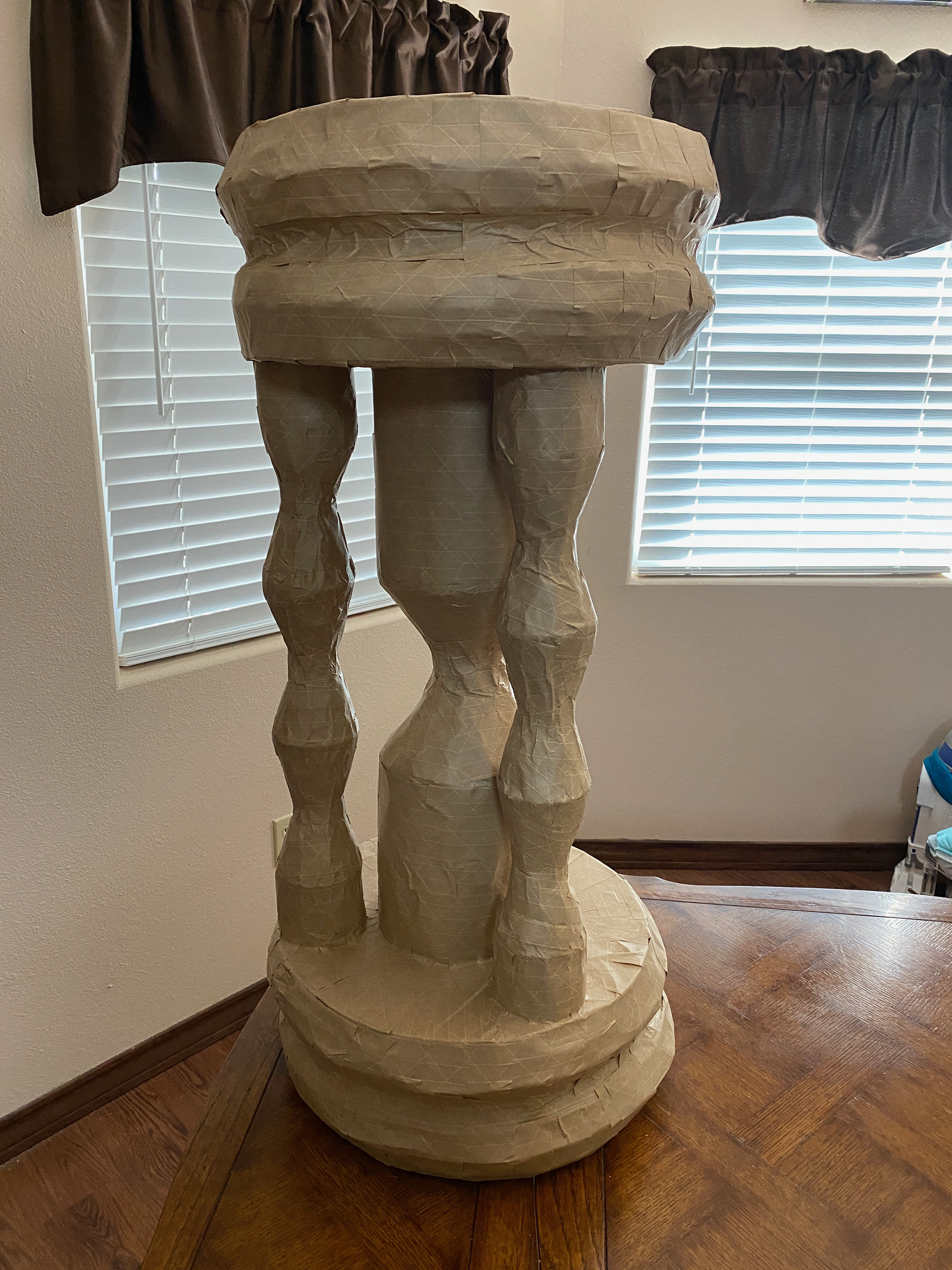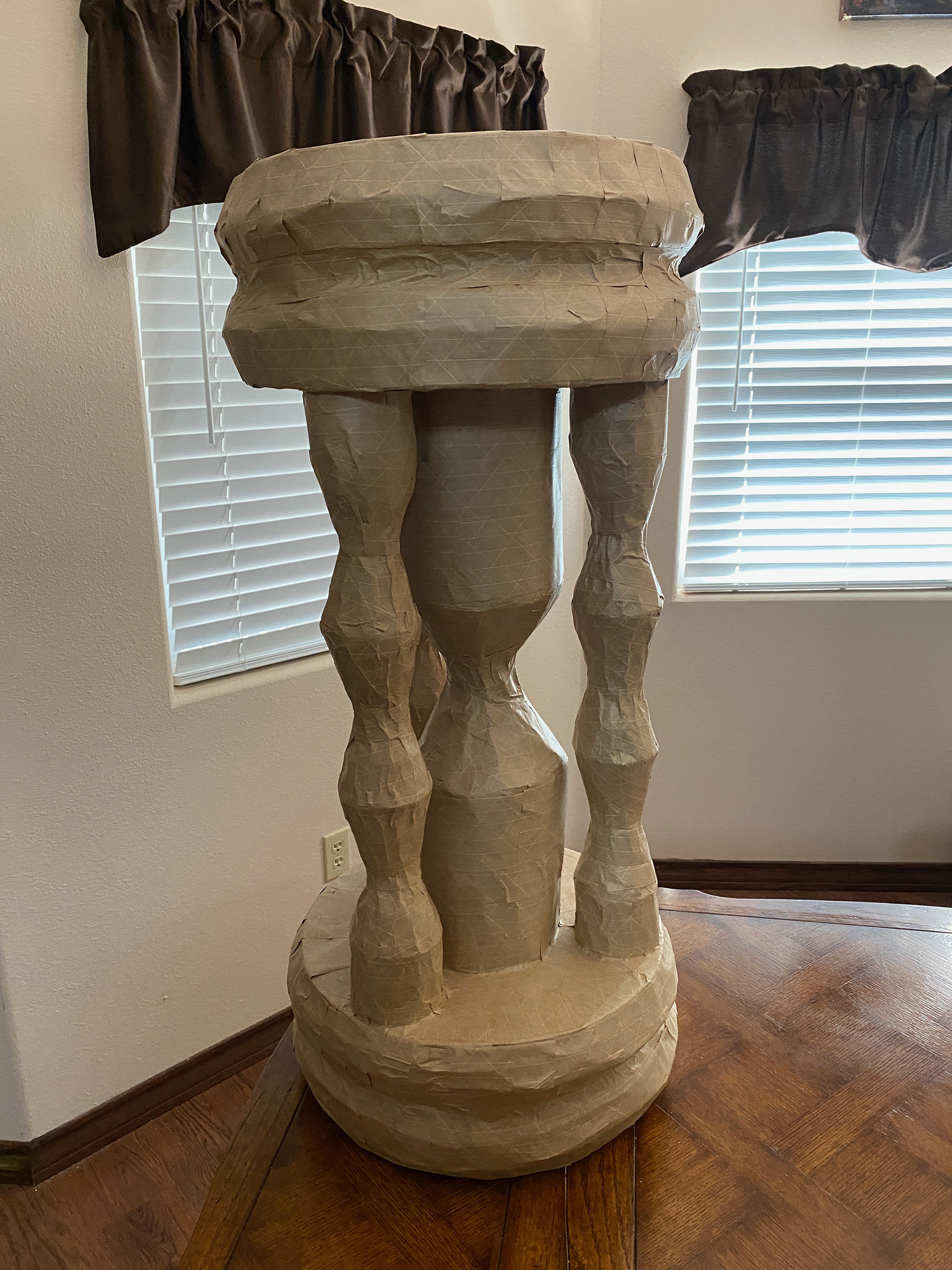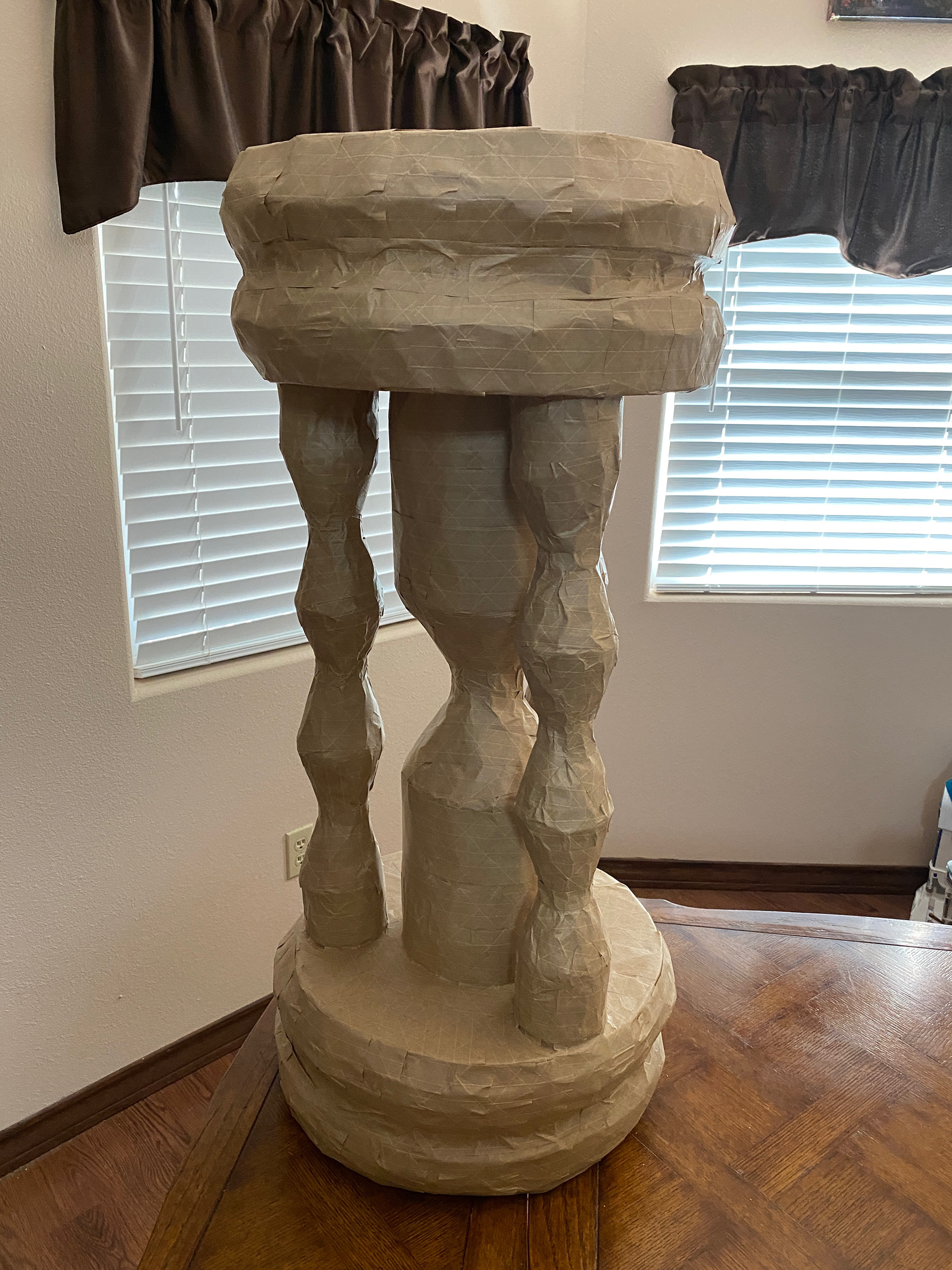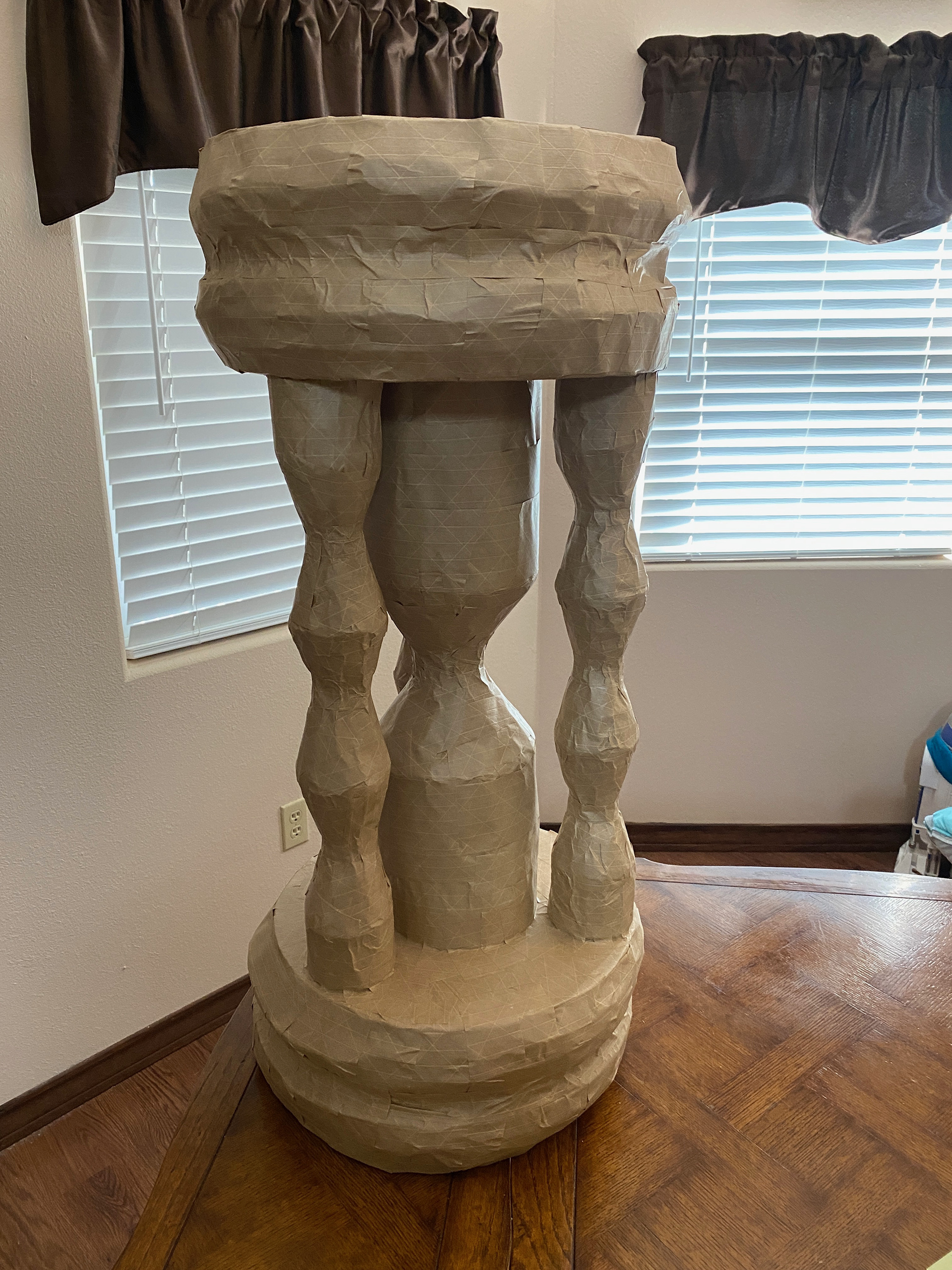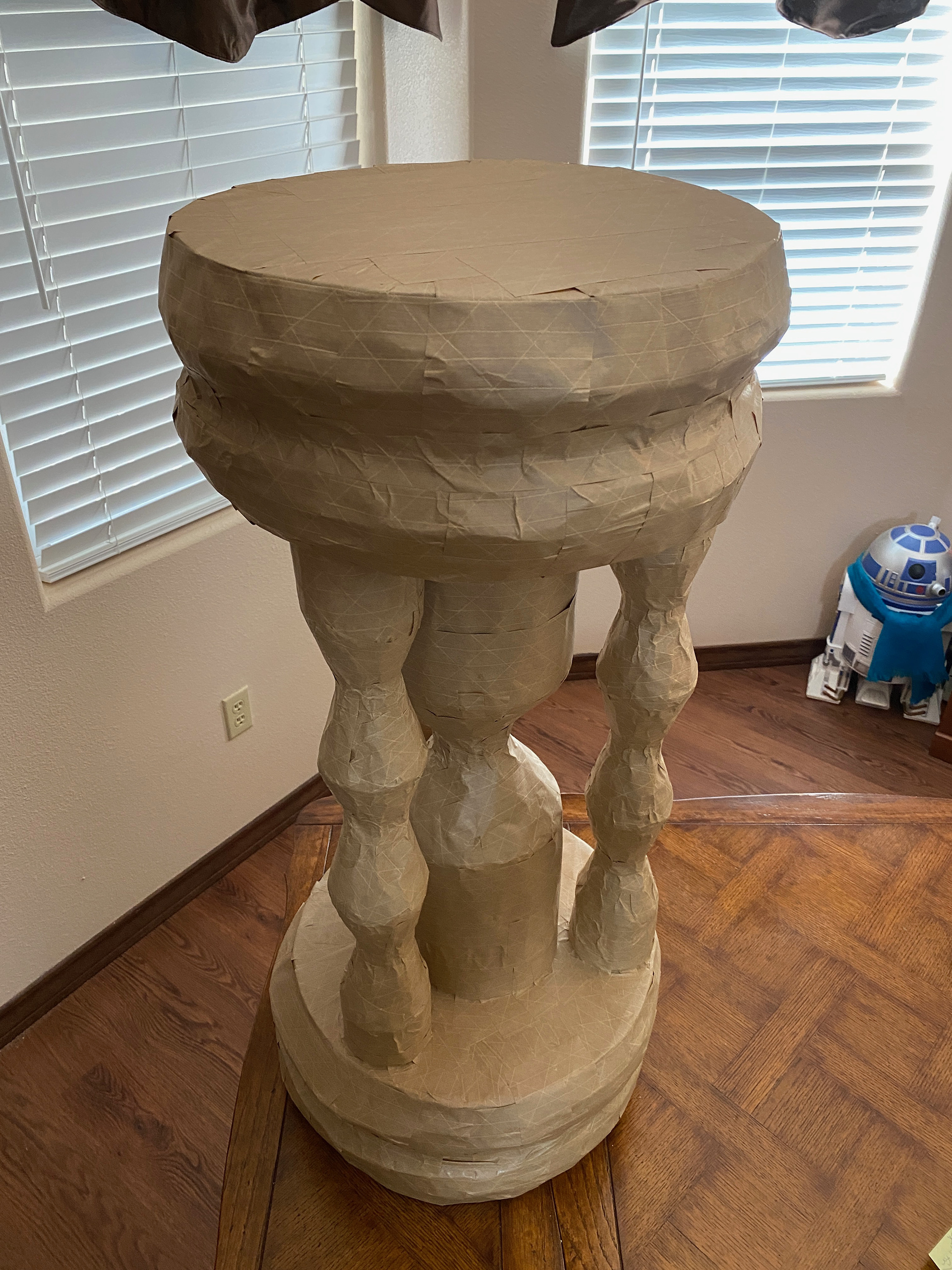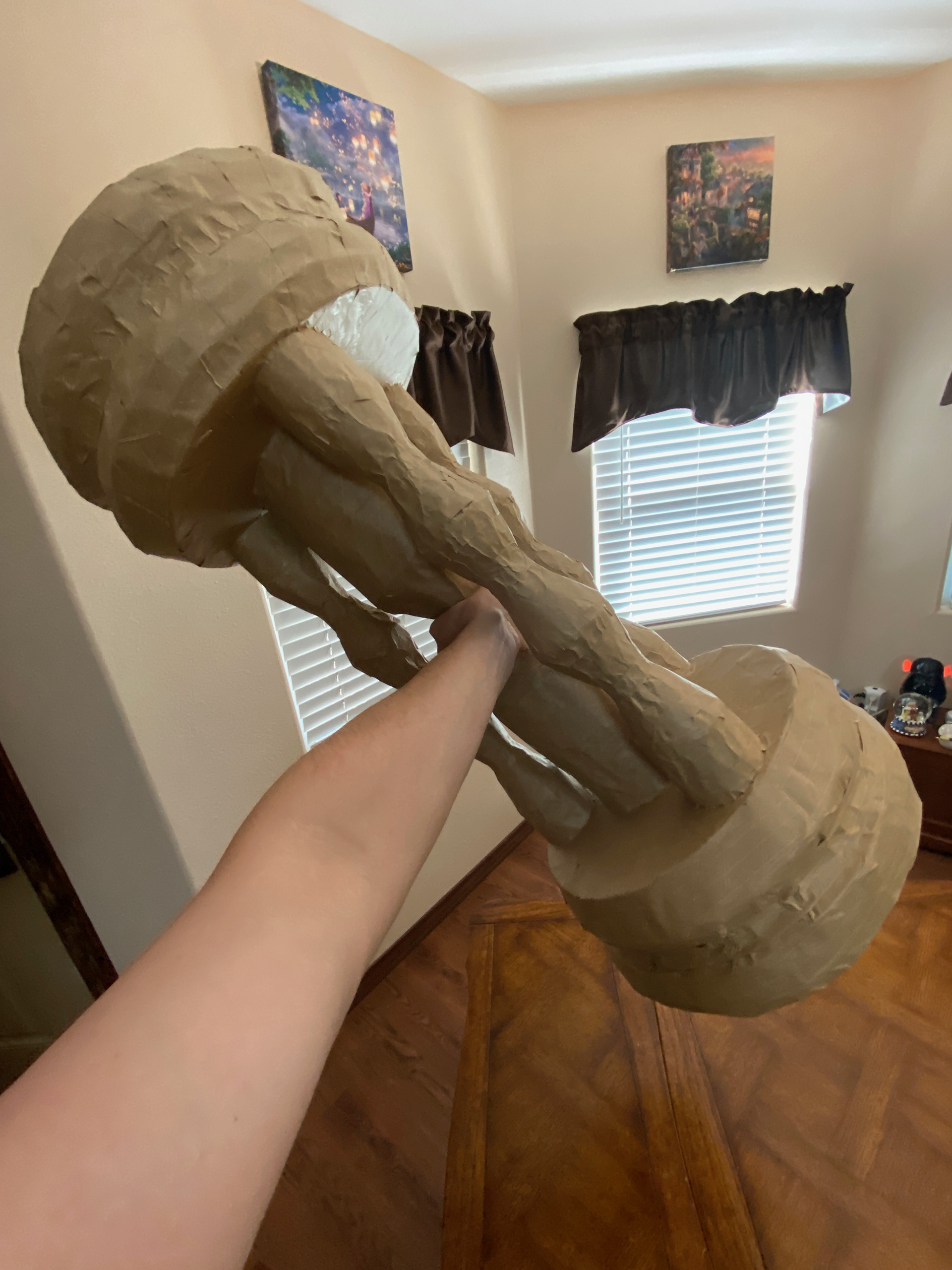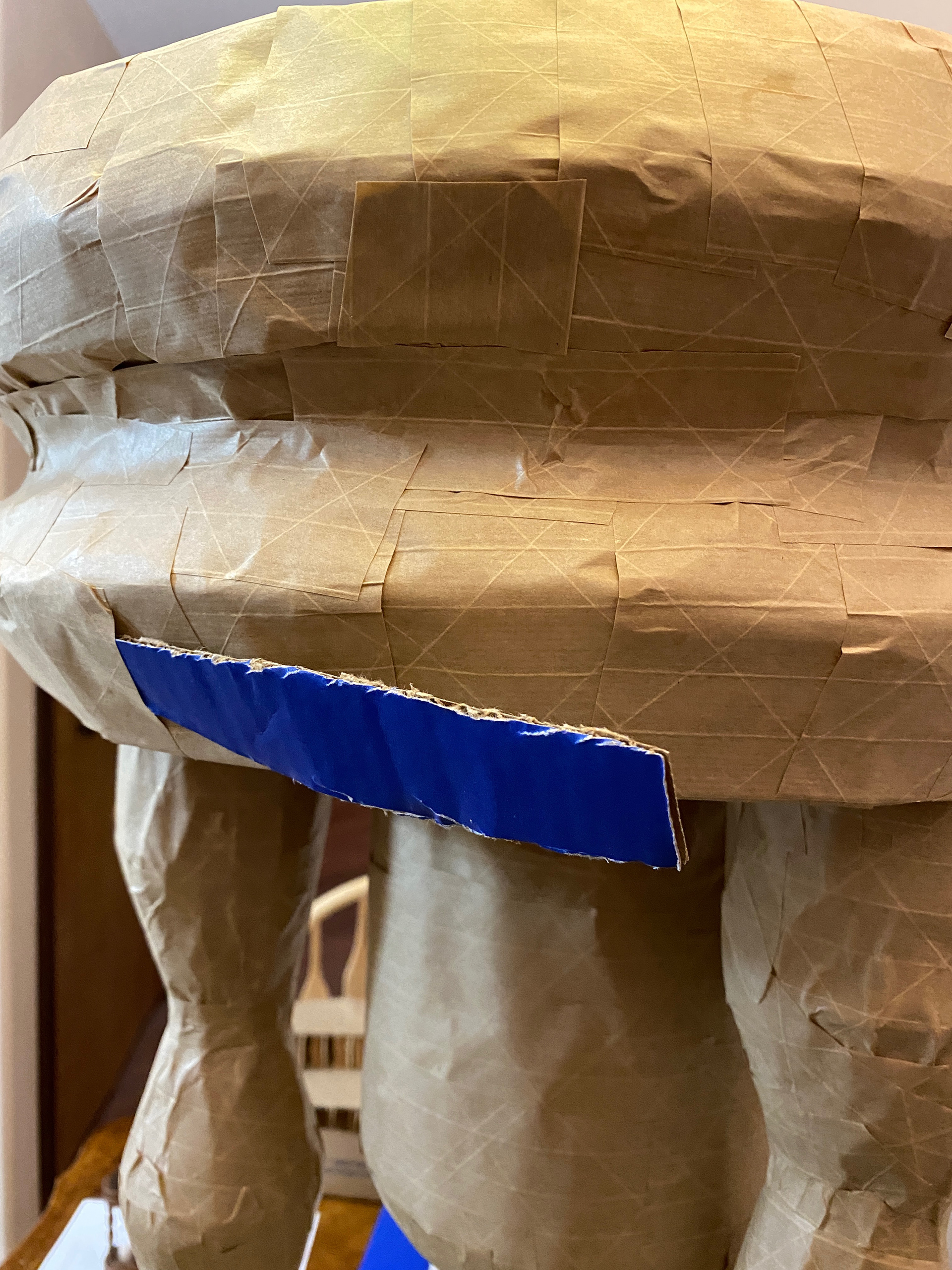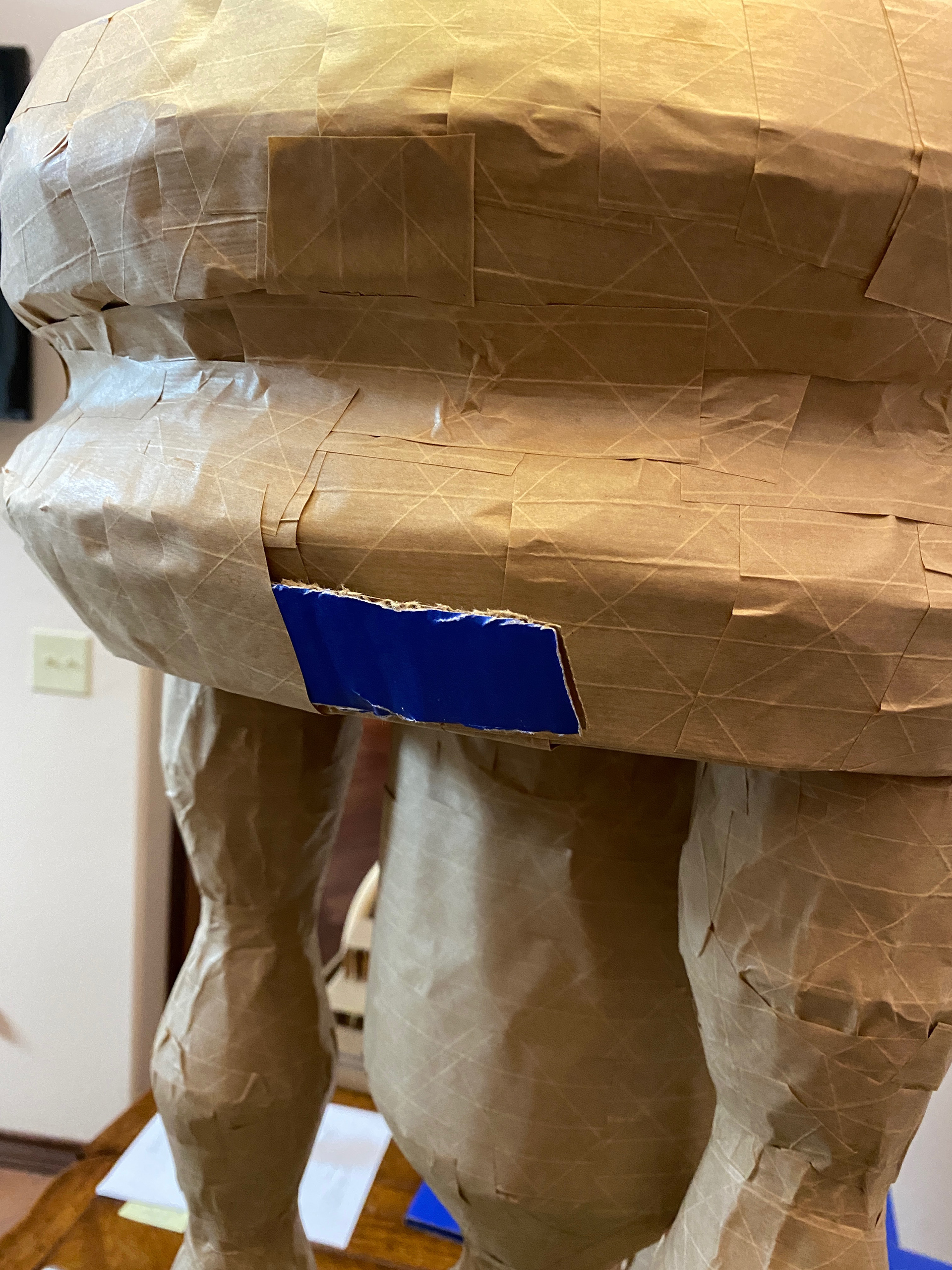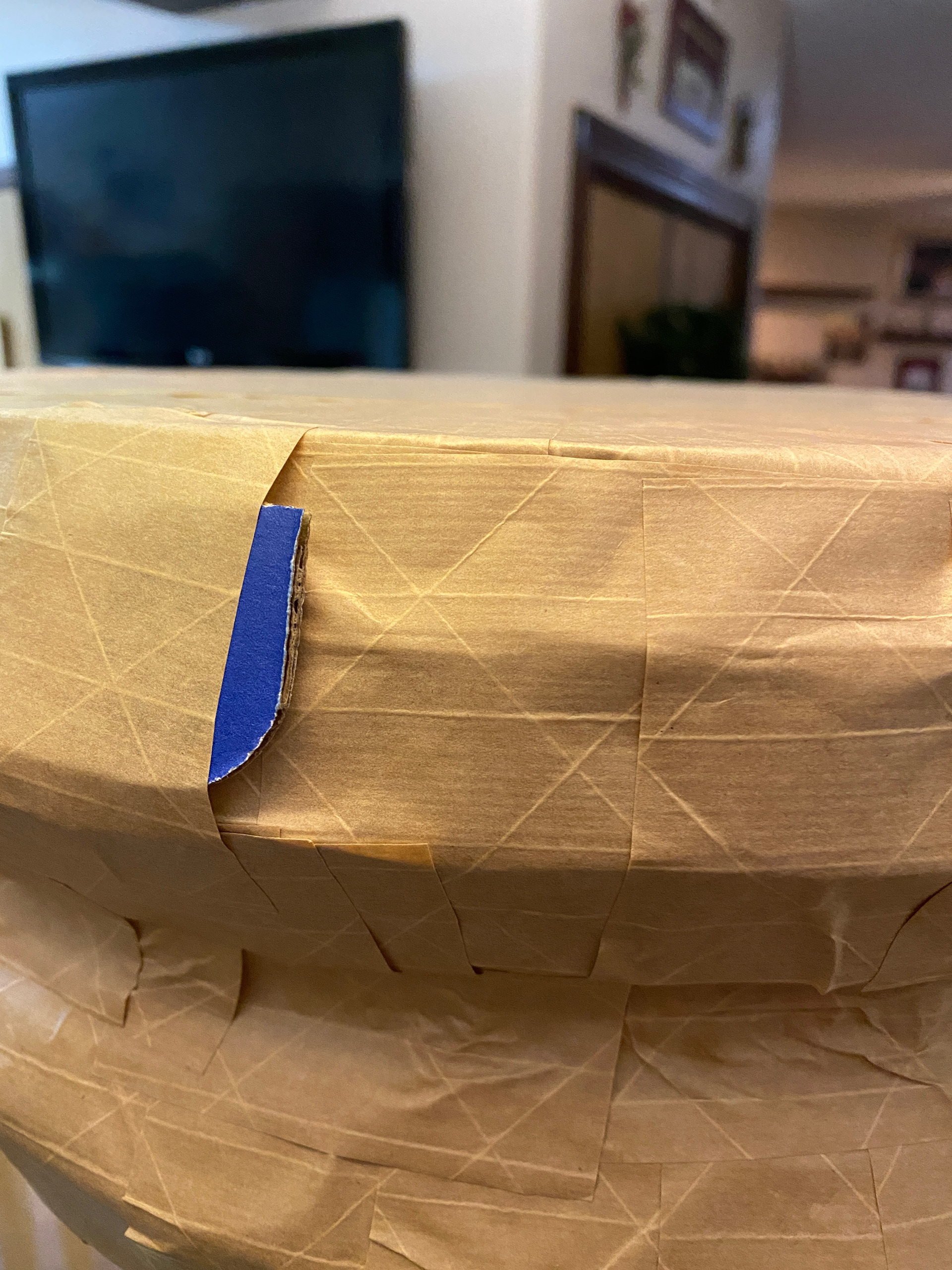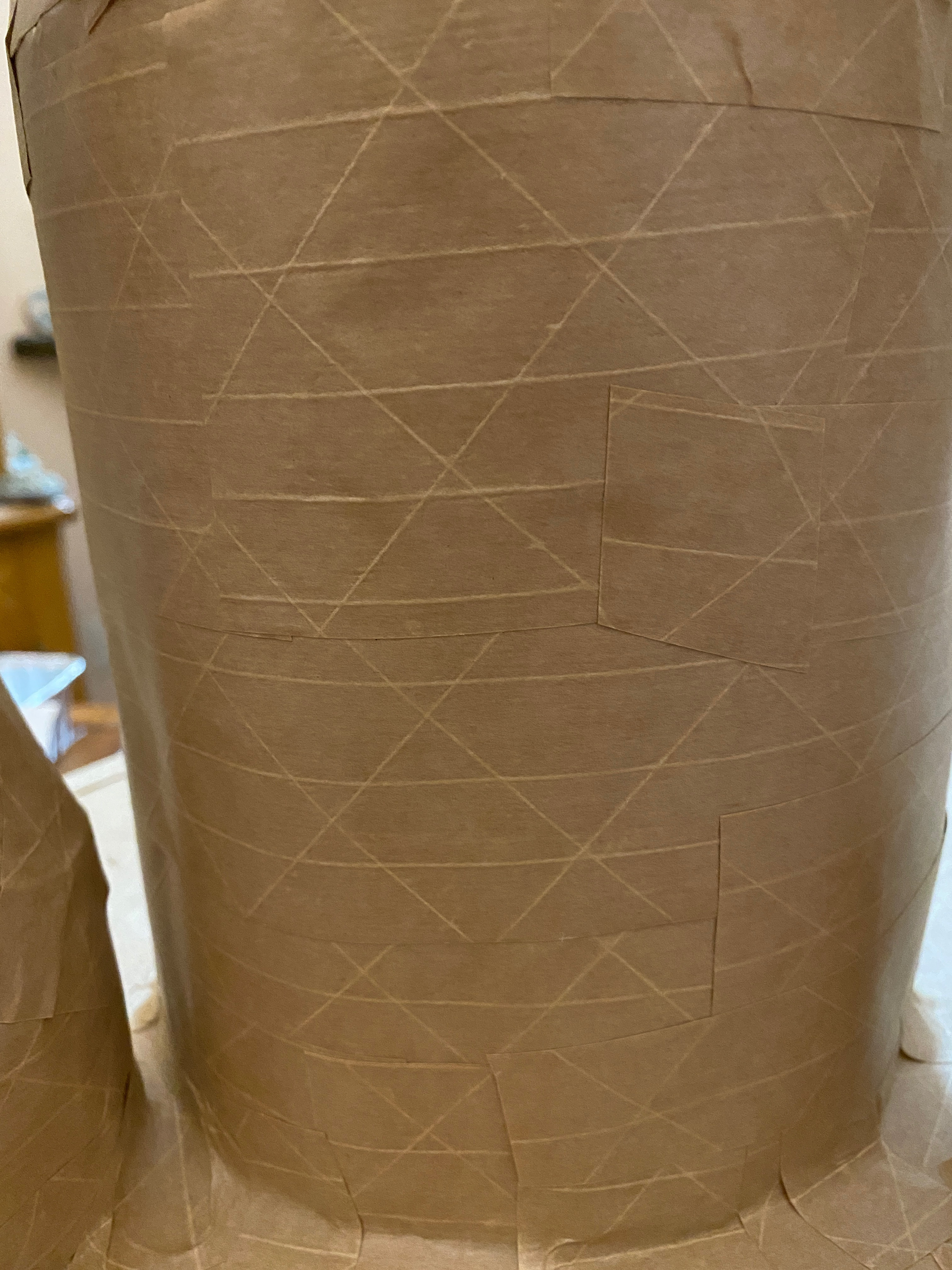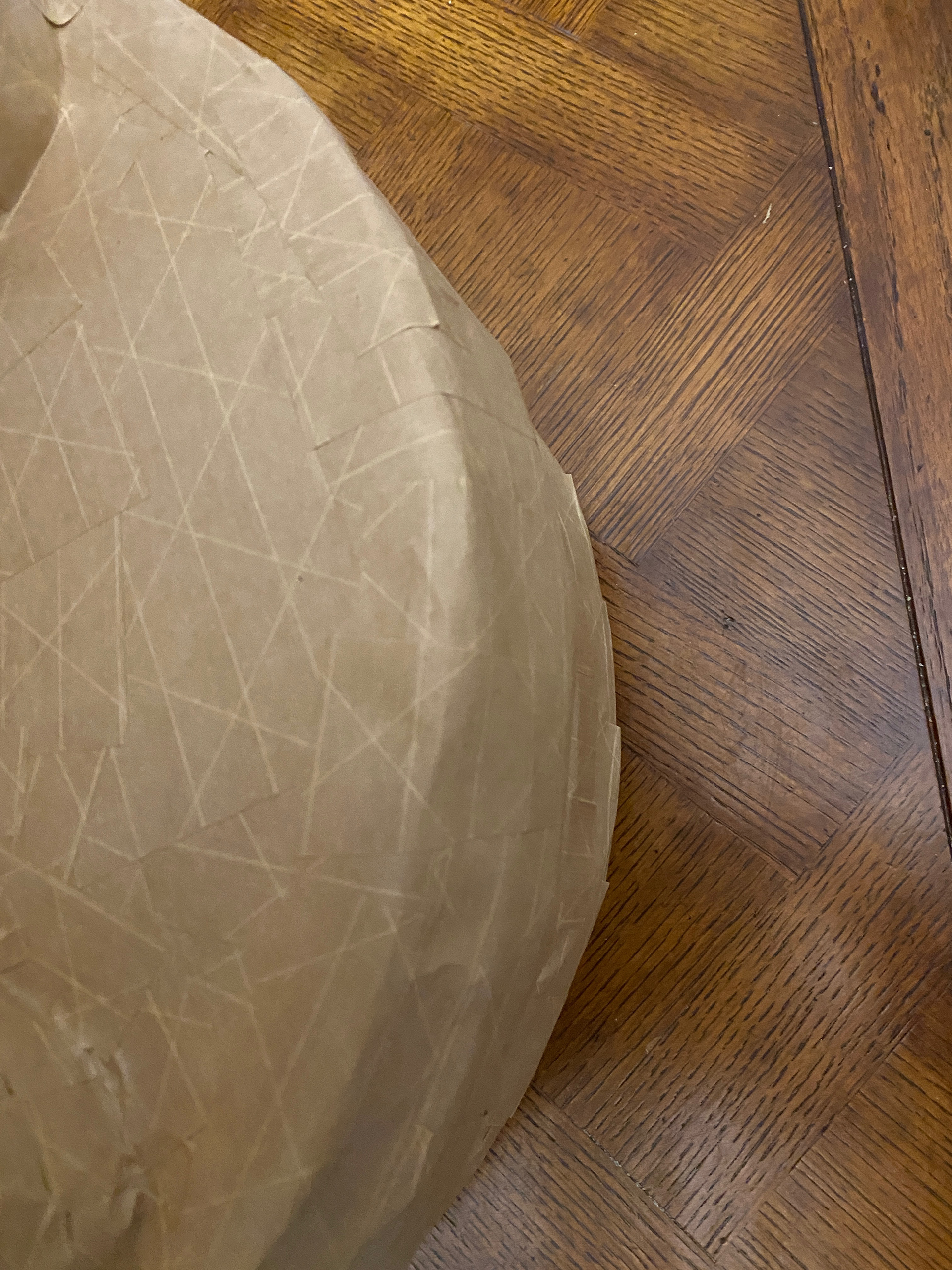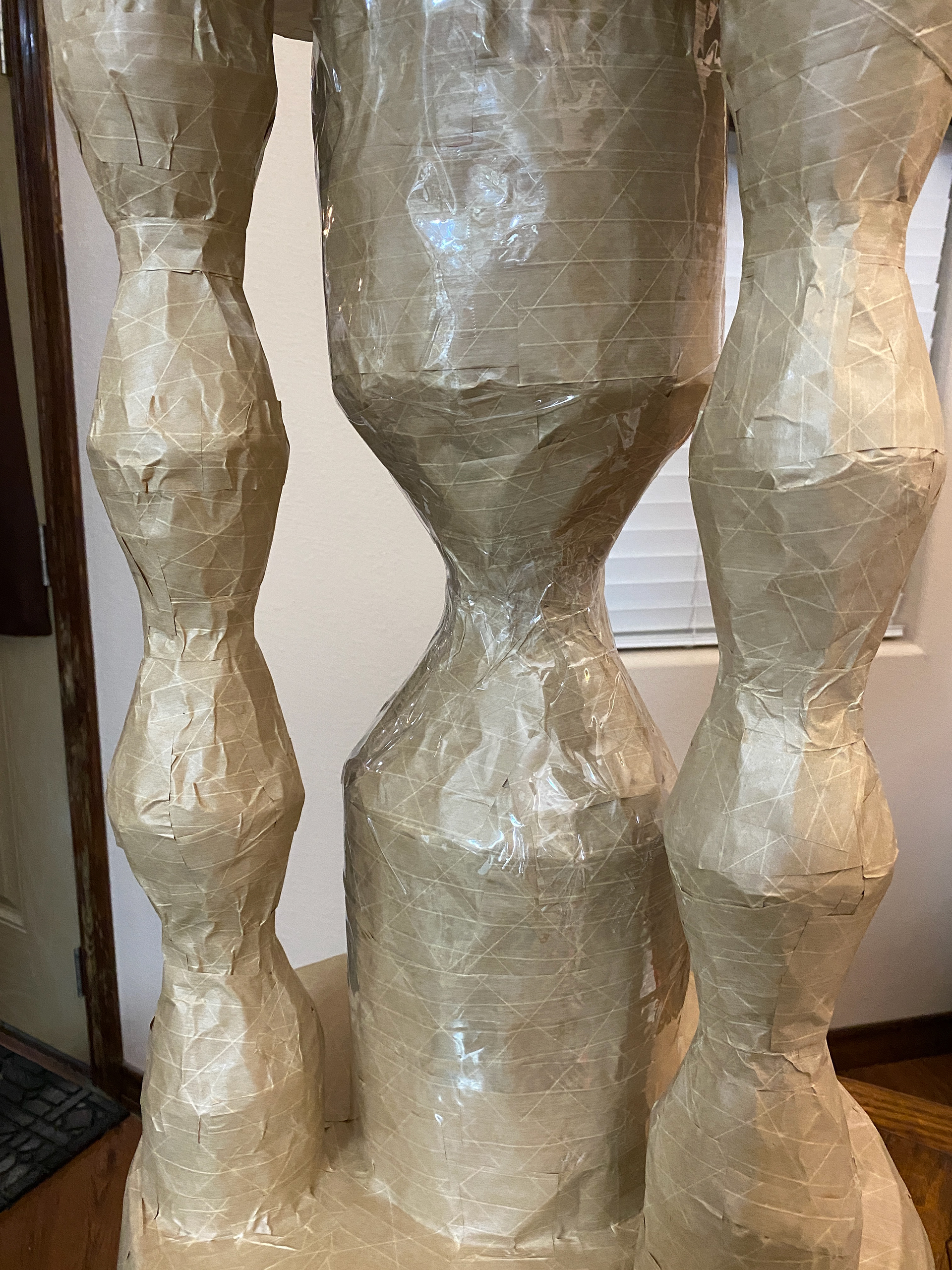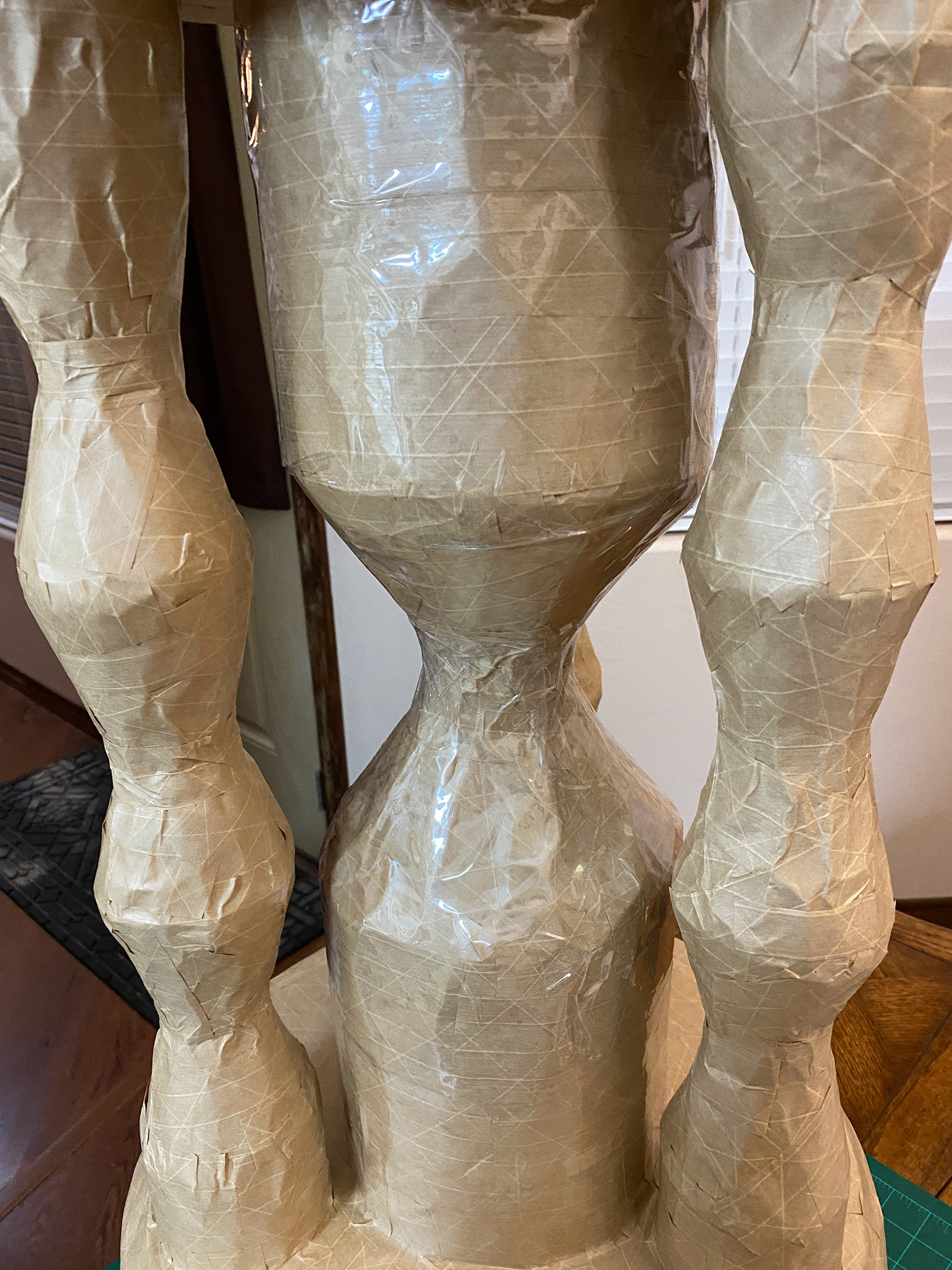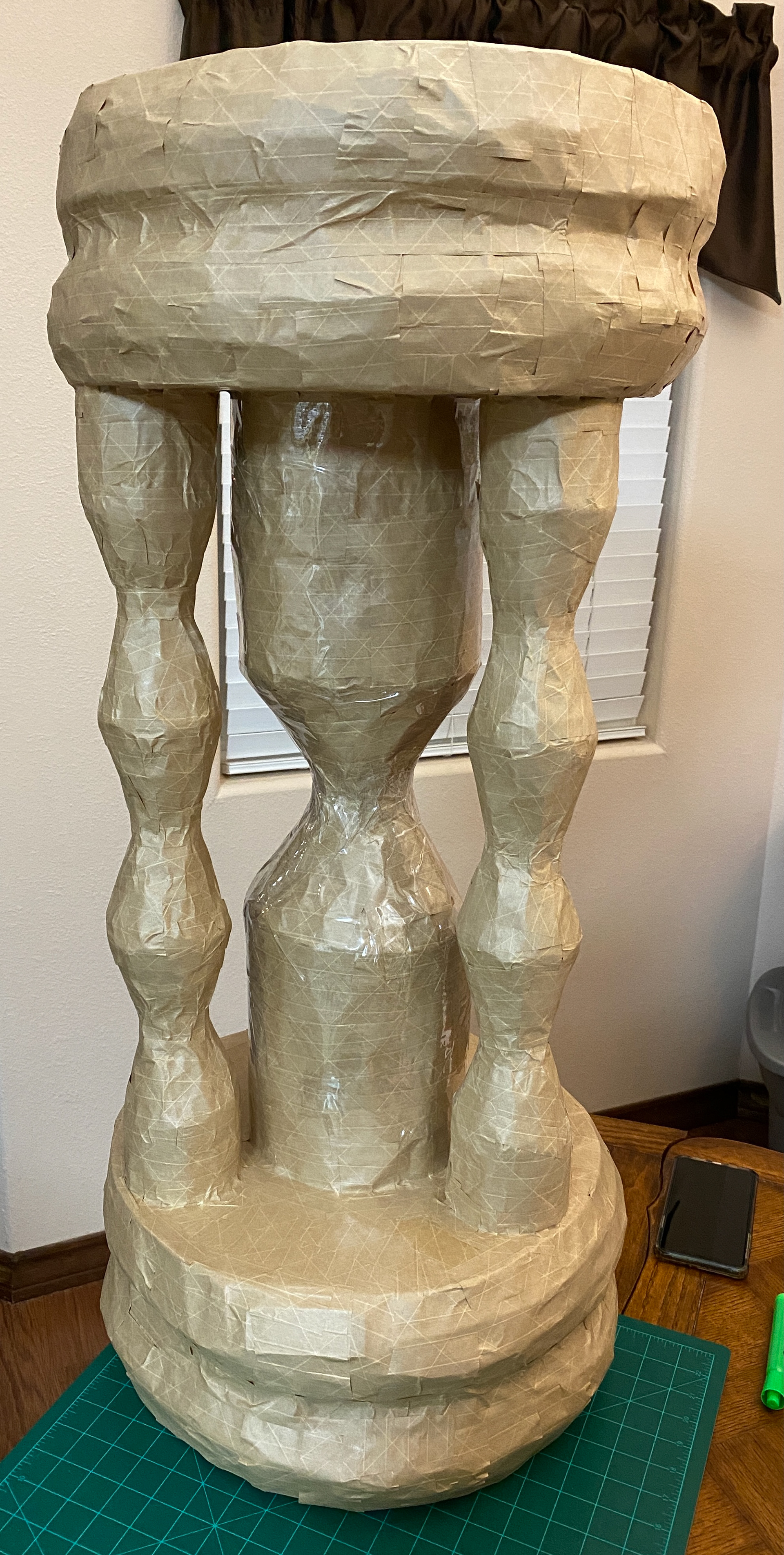Materials: Cardboard, Paper Tape, Translucent Tape, Wood Glue, Hot Glue, X-Acto Knife, Cutting Mat
Dimensions: 36" H x 16.35" W x 16.35" D
Objective:
To give a recognizable object new understanding through scale and context. The aim of the item is to use design knowledge and powers of observation to create an item indistinguishable from the original item in anything but scale. The viewer’s experience of the object should not be regarding the artist’s interpretation or stylistic rendering; it should be that of giving a second look to something they thought they recognized in a new context.
To further emphasize this point, once the object is done, consider where (if you had the resources or influence) you would want the item displayed or installed in order to create the largest impact for the viewer.
Strategies:
1. Select a recognizable object that you can hold in two hands, preferably not something that could decay during the course of the project.
2. Item must be scaled up to no more than 30" - 36” at the widest/deepest/longest part of the object. Once you find the largest measurable part of your object and determine the ratio by which it needs to increase, sketch your item and keep a document of what each dimension needs to translate to. (For example, if you are doing a soda can, first determine how tall it will be, then how big across, how far around, the height of the lip of the aluminum at the top, the length of the tab, etc.)
3. Consider your object from all angles. Your object may have a surprise element you have never considered in your passing interactions with it. Don’t be fooled by what your brain has already checked off! These areas are likely to be of the greatest interest to your viewer.
4. Consider how much cardboard you will need before you cut it. This can be particularly tricky for items that curve along a length. You may think you only need 18” of cardboard, but if the object curves, you will actually need more.
5. When building and considering where such a work might be best displayed, consider places that this object would be frequently found or never found. Consider individuals who have existing relationships with the object. Think about whether the item is purely functional or has any kind of symbolic meaning to anyone. How do these variables interact with the increased scale and the idea of displaying it?
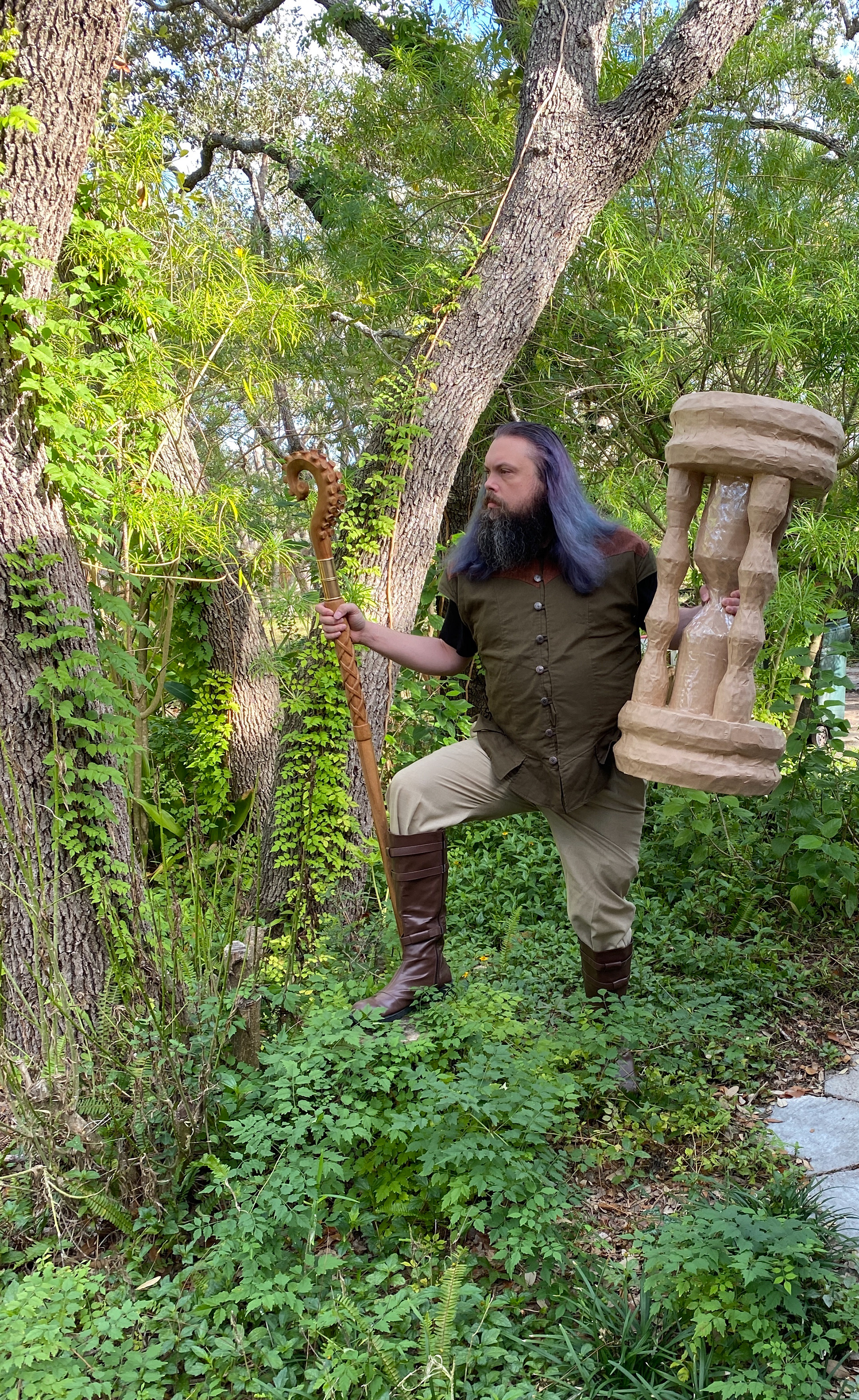
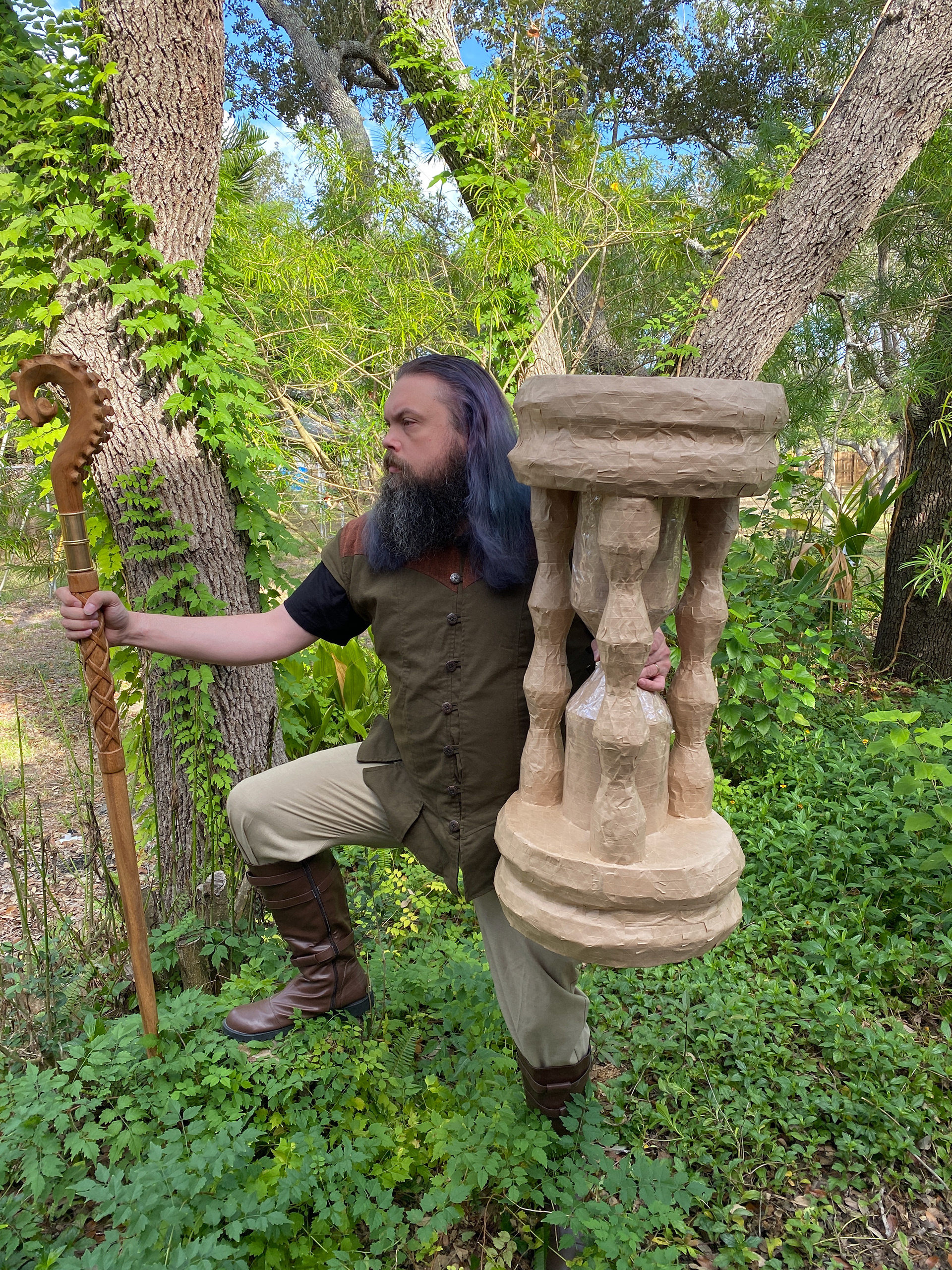
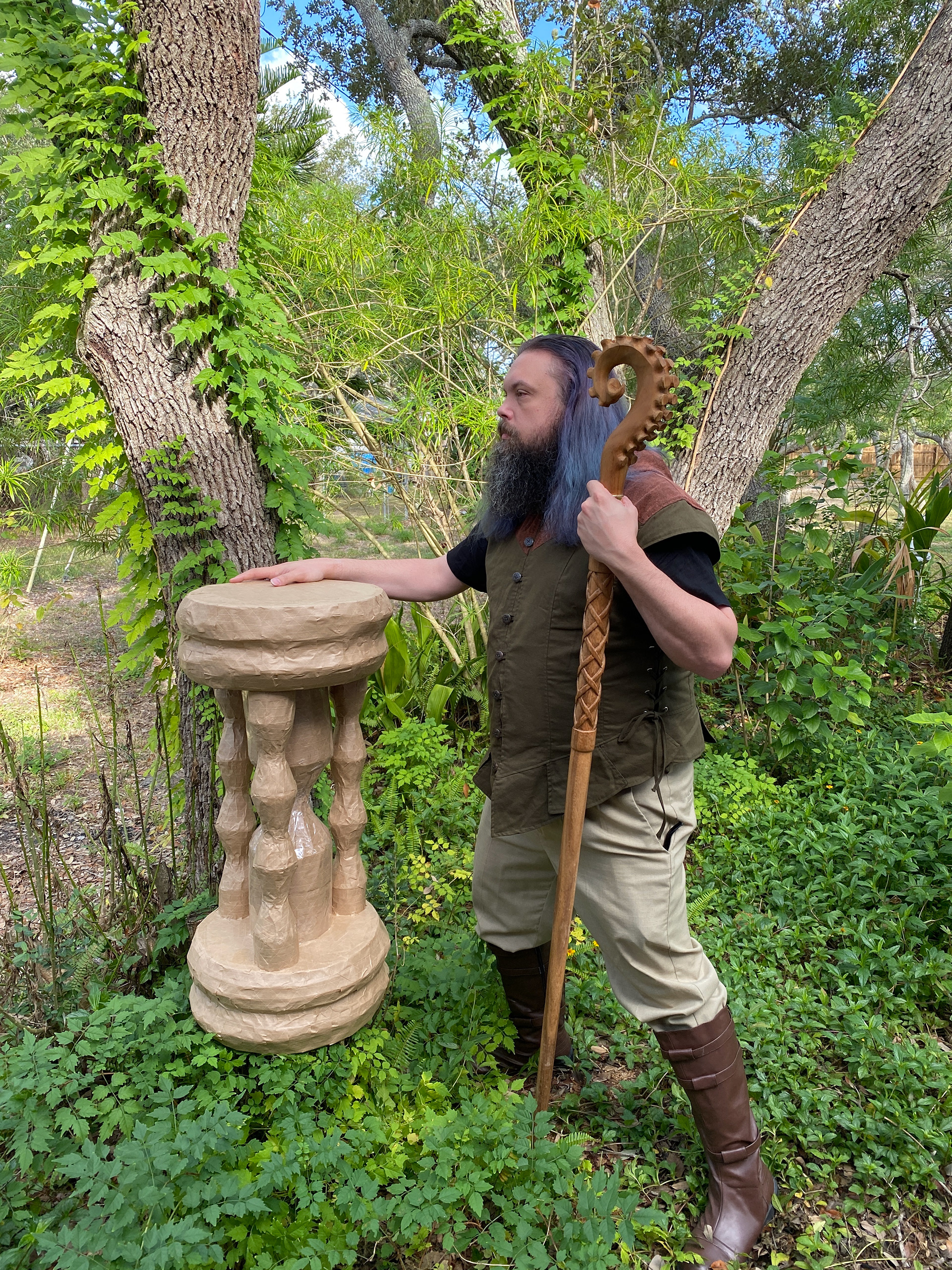
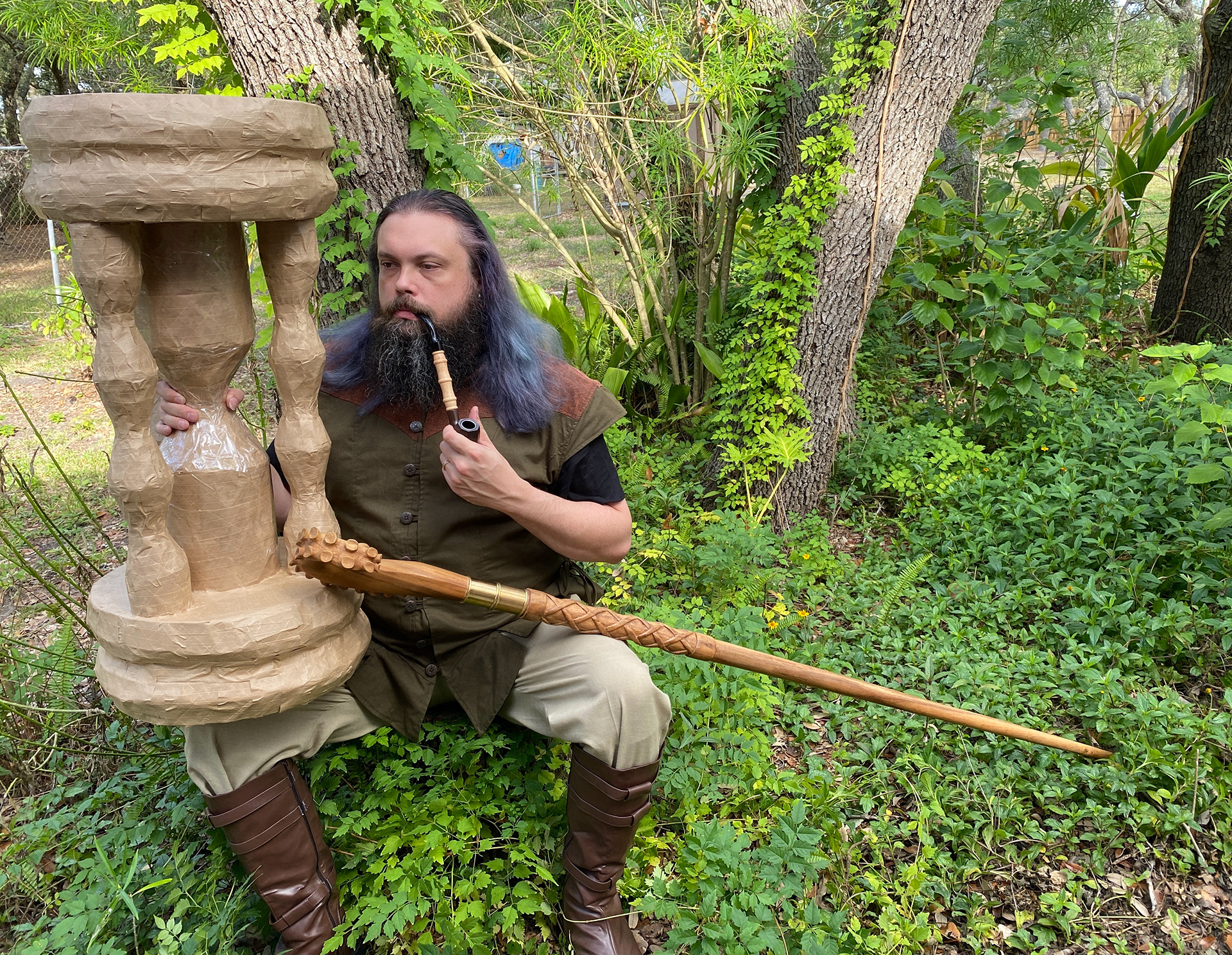
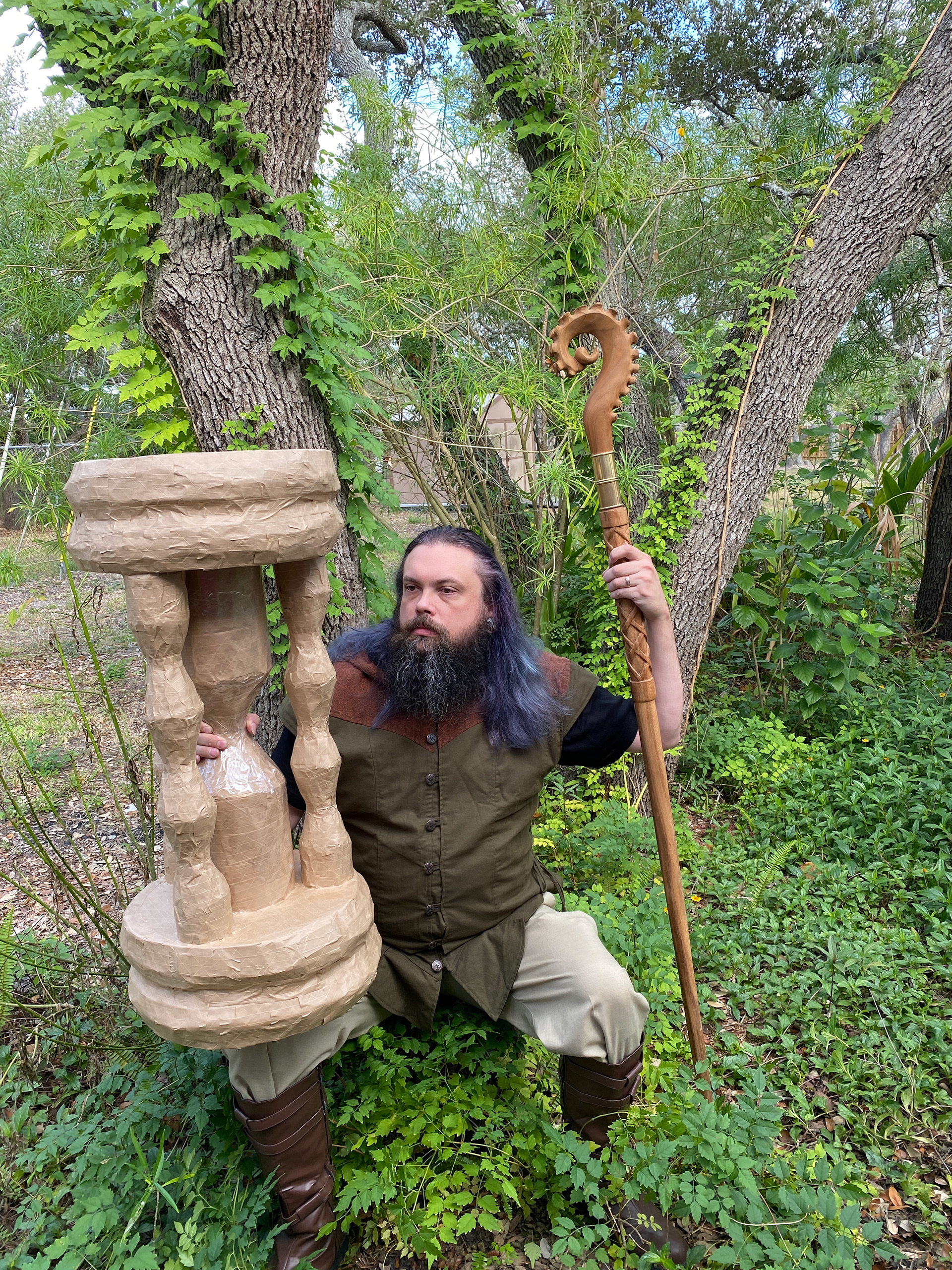
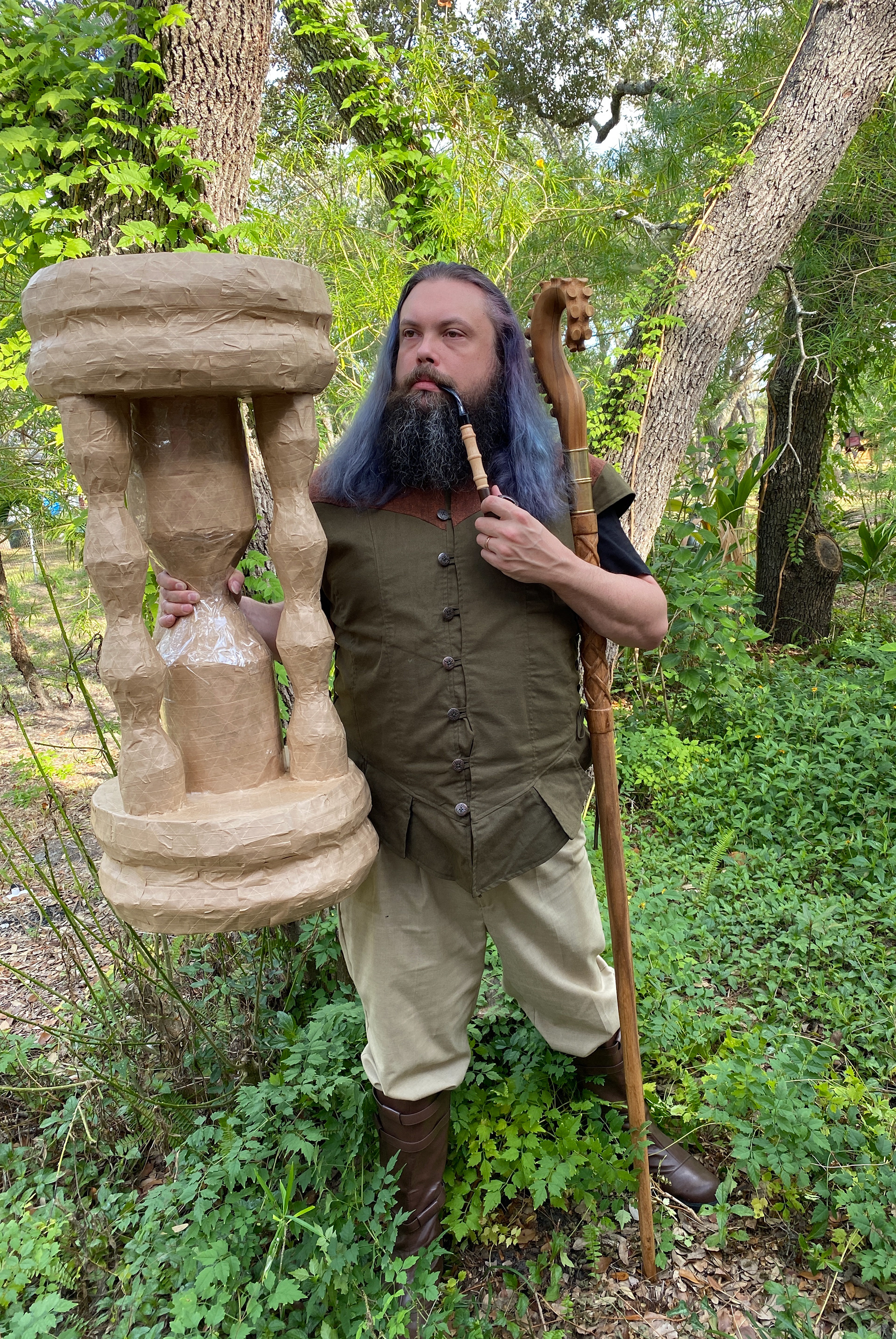
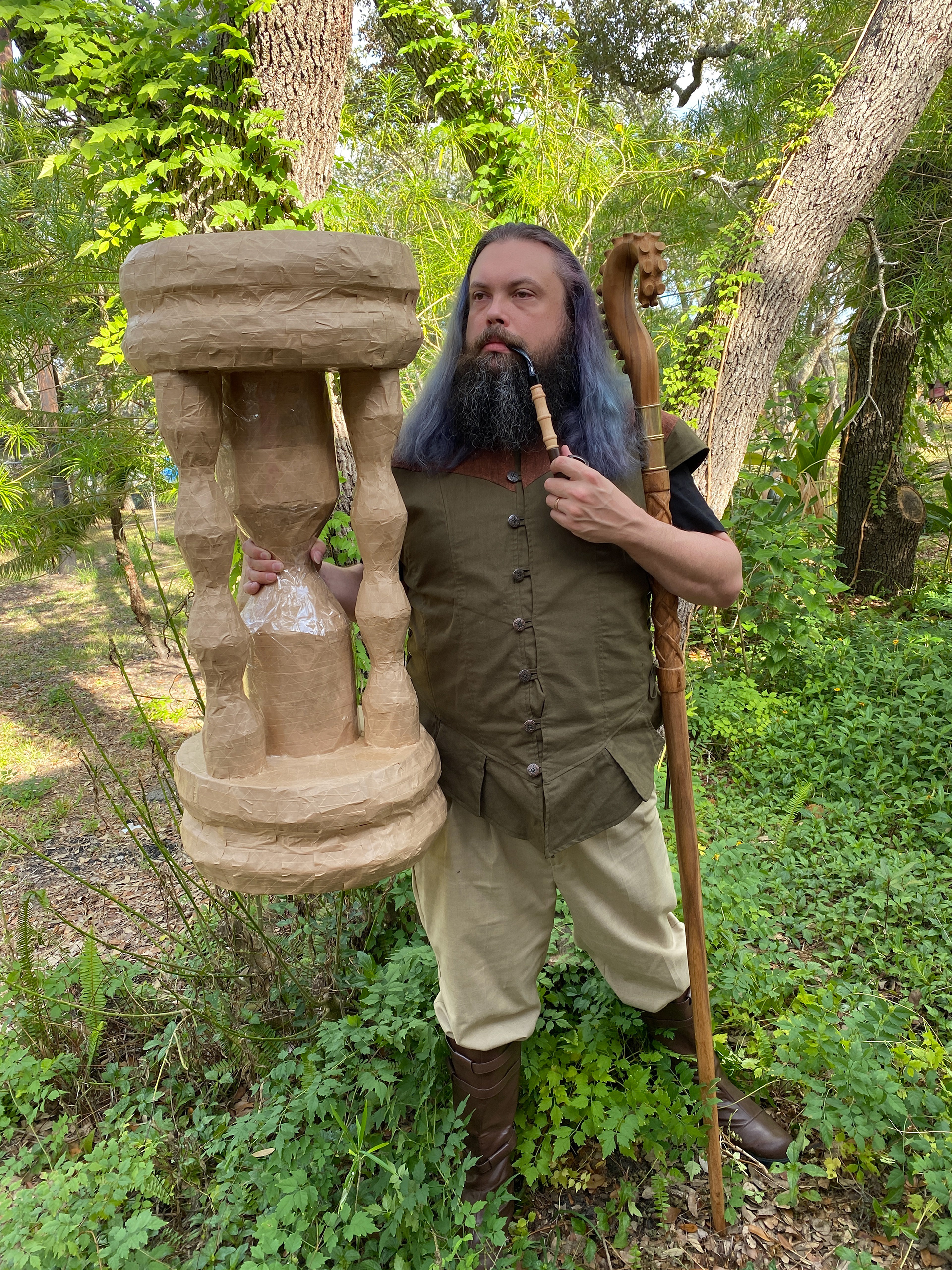
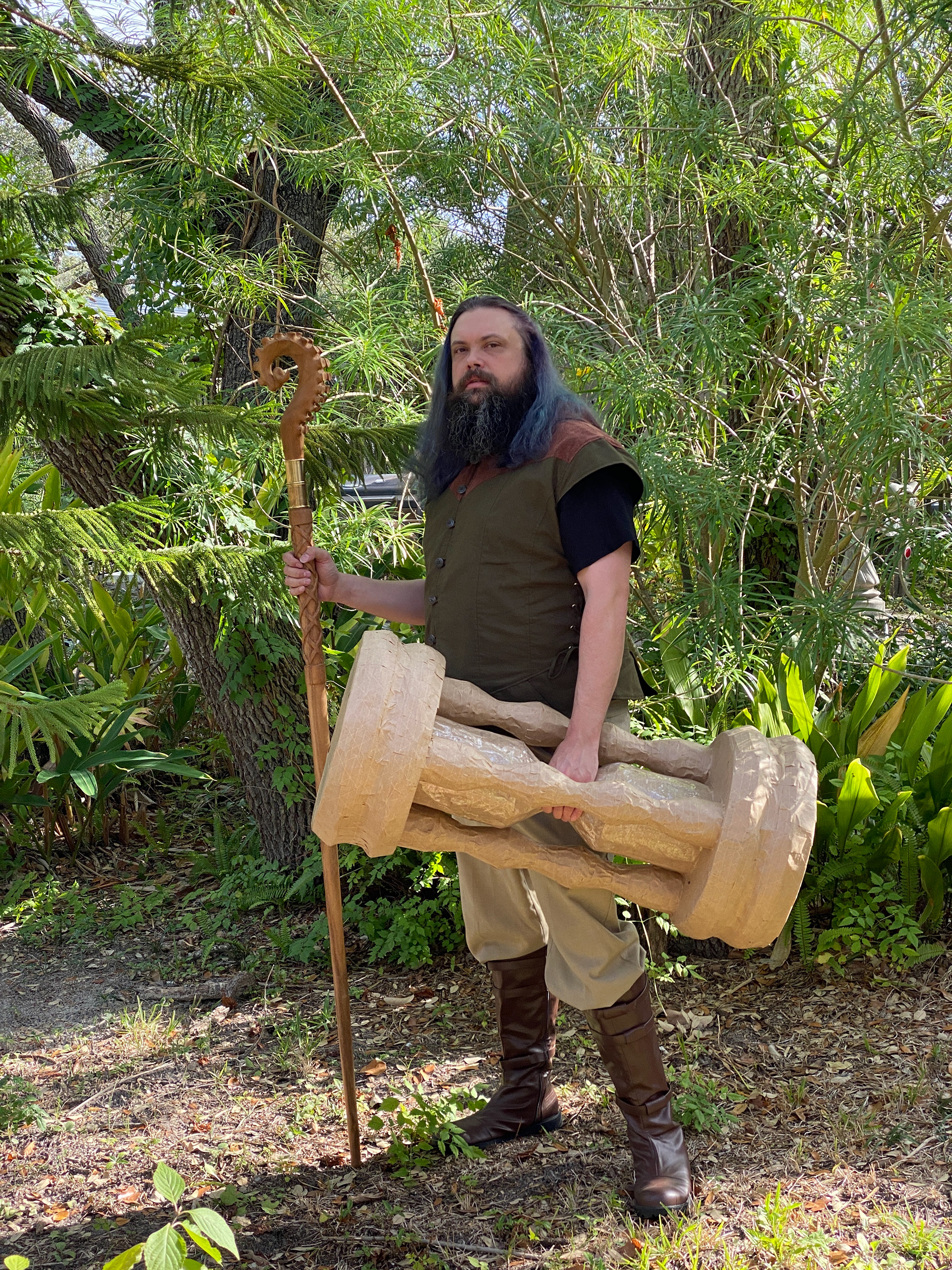
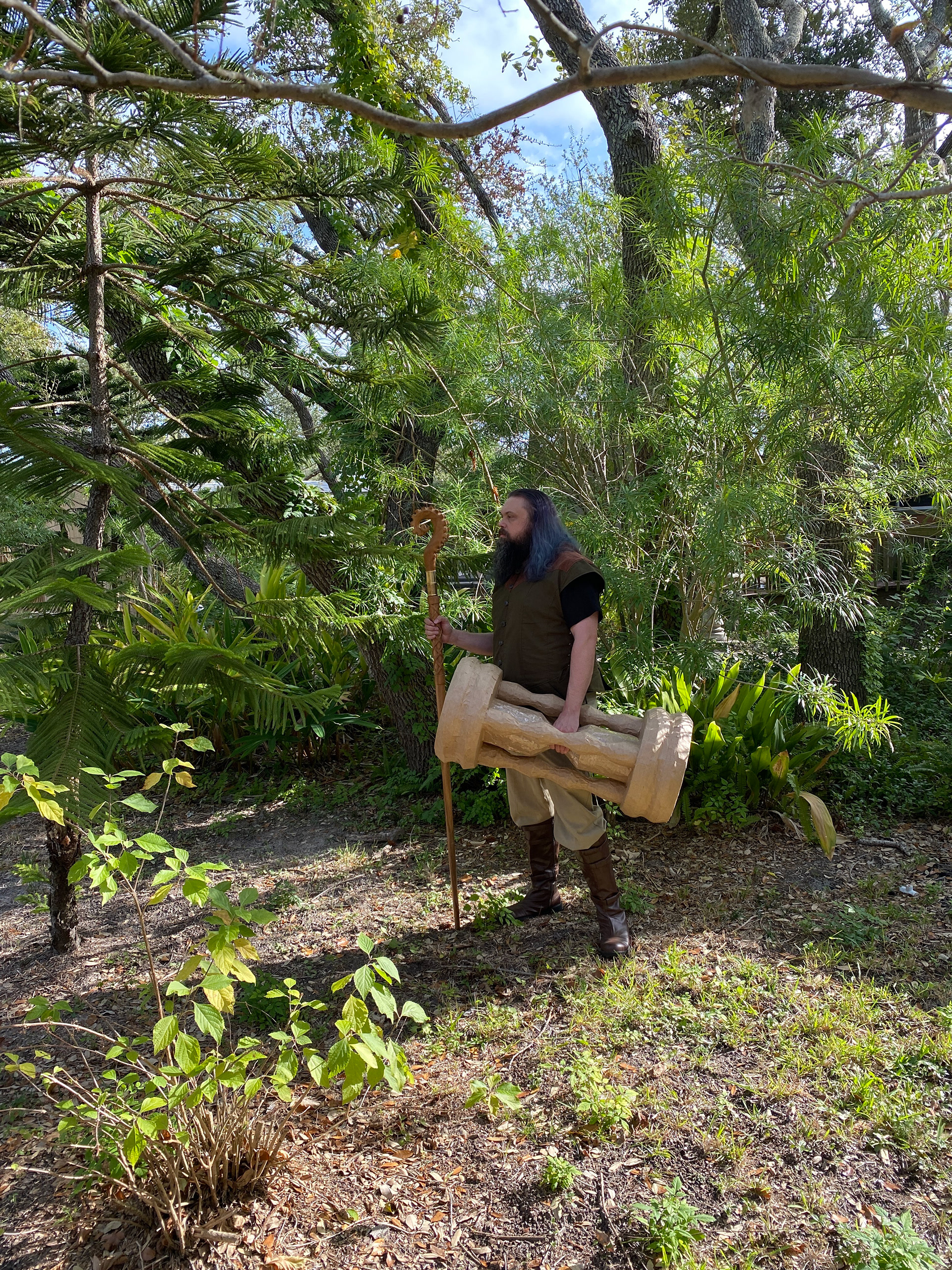
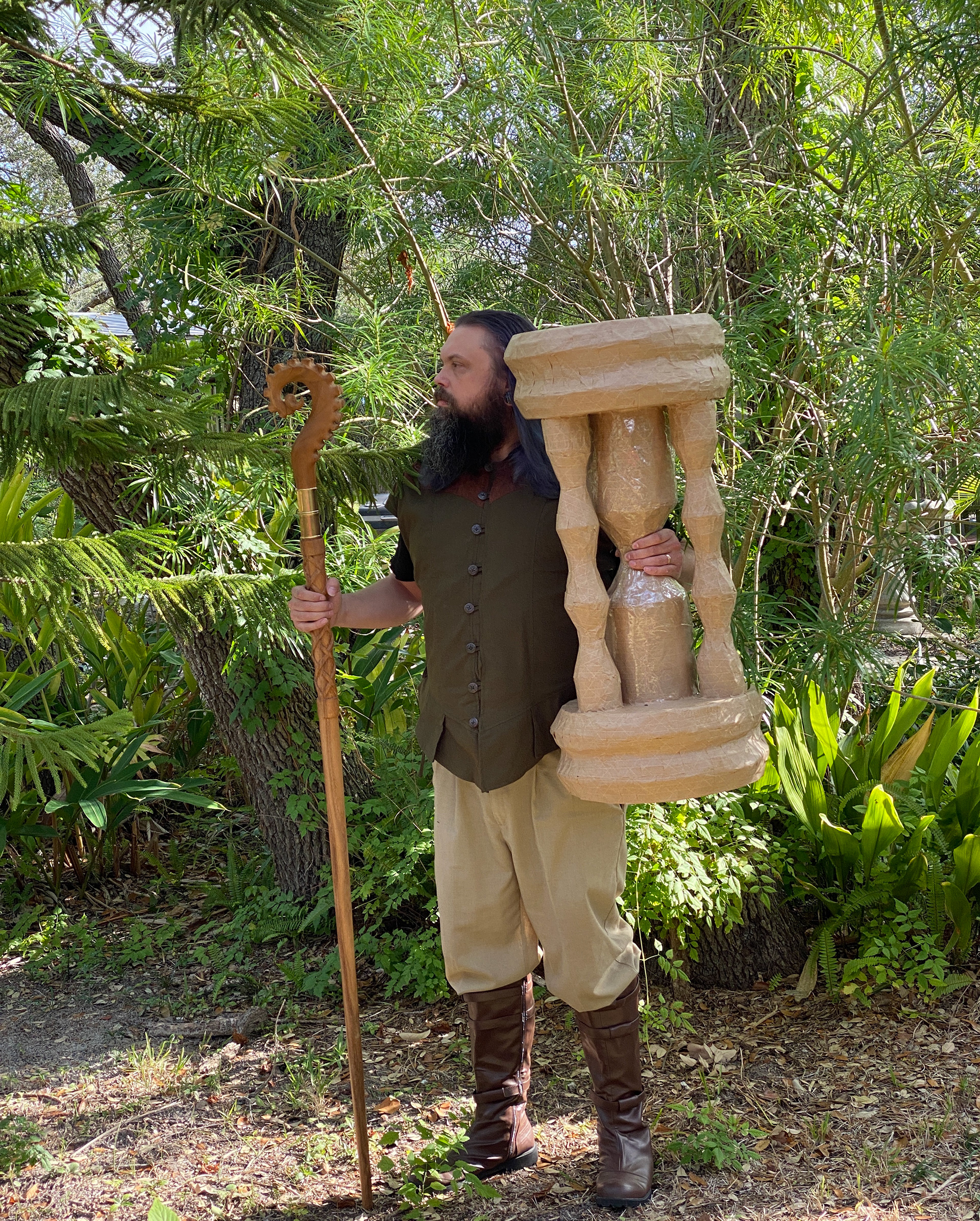
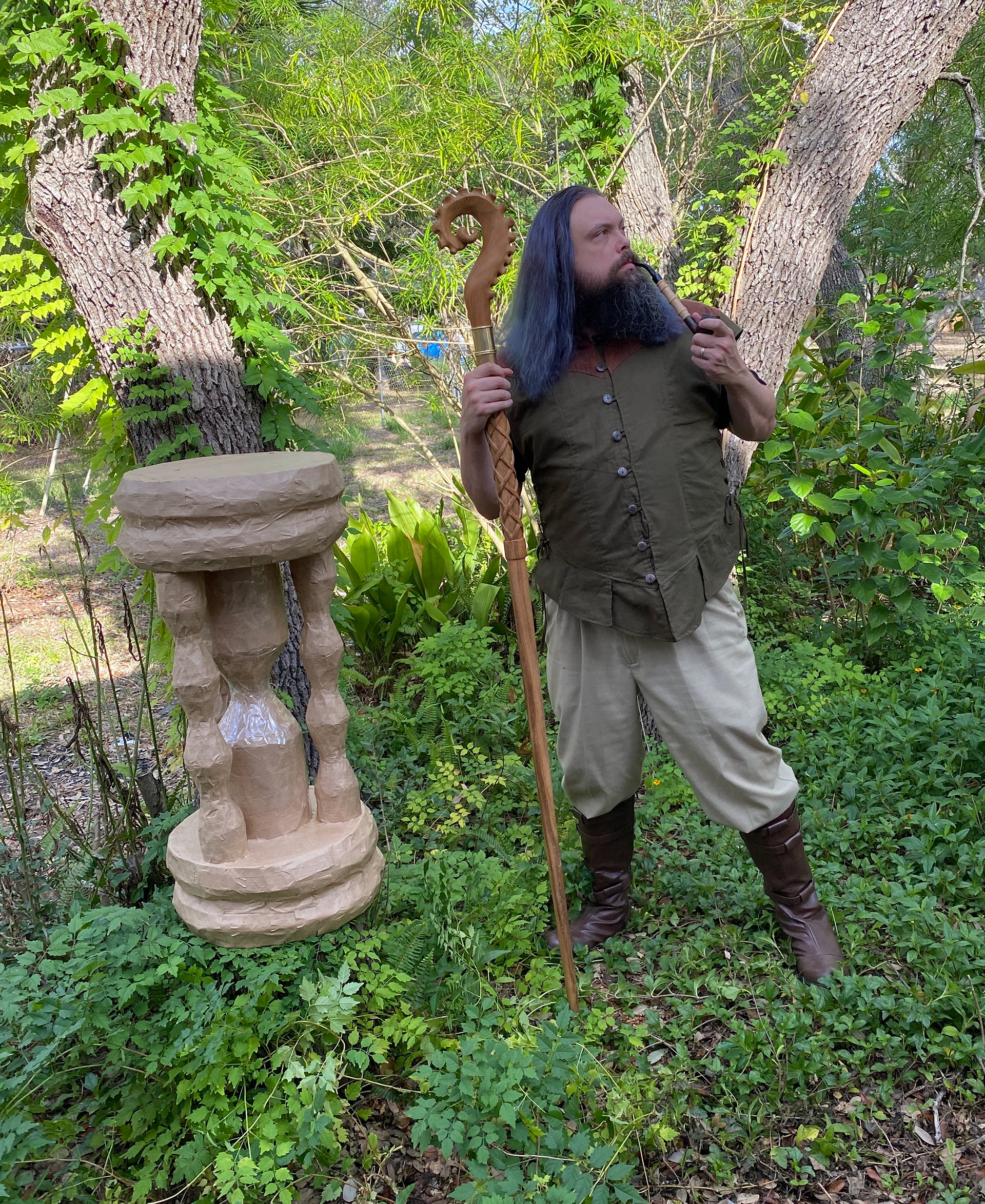
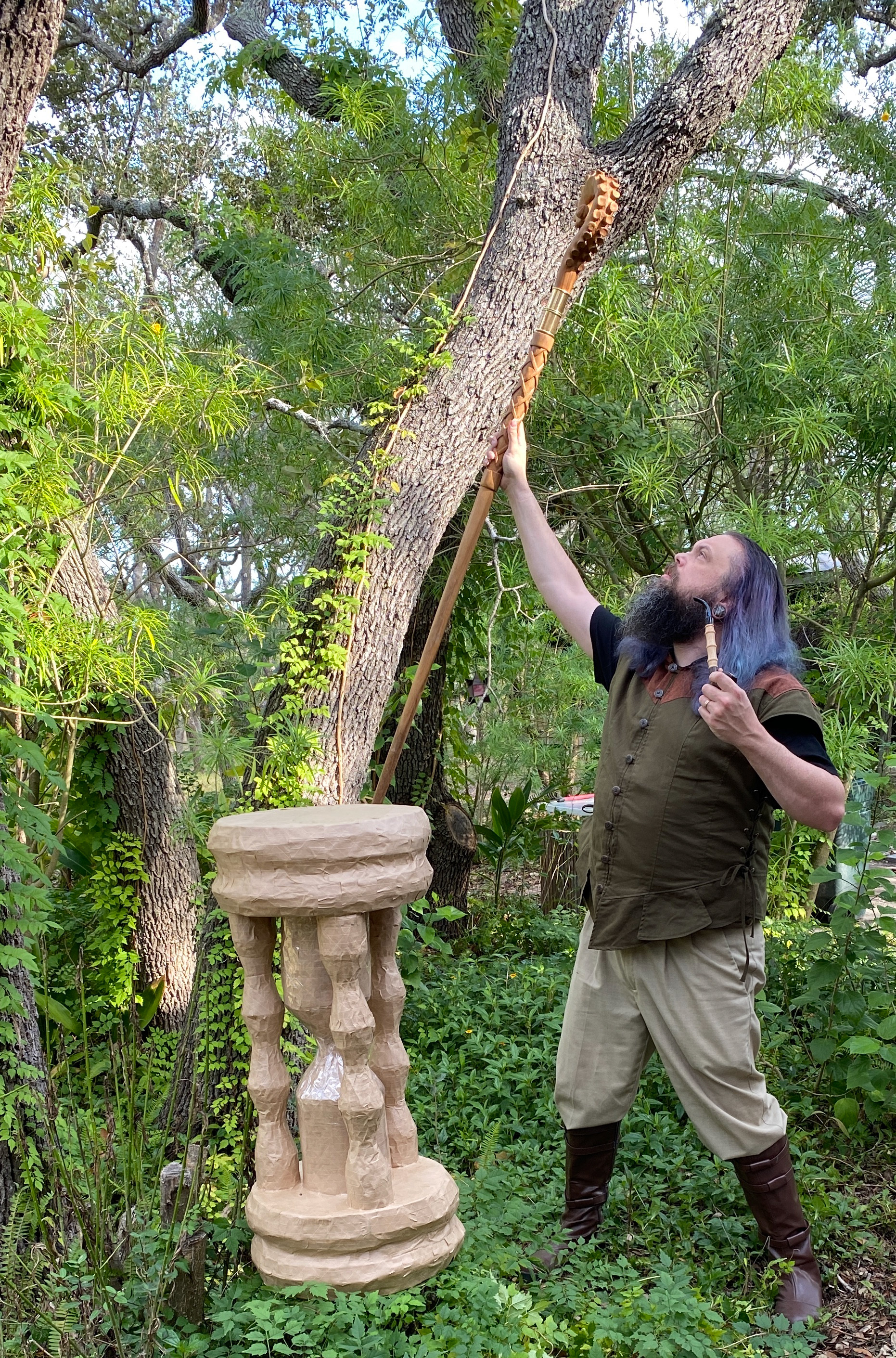
A lone traveler wanders a bizarre, distant land, his fate tied to the cursed hourglass that encumbers him. It is a burden he has been forced to carry. He is unsure what will happen when the last grain of sand falls. Is the strange object counting down the time he has left to complete his quest, or his time left in existence? Either way, he must press on. Such is the fate of those who wander.
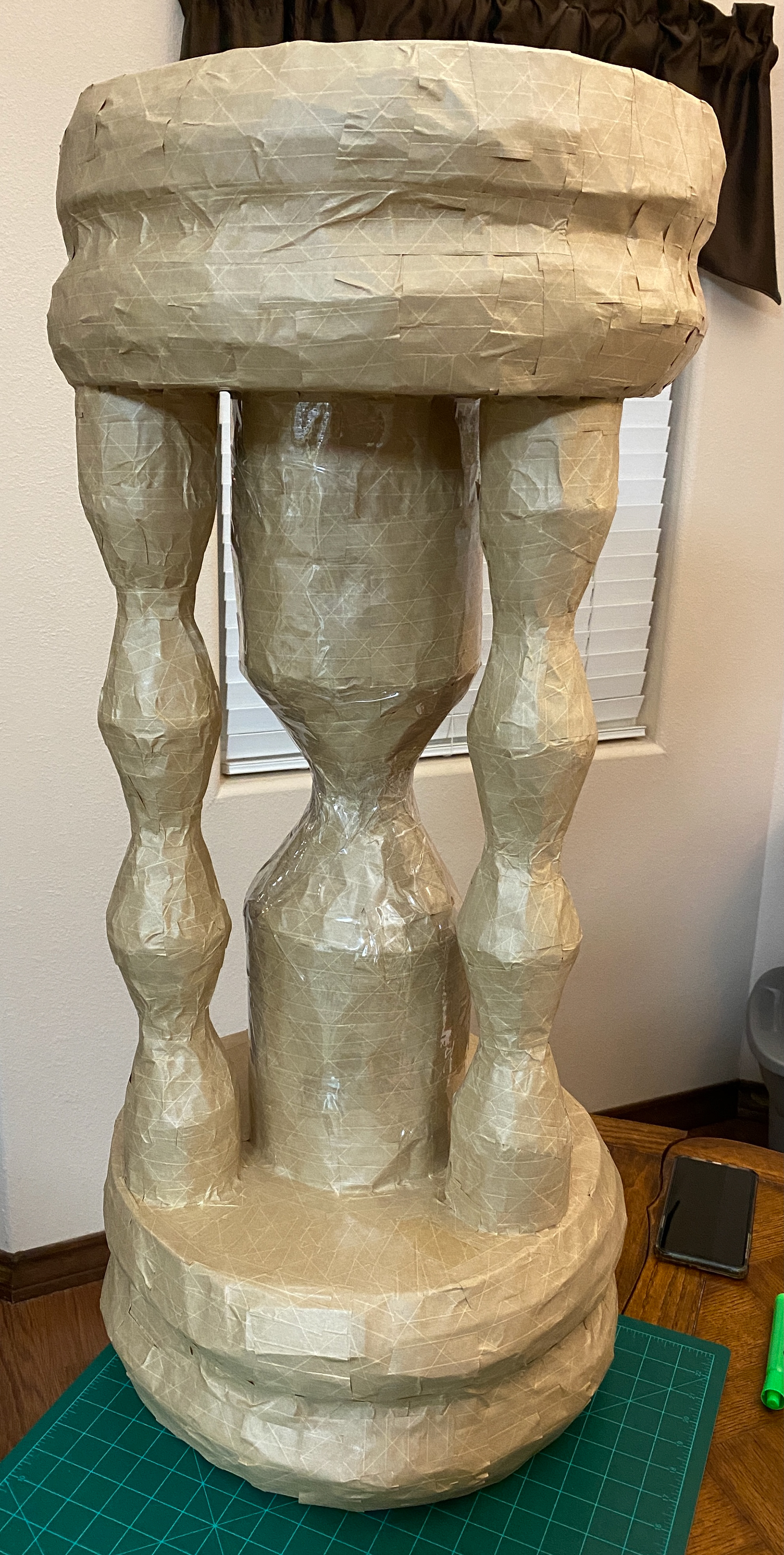
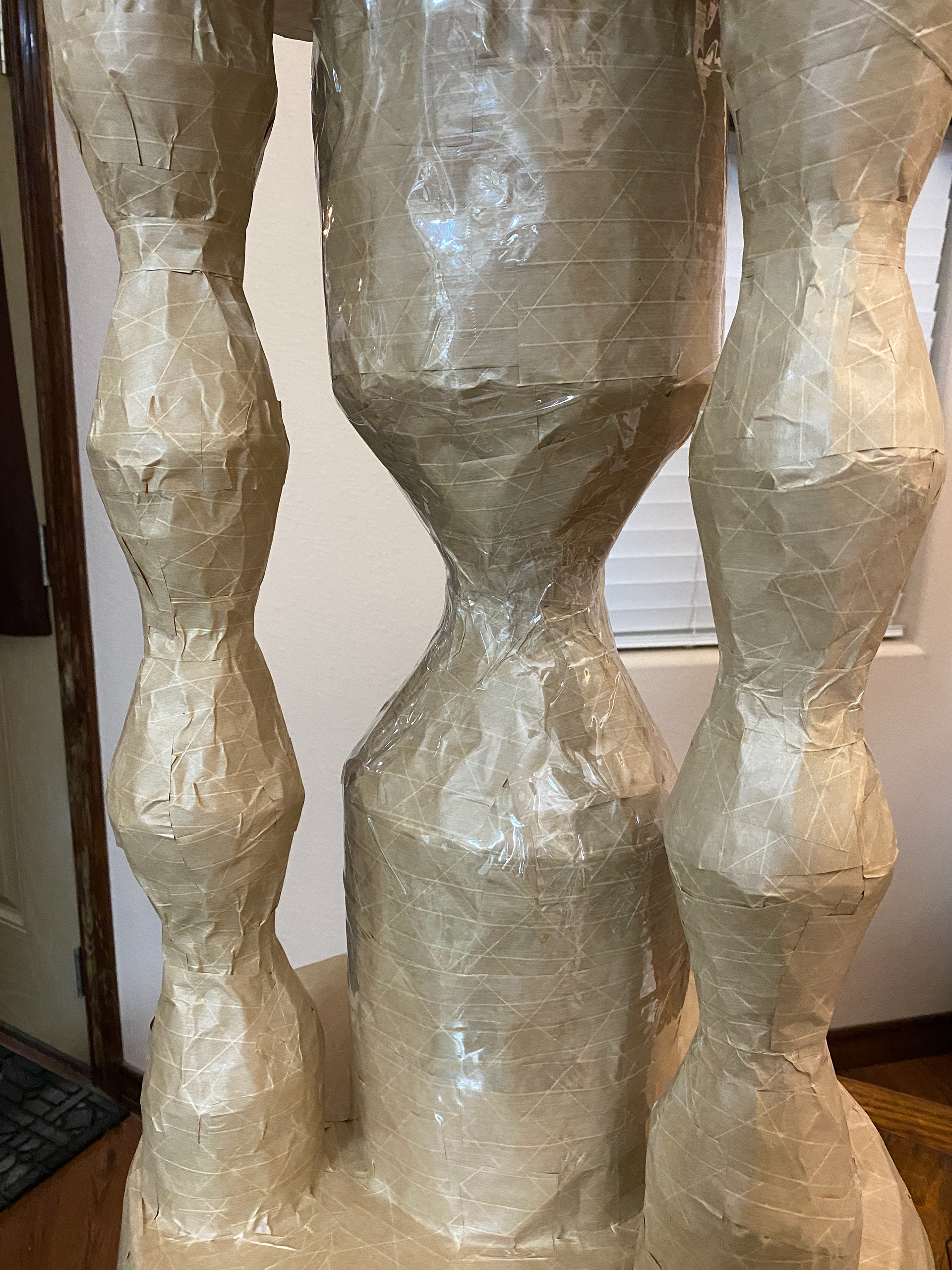
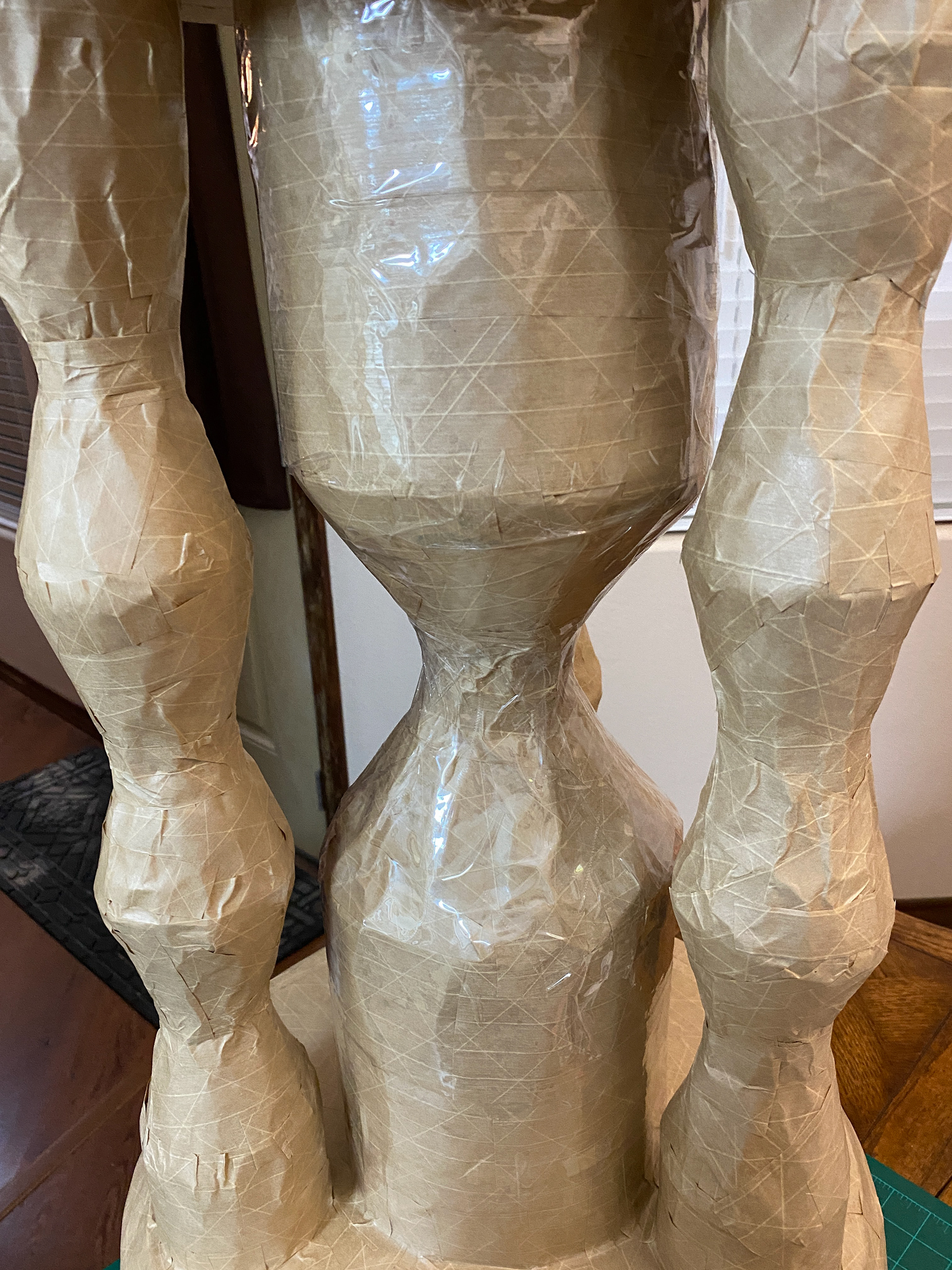
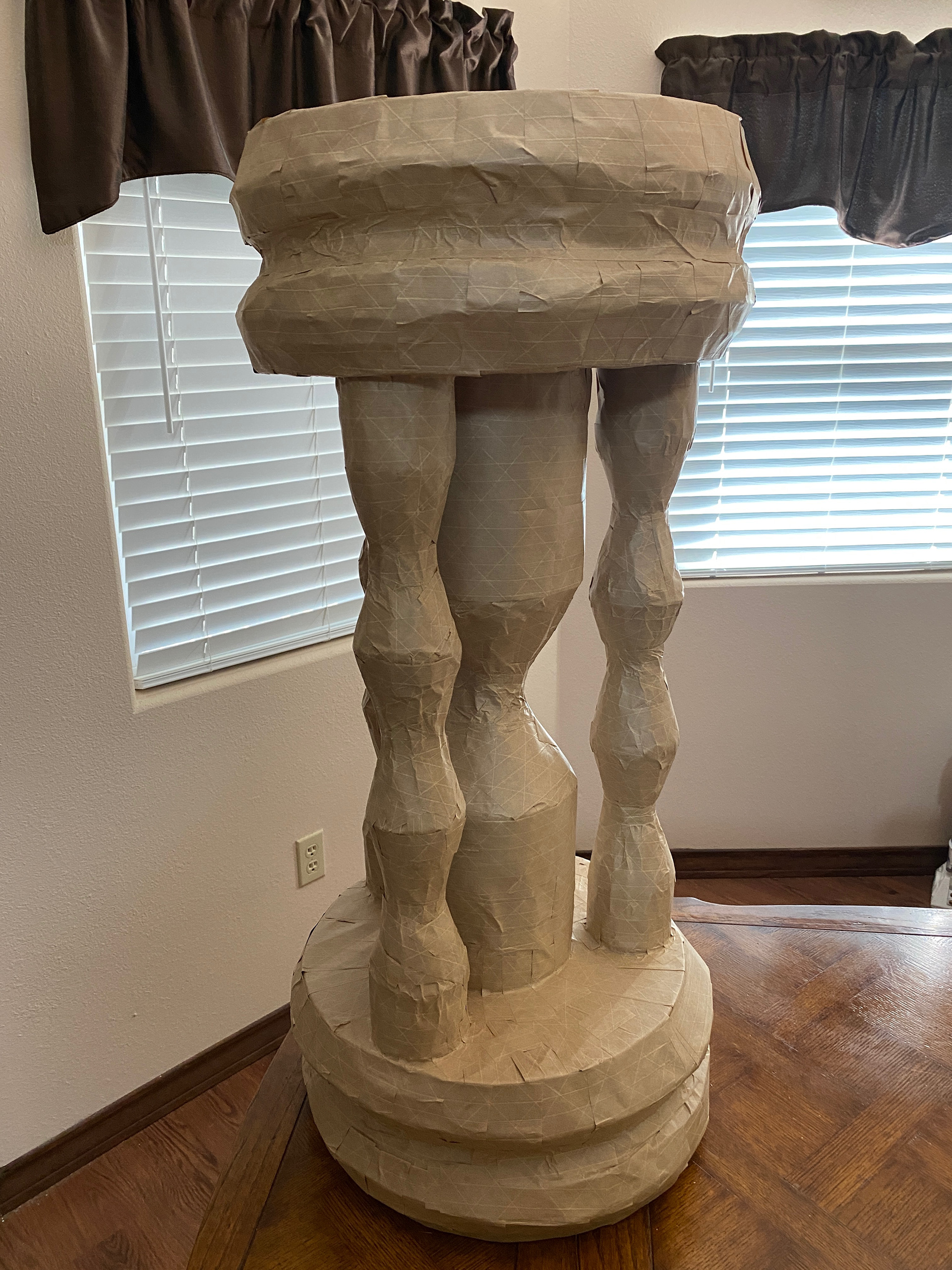
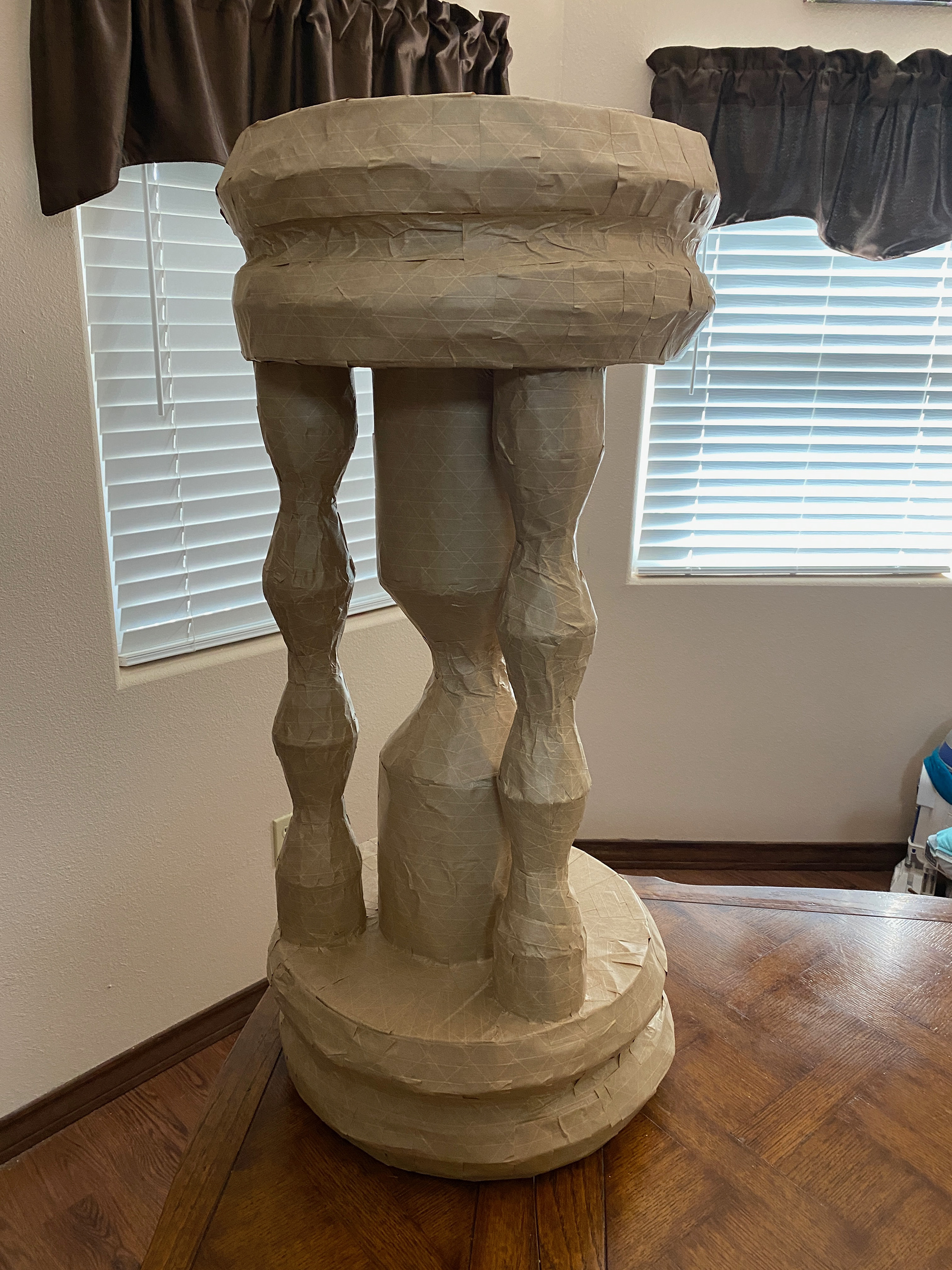
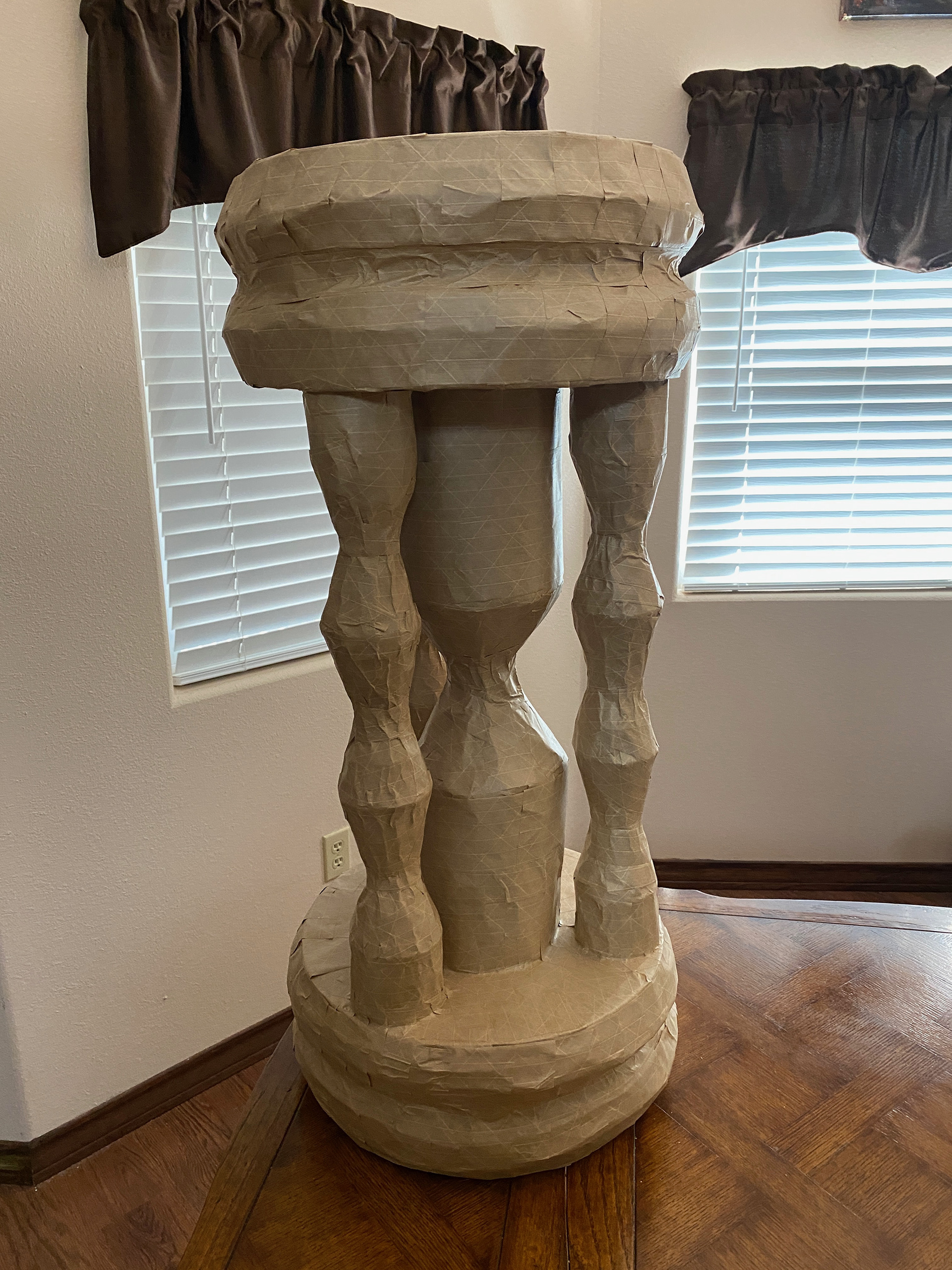
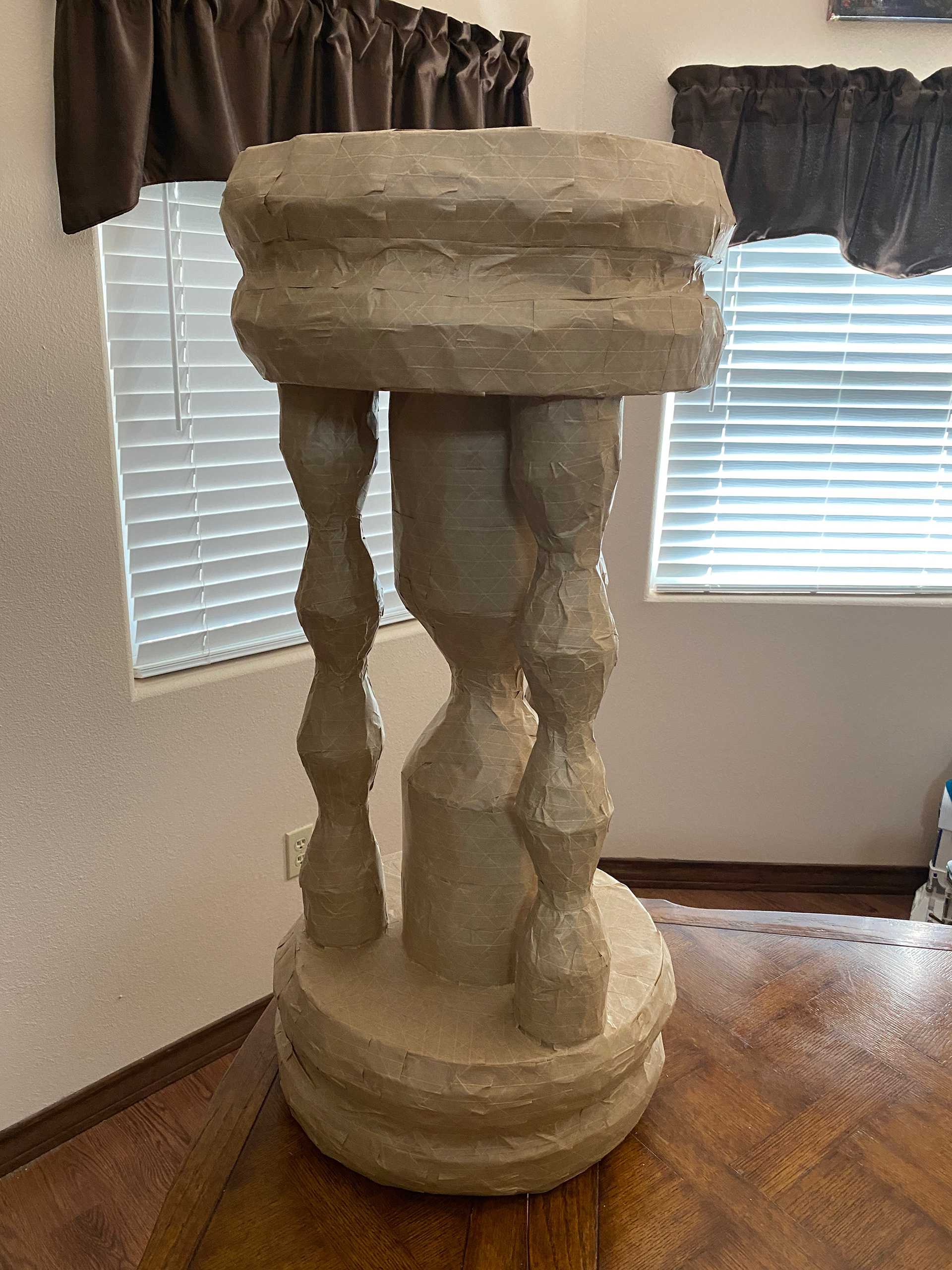
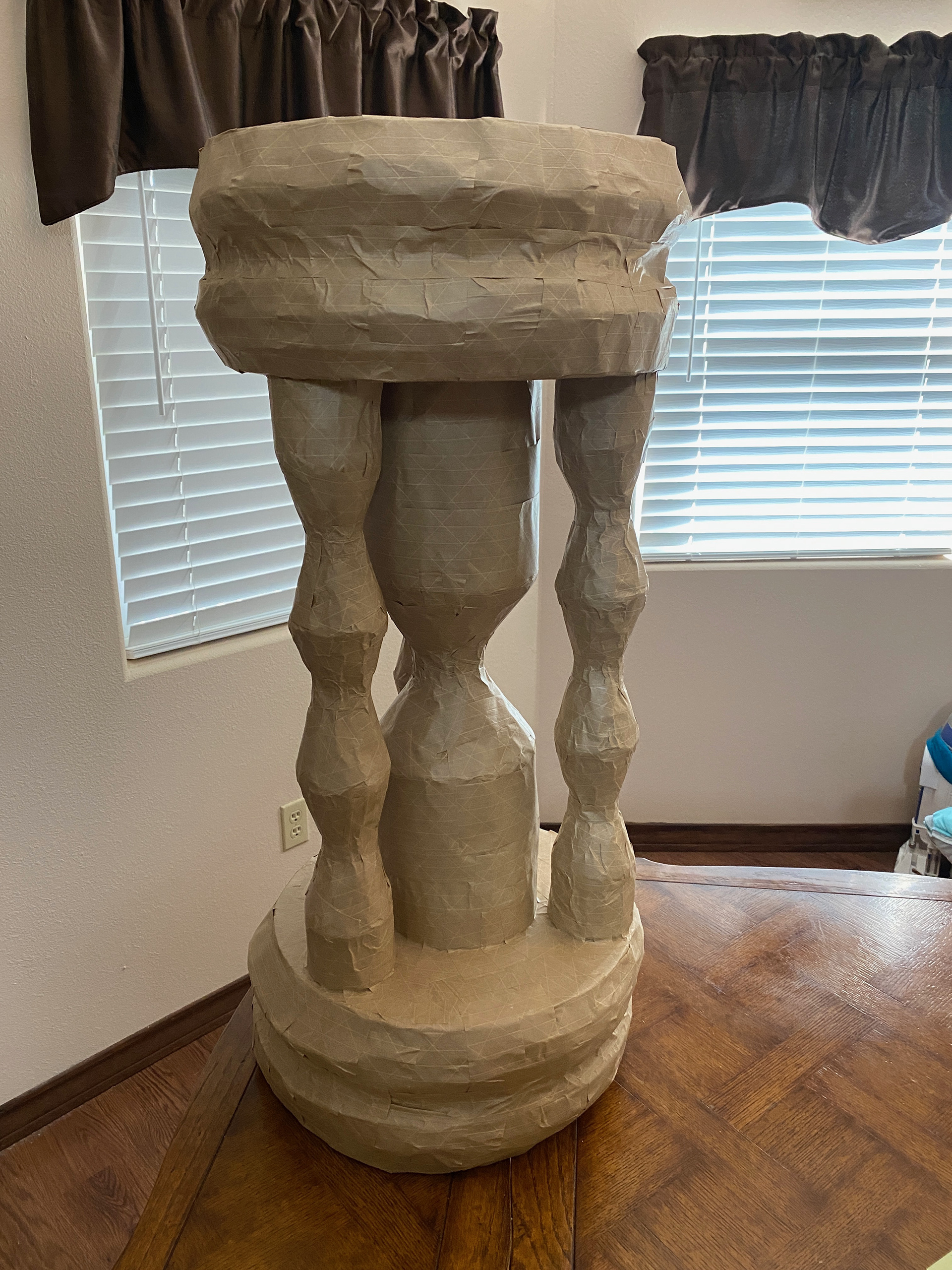
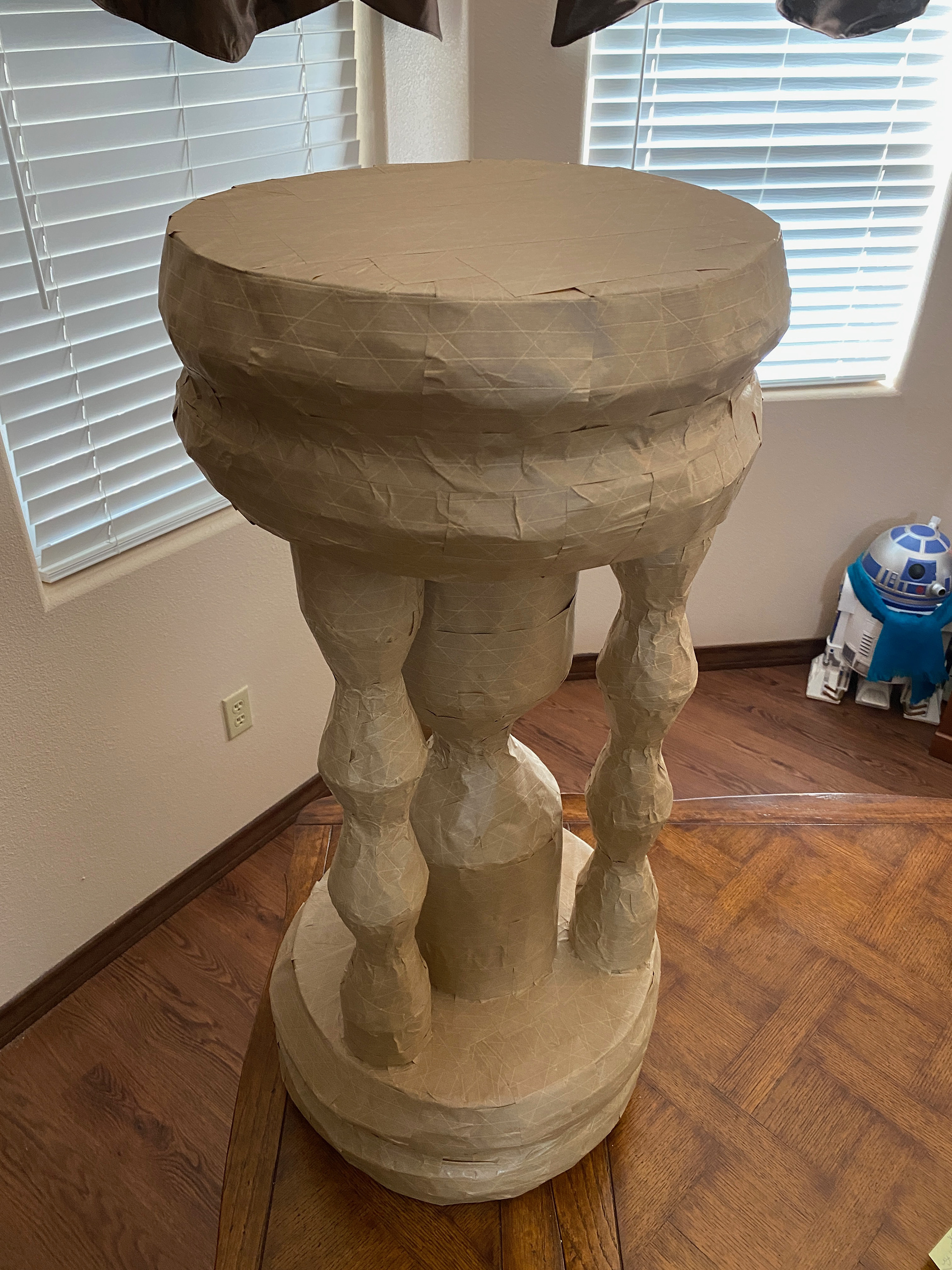
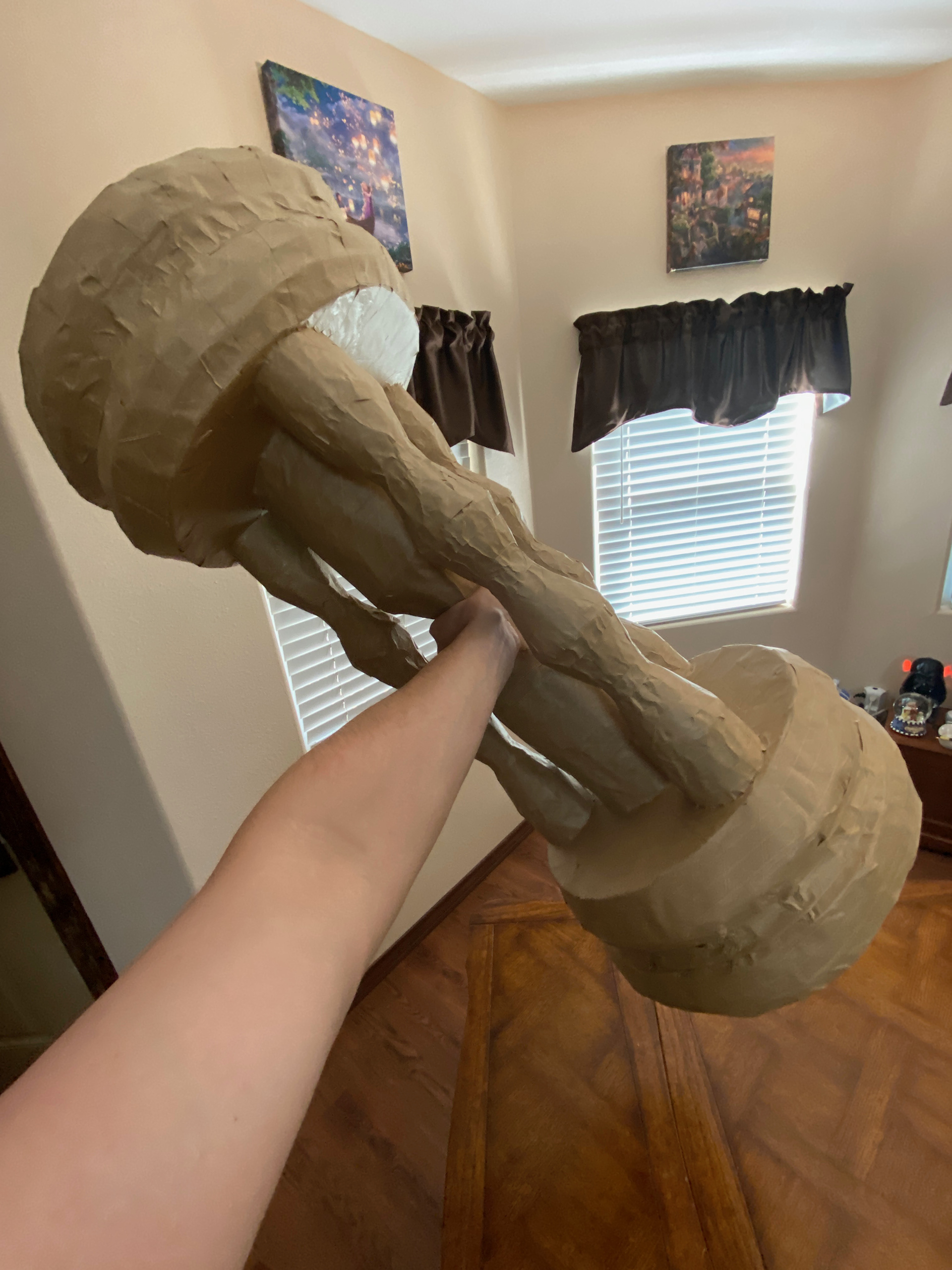
Progress Updates
